gamification
description: the use of game thinking and game mechanics in non-game contexts to engage users in solving problems
98 results

You've Been Played: How Corporations, Governments, and Schools Use Games to Control Us All
by
Adrian Hon
Published 14 Sep 2022
I conclude the book with recommendations on how to design gamification ethically and with respect for its users, along with advice for governments and civil society on the regulation of workplace and coercive gamification. Despite my warnings, I don’t mean to condemn gamification. The worst gamification erodes free will and manipulates us for profit and power. The best gamification treats us as individuals and helps us flourish. Let’s make sure we build the right kind of gamification—where we aren’t being played. CHAPTER ONE THE RISE OF GAMIFICATION The Brothers of the Christian Schools organized a whole micro-economy of privileges and impositions: “Privileges may be used by pupils to gain exemption from penances which have been imposed on them… he will be able to gain exemption from [a penance] by accumulating a certain number of privilege points.”
…
Sherry Wu, “Motivating High-Performing Fleets with Driver Gamification,” Samsara, February 2, 2018, www.samsara.com/blog/motivating-high-performing-fleets-with-driver-gamification; “Gamification Is the Secret to Telematics Success: Fleet200 Industry Speaker Verizon Connect,” FleetNews, June 26, 2018, www.fleetnews.co.uk/news/company-car-in-action/2018/06/27/gamification-is-the-secret-to-telematics-success-fleet200-industry-speaker-verizon-connect. 73. Chris Wolski, “Telematics Gamification Emphasizes Fun over ‘Big Brother,’” Automotive Fleet, October 21, 2015, www.automotive-fleet.com/156349/telematics-gamification-emphasizes-fun-over-big-brother. 74.
…
As memorable and influential as Dance Dance Revolution and The Oregon Trail were, they’re eclipsed by the reach that comes with billions of smartphones: two years after its launch, Stack Exchange attracted over sixteen million unique visitors per month; Nike+’s app and SportWatch had over five million members after just one year.10 And as we continue to build up our physical and digital infrastructure with smartwatches, surveillance cameras, and persistent social network identities, it becomes easier to layer gamification on top of the many types of data that infrastructure collects, not least the health and behavioural data that birthed the “quantified self” movement in 2007.11 This generic application of points, leaderboards, achievements, progress bars, and challenges to diverse, digitally tracked activities—let’s call it “generic gamification”—is not the only kind of gamification in use today. But in my experience, it is the most used type of gamification, for three reasons. First, generic gamification is easy. There’s barely any design involved at all—simply decide whatever behaviour it is that you want to encourage in users (e.g., filling out profiles, going cycling, answering technical questions in a helpful manner) and attach rewards to it, along with punishments for undesirable behaviour.

Actionable Gamification: Beyond Points, Badges and Leaderboards
by
Yu-Kai Chou
Published 13 Apr 2015
Table of Contents Introduction Chapter 1: When the Surreal Blends into our World How a Game changed my Life The First Game I Designed Why Gamification? Human-Focused Design: The Better Term for Gamification The Conquests of Gamification Chapter 2: The PBL Fallacy A Story about Social Media An Obsession with Grunt Work Secondhand Sushi Making A Trojan Horse without Greek Soldiers The Threat and Opportunities in Gamification The Story of the Good Designer vs. Bad Designer Chapter 3: The Octalysis Framework A Gamification Design Framework for Everyone The 8 Core Drives of Gamification Left Brain (Extrinsic Tendency) vs. Right Brain (Intrinsic Tendency) Drives White Hat vs Black Hat Gamification How to Apply Level 1 Octalysis to Actual Systems Quick Intro to Level II Octalysis and Beyond Chapter 4: Putting Gamification in its Place The War on Words Semantics vs.
…
It probably matters more to the expert horticulturist than to people who just care about preparing and eating a healthy and delicious meal. Explicit Gamification: Games that Fulfill Non-Game Purposes Moving away from what is and isn’t gamification, I think it is more productive to differentiate types of gamification into two ways based on how they are executed and how different types of players respond to them. The two types of gamification implementations in my own work are “Implicit Gamification” and “Explicit Gamification.” Explicit Gamification involves strategies that utilize applications that are obviously game-like. Users acknowledge they are playing a game, and generally need to opt into playing.
…
To get the most out of the book, Choose only ONE of the below options to do right now: Easy: Think about what areas in your life that you would like gamification to help you improve. Is it Product, Workplace, Marketing, or Lifestyle Gamification? Medium: Identify a gamification example you have encountered before. Is it Explicit or Implicit Gamification? What are the pros and cons for using that type of implementation? Share what you come up with on Twitter or your preferred social network with the hashtag #OctalysisBook and see what ideas other people have. Wikipedia Article: “Gamification”, accessed 12/13/2014. URL: http://en.wikipedia.org/wiki/Gamification↩ Deterding, Sebastion. “A Quick Buck by Copy and Paste”, Gamification Research Network, Posted 09/15/2011.↩ Zichermann, Gabe.
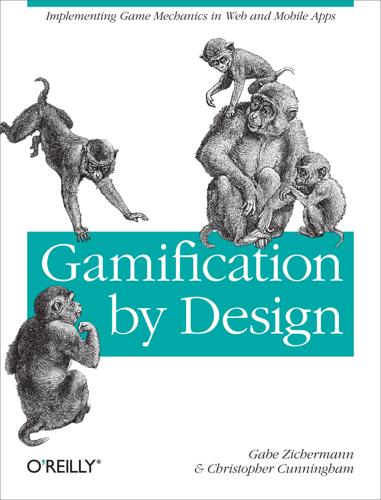
Gamification by Design: Implementing Game Mechanics in Web and Mobile Apps
by
Gabe Zichermann
and
Christopher Cunningham
Published 14 Aug 2011
When products, price, or place are grossly unequal, gamification—and the loyalty it engenders—is much less meaningful. But when you have great product-market fit, gamification can provide a powerful accelerant to your efforts. As with broccoli and children, if given enough time and incentive, we can overcome our natural programming. Not to put too fine a point on it, but why wait? What Gamification Isn’t As we begin our journey into what gamification can do, we also need to be clear about what it cannot do. At least in the scope of this book, gamification is not merely about slapping some badges on your website; you need to take a more thoughtful approach, as advocated here.
…
Flirtation and Romance flow, Flow force fallacy, Powerful Human Motivators, Powerful Human Motivators Speed Camera Lottery, Powerful Human Motivators forums, Power, Planning a Gamification Makeover planning gamification makeover, Planning a Gamification Makeover positions of power for players, Power Foursquare, Foundations, Badges, Empty Bar Problem: Foursquare, Gamification Case Studies, Badges appropriateness for study, Gamification Case Studies Crunked badge, Badges solving empty bar problem, Empty Bar Problem: Foursquare use of badges, Badges freebies (stuff), Stuff frequent-flyer programs, The Evolution of Loyalty friend motivators, Designing the Games friends asking for help (game mechanics), 10.
…
Fame, Getting Attention Z Zynga, Foundations, The Evolution of Loyalty About the Authors Gabe Zichermann is an author, public speaker, serial entrepreneur, and the foremost expert on the subject of gamification. His book, Game-Based Marketing (Wiley, 4/2010) has achieved critical and industry acclaim for its detailed look at innovators who blend the power of games with brand strategy. Zichermann is also the author of the Gamification Blog at http://gamification.co and chair of the Gamification Summit and Workshops. Christopher Cunningham is a software architect and developer who helped found ChroniQL, an early gamification solution; beamME, a mobile social application; and TrekMail, a breakthrough mobile email/text application.

To Save Everything, Click Here: The Folly of Technological Solutionism
by
Evgeny Morozov
Published 15 Nov 2013
As ugly as it sounds, marketers have eagerly embraced the gamification trend—a recent survey shows that while two-thirds of them don’t understand what “gamification” means, 78 percent believe customers are more likely to respond to game incentives. A survey by Gartner echoes these findings and predicts that by 2015, more than 50 percent of organizations that manage innovation processes will gamify them, rewarding customers and employees for suggestions. Some believers think that gamification can even solve problems like global warming, which is what Seth Priebatsch of the gamification startup SCVNG predicted at the South by Southwest Conference in 2011.
…
No wonder venture capitalists love gamification: it’s the kind of solution that aggravates some existing healthcare problems—but does so in an extremely profitable way. Well, at least Chang is not hiding the fact that gamification is something akin to hypnosis and allows us to get the “right” outcomes by circumventing the usual deliberative and policy channels. As he put it in the same interview, “You almost need to ‘trick’ the masses into being healthy, and gamification is a great way to do this.” It won’t be surprising if politicians start jumping on the gamification bandwagon the way they jumped on the nudging bandwagon a few years ago: when all other instruments of policy have been tried, gamification, whatever its ethical problems, offers the prospect of easy—even pleasant—fixes.
…
Likewise, the point about the potentially corrosive impact such schemes have on character holds as well: sometimes we want citizens to do the right thing for the right reason, not just because it’s more fun than playing Angry Birds. Skimming through gamification literature can be both frustrating and instructive, for it shows the rhetorical tricks deployed by game enthusiasts to promote their schemes and the inherent limitations of their mind-set. Take Gamification by Design by game designers Gabe Zichermann and Christopher Cunningham. One has to praise the book—something of a primer on gamification—for being completely transparent about its Skinnerian philosophy: the cover features five playful monkeys, who presumably are on their way to being gamified. Like most gamification literature, this book, from the very outset, blurs any distinction between games and play and posits that both are natural and inevitable.
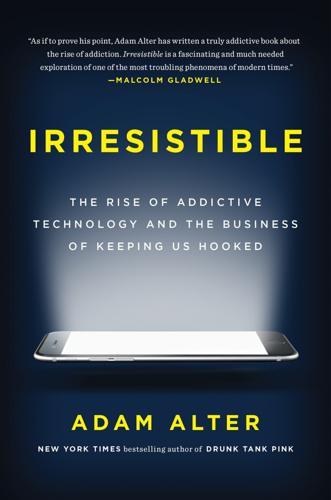
Irresistible: The Rise of Addictive Technology and the Business of Keeping Us Hooked
by
Adam L. Alter
Published 15 Feb 2017
It was possible that Lumos’ games warded off cognitive decline, but the evidence was scant, and Lumos had overclaimed. Even if gamification works, some critics believe it should be abandoned. Ian Bogost, a game designer at Georgia Tech, spearheads this movement. In 2011, he delivered a talk at a gamification symposium at Wharton. He titled his talk “Gamification Is Bullshit.” Bogost suggested that gamification “was invented by consultants as a means to capture the wild, coveted beast that is video games and to domesticate it.” Bogost criticized gamification because it undermined the “gamer’s” well-being. At best, it was indifferent to his well-being, pushing an agenda that he had little choice but to pursue.
…
Even if you aren’t motivated to donate to a food charity, or to learn new words, you should want to spend your time playing FreeRice. Over time, despite yourself, you’ll find that you are learning and donating rice. Gamification researchers Kevin Werbach and Dan Hunter examined over one hundred examples of gamification, and identified three common elements: points, badges, and leaderboards. PBL, as the triad is known, first came together in airline frequent-flyer programs. United launched the first airline loyalty program in 1972, long before the advent of gamification, and other airlines soon introduced similar programs. With each flight or qualifying purchase, flyers earn points in the form of miles; when they earn enough points in a single year, they win badges in the form of status markers—silver, gold, platinum, and so on; and high-status members stand in different lines, board the plane first, and sometimes receive special treatment on the airplane—rewards that function as a conspicuous leaderboard.
…
It gives medical patients respite from pain, schoolkids relief from boredom, and gamers an excuse to donate to the needy. By merely raising the number of good outcomes in the world, gamification has value. It’s a worthwhile alternative to traditional medical care, education, and charitable giving because, in many respects, those approaches are tone-deaf to the drivers of human motivation. But Ian Bogost was also wise to illuminate the dangers of gamification. Games like FarmVille and Kim Kardashian’s Hollywood are designed to exploit human motivation for financial gain. They pit the wielder of gamification in opposition to the gamer, who becomes ensnared in the game’s irresistible net. But, as I mentioned early in this book, tech is not inherently good or bad.

What Algorithms Want: Imagination in the Age of Computing
by
Ed Finn
Published 10 Mar 2017
Wark, Telesthesia, 166. 18. “Company Info | Facebook Newsroom”; “Internet Used by 3.2 Billion People in 2015.” 19. Galloway, The Interface Effect, 135. 20. On social rituals in virtual worlds, see Hillis, Online a Lot of the Time; on gamification in the workplace see, for example, Kumar and Raghavendran, “Gamification, the Finer Art”; Rauch, “Best Practices for Using Enterprise Gamification to Engage Employees and Customers.” 21. “Essential Facts about the Computer and Videogame Industry: 2014 Sale, Demographic and Usage Data.” 22. Castronova, Synthetic Worlds, 147. 23. Galloway, Gaming, 17. 24. Nardi, My Life as a Night Elf Priest, 26, 17. 25.
…
They are authoring and creating, but they are also simplifying and abstracting, creating an interface layer between consumers and the messy process of, say, getting a cab or hiring a housekeeper. Chapter 4 begins with Ian Bogost’s satirical Facebook game Cow Clicker and its send-up of the “gamification” movement to add quantification and algorithmic thinking to many facets of everyday life. Such games trouble the boundaries between work and play, as do much more serious forms of gamification like Uber and the high-tech warehouse workers whose every second and step are measured for efficiency. Taken together, these new models of work herald a novel form of alienated labor for the algorithmic age.
…
Since those early days, “social gaming” has become more sophisticated and more profitable, drawing the attention of a huge range of actors, from major videogame studios to social activists, all hoping to catalyze particular forms of cultural work among millions of people. As social gaming has risen to become a significant market in its own right, the boundary lines of play continue to blur. This transition has often been framed through the term “gamification”—the idea of using cause and effect mechanisms inspired by game-play to encourage particular behaviors. As one leading advocate defines it, gamification can be thought of as using some elements of game systems in the cause of a business objective. It’s easiest to identify the trend with experiences (frequent flyer programs, Nike Running/Nike+ or Foursquare) that feel immediately game-like.

Exponential Organizations: Why New Organizations Are Ten Times Better, Faster, and Cheaper Than Yours (And What to Do About It)
by
Salim Ismail
and
Yuri van Geest
Published 17 Oct 2014
* ( ) We use standard techniques like PR to increase awareness ( ) We leverage social media for marketing purposes ( ) We use gamification and incentive competitions to turn crowd into community ( ) Our products and services are inherently designed to convert crowd into Community (e.g. shareable memes like the Lyft mustache or Hotmail signature) 7) To what extent do you use Gamification or Incentive Competitions?* ( ) We use gamification/incentive competitions for internal motivation only (e.g. salesperson of the month) ( ) We use basic gamification externally (e.g. loyalty programs, frequent flyer programs) ( ) We build gamification/incentive competitions into our products and services (e.g.
…
Engaging gamers, however, requires more than just throwing a game up on a website and letting gamers have at it. “Gamification should empower people, not exploit them. It should feel good at the end of the day because you made progress towards something that mattered to you.” To be successful, every gamification initiative should leverage the following game techniques: Dynamics: motivate behavior through scenarios, rules and progression Mechanics: help achieve goals through teams, competitions, rewards and feedback Components: track progress through quests, points, levels, badges and collections Gamification is not only used to tackle challenges and problems with the help of a community, it can also be used as a hiring tool.
…
The platform achieved a voluntary participation rate of over 95 percent, and even as the number of stores and employees increased over time, safety incidents and claim counts fell more than 45 percent, and theft and human errors dropped 55 percent. As safety became a top focus at Pep Boys, its culture completely shifted. Gamification initiatives can be created from the ground up (as illustrated by EyeWire), but there are also many startups and companies providing services that an organization can simply adopt and leverage, just as Pep Boys did with Axonify. The Gamification Company provides a list with more than ninety examples, including Badgeville, Bunchball, Dopamine and Comarch. Organizations can also use work.com (a Salesforce company), in which gamification is fully integrated, or Keas, which was specifically created to improve employee wellness.
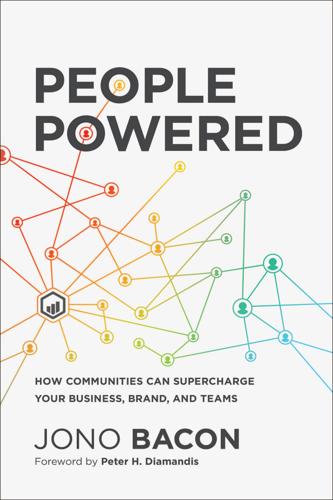
People Powered: How Communities Can Supercharge Your Business, Brand, and Teams
by
Jono Bacon
Published 12 Nov 2019
Peloton promotes new challenges when you turn on the screen. Discourse has badges integrated into user profiles. PlayStation has trophies on the main screen. Make it simple for your community members to see what gamification opportunities are available, step-by-step instructions for how to accomplish them, where they can get help in doing so, and any other information. 3. Gamification needs a clear path forward. When you design a gamification system, it is easy to find dependencies. For example, if you want to gamify someone submitting an idea in a community for the first time, you may want to first gamify them registering an account.
…
Units 80 Owner Sarah Jones Status In Progress Quarter Q2 Persona Developer Goal Contributing first new feature to the project Type Stated Condition First code branch is merged into the project Reward(s) Thanks email from engineering lead Unit Cost $0 Est. Units 50 Owner Dave Rogers Status Available to Members GAMIFICATION A while back I was at an Ubuntu Developer Summit in Europe and a few colleagues and I were bouncing around the idea of some kind of gamification system for Ubuntu. The idea was simple: when people participated in Ubuntu in different ways, we would provide them with badges that they could collect. As with all simple ideas, there was a lot of complexity buried under the surface.
…
This taught me a lot about striking the right balance of incentives and communal collaboration. Out of this work, and studying gamification in other communities (e.g., multiplayer games, exercise groups, and others), I recommend you follow a key set of rules. 1. First, focus on onboarding and skills acquisition. For example, you could gamify setting up a new profile, producing a first piece of content, answering your first question, running your first event, or something else. Don’t gamify based on repetition of activity (e.g., tenth post, one hundredth post, one thousandth post) as this can be easily abused. 2. As you design your gamification platform, discovery is critical. Peloton promotes new challenges when you turn on the screen.

50 Future Ideas You Really Need to Know
by
Richard Watson
Published 5 Nov 2013
Angelina Chapin, writer and journalist According to Gartner, a respected information technology research and consulting firm, more than 50 percent of companies will add gamification techniques to their innovation processes by 2015. Deloitte, one of the top four professional services firms, has named gamification as one of its major technology trends, and M2, a research firm, has predicted that American companies will spend $2.8 billion on gamification by the year 2016. There is, of course, a danger that anything hyped to this extent will soon crash and burn, but in the meantime expect gamification design to emerge as a highly sought-after skill. Also expect cash-strapped governments, in particular, to embrace gamification as a further way to nudge people in the direction of certain choices, especially those relating to individual decisions about healthcare provision and retirement savings.
…
the condensed idea Terribly tiny technology timeline 2020 Hugely efficient solar energy using new nanomaterials 2025 Nanotechnology materials used in 35 percent of consumer products 2040 Computers billions of times faster than anything currently available 2042 Claytronic products make commercial debut 2046 Ford introduce cars that can change color 2050 First commercially available PMU unveiled 2065 Common foodstuffs assembled via nanotech, not grown naturally 2099 Elimination of 99 percent of diseases 19 Gamification Increasingly, organizations are turning to gamification: the application of online gaming techniques, such as gaining points or status, to engage the attention or alter the behavior of individuals or communities. Wearable devices linked to gamelike systems could, for instance, induce overweight people to take more exercise or eat healthy foods. Gamification works on three principles: First, people can be competitive (with themselves and with others). Second, people will share certain kinds of information.
…
You’ll just get a gold star or a smiley face, like you did back in primary school. Smart or sinister? On one level, gamification is a smart tool to encourage people to do what’s in their best interest over the longer term. On the other hand, it can be seen as a manipulative way of getting individuals to conform to a subjective set of rules or goals or suit short-term commercial interests or to secretly collect data about user behavior or location. What if, for instance, participation in certain games was to become mandatory? Gamification started in the media, then spread to fitness, but what if health and well-being applications are indeed embraced by governments (or private medical insurance companies), which remove access to certain services unless individuals reach certain “levels” or targets?

Going Dark: The Secret Social Lives of Extremists
by
Julia Ebner
Published 20 Feb 2020
Today’s statistics speak for themselves: in 2018, roughly as many far-right extremists as Islamist extremists received support from the UK government’s prevention programme ‘Channel’.3 Germany now counts as many as 12,700 potentially violent far-right extremists, according to the latest report of the Interior Ministry.4 And in the US, every single extremism-related murder of 2018 was linked to at least one right-wing extremist movement.5 What was new in Christchurch, however, was the escalation of gamification: the appropriation of gaming elements for terror, the use of violence at the intersection of fun and fear. Gamification – adding game elements to products, services or activities that have nothing to do with games – is a fairly novel concept. When Kellogg’s first started putting little games as prizes into its breakfast-cereal boxes in 1910, the idea became an instant hit. By the 1950s, gamification as an employee motivator was born. The sociologist Donald F. Roy demonstrated how a daily routine game in which factory workers steal bananas leads to higher job satisfaction and productivity.
…
Roy demonstrated how a daily routine game in which factory workers steal bananas leads to higher job satisfaction and productivity. A hundred years after Kellogg’s gamification of cereal purchases, few employers, marketing agencies and political organisations are not using gamification to attract and keep recruits, customers or voters. Almost everything is gamified today, and that includes terrorism.6 ISIS were among the first militant groups to gamify their propaganda: they photoshopped jihadi soldiers on to Call of Duty game ads and produced their own video games for recruitment. And it has escalated from there. The Christchurch livestream quickly went viral.
…
Available at https://www.telegraph.co.uk/culture/film/3559727/The-Wave-the-experiment-that-turned-a-school-into-a-police-state.html. 15Michael Sailer et al., ‘How gamification motivates: An experimental study of the effects of specific game design elements on psychological need satisfaction’, Computers in Human Behavior, 69, April 2017, pp. 371–80. Available at https://www.sciencedirect.com/science/article/pii/S074756321630855X. 16Jarret Brachman and Alix Levine, ‘The World of Holy Warcraft: How Al Qaida is using online game theory to recruit the masses’, Foreign Policy, 13 April 2011. Available at https://foreignpolicy.com/2011/04/13/the-world-of-holy-warcraft/. 17Linda Schlegel, ‘Playing jihad: The gamification of radicalization’, Defense Post, 5 July 2018.
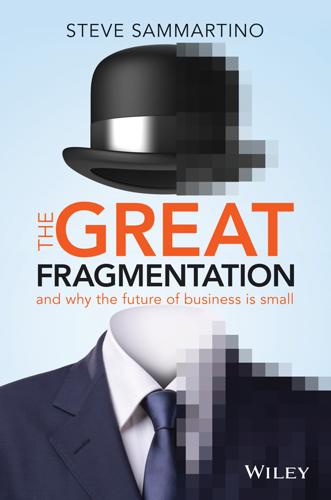
The Great Fragmentation: And Why the Future of All Business Is Small
by
Steve Sammartino
Published 25 Jun 2014
We’re all still playing the games right now, but like many aspects of commerce, we go deep into the wormhole before we realise it. Gamification not only becomes possible in a connected and social world, it’s inevitable. If I could draw an analogy for gamification, it would be this: Pong is to consoles, what Angry Birds is to gamification. Gamification is all about intersecting behavioural economics and game design methodology for a commercial outcome. When we think about it deeply, it’s not too far removed from commerce in general. What is business other than anthropology with a scoreboard? Gamification is much more about anthropology than it is about technology, but the two elements of anthropology and technology are starting to conspire to create new commercial platforms that, when used well, have the ability to circumvent currency while also creating purchasing power.
…
Notes 1 www.businessinsider.com.au/how-much-time-do-we-spend-on-smartphones-2013-6 2 Collins English Dictionary — Complete & Unabridged 10th Edition 2009 © William Collins Sons & Co. Ltd. 1979, 1986 © HarperCollins Publishers 1998, 2000, 2003, 2005, 2006, 2007, 2009 CHAPTER 14 The big game: an introduction to gamification Gamification entered the business parlance a few years ago when some successful web-based businesses, or more accurately, web apps and web-based properties started to rise to prominence. In some ways it actually faded away as a hot digital topic before it took hold the way other arenas and terminology — such as crowdfunding — did.
…
Unstable yet permanent Crowdfunding Redefining decision authority Unearthed economic value Don’t expect a rush on the banks Do expect marginalisation Chapter 13: The 3-phase shift: a closer look at the web The phases Evolution at warp speed Inventing and stealing time Immature technology The web of things It’s already begun Will everything be connected? Then what? What’s first? The physical mash-up If-this-then-that living Ambient sharing Notes Chapter 14: The big game: an introduction to gamification Child’s play Digital game grooming More than a niche Games are for nerds, right? Friday night lights Yes, but it’s different Emotions + incentive = shaped behaviour People won’t share that stuff Bursting into reality Rising realism Doing > having The gaming mentality The sixth sense Our decentralised nervous system Start making sense Product = computer Mash-up heaven The seed is planted Not if, but when and who Chapter 15: System hacking: a great idea with a bad reputation Hacking defined Hacker culture Hacking is inevitable Retail hacking Industry hacking My favourite media hack Why we have to self-hack Step forward MOOCs Yes, but they’re not-for-profits Chapter 16: The job, the factory and the home: how location follows technology From the city, to the suburbs, to wherever Along came Henry The end of offices History repeats Work options Offices, control and profits A better office offer Idea diffusion The office is not immune The last industrial relic Chapter 17: A stranger from Romania: building a real Lego car A new low for the internet Digital tenacity Marketing rocket science The Super Awesome Micro Project The hourglass strategy The human motive An open-ended strategy Chapter 18: Market-share folly and industrial fragmentation: industrial metrics Market-share folly The key assumption = we know the market Software is eating the world Did they see them coming?
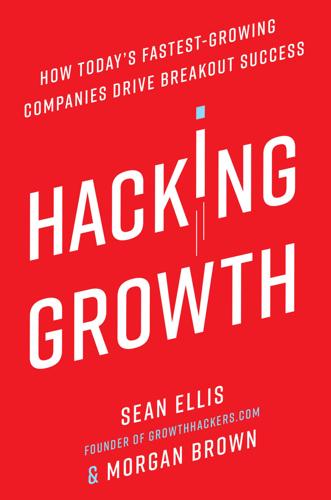
Hacking Growth: How Today's Fastest-Growing Companies Drive Breakout Success
by
Sean Ellis
and
Morgan Brown
Published 24 Apr 2017
Neil Patel talk at Search Engine Journal Summit, slideshare.net/SearchEngineJournal/1-neil-patel-final. 9. “How Adobe Converted Free Trial Downloads into Satisfied Customers,” Bunchball (blog), 2016, bunchball.com/customers/adobe. 10. Adam Kleinberg, “Brands That Failed with Gamification,” iMedia, July 25, 2012, imediaconnection.com/articles/ported-articles/red-dot-articles/2012/jul/brands-that-failed-with-gamification/. 11. Gabe Zichermann, “Cash Is for SAPS,” Gamification (blog), October 18, 2010, gamification.co/2010/10/18/cash-is-for-saps/. 12. Jen Wieczner, “Starbucks Cards Now Have More Money Than Some Banks,” Fortune, June 10, 2016. 13. BJ Fogg’s Behavior Model, “What Causes Behavior Change?”
…
Patel recommends no more than five, and making them multiple-choice rather than open-ended, with no more than four possible answers each. Including images and visuals will also likely improve engagement. And as with all hacks, these mini questionnaires should be put through the process of rigorous experimentation. GAMIFICATION PROS AND CONS Gamification is, in essence, offering rewards, such as perks and benefits not available to all people, to customers for taking certain actions. Adobe, for example, used gamification in their activation hacking to increase the number of people who took a free trial of Adobe Photoshop and then purchased the product. The company launched LevelUp for Photoshop, which was a new user experience that turned boring tutorials into “missions” for trial users to complete.
…
Adobe saw a 4x increase in trial to purchase from the effort.9 By adding a pleasing element of challenge and fun, and also offering meaningful rewards, gamification can be a powerful activation tool, but it can also backfire. If rewards offer no value, or value that has little relevance to the core value experienced by users (i.e., don’t achieve product/incentive fit), then the tactic can come across as blatantly manipulative, or just downright strange. That was true for a gamification effort that online shoe retailer Zappos launched for their VIP program. The company was trying to create a new level of higher-frequency shoppers; they tried to gamify the shopping experience by offering badges for doing things like favoriting a shoe model and buying multiple pairs, but the badges offered no value—no higher discounts or other benefits—and left customers confused, leading Zappos to ultimately shutter the effort.10 Brian Wong, founder of Kiip, a company that helps mobile apps provide rewards to their users, says that gamification should be thought of as a toolkit of options to choose from, rather than a predefined set of tactics that work for all businesses.

Collaborative Society
by
Dariusz Jemielniak
and
Aleksandra Przegalinska
Published 18 Feb 2020
Quantified Self encourages more proactive self-management when it comes to healthcare by engaging with health-related communities that operate in a playful, gamified manner, such as Care Opinion in the United Kingdom and ZorgKaartNederland in the Netherlands.32,33 Both platforms offer ratings for healthcare facilities based on clinical performance and the personal experiences and feedback of patients. They use gamification practices—such as personalized videos, links to live animation, and story telling, all of which fall under the umbrella of play—to foster the collecting, collating, and analyzing of minute quantified data, all of which come back to the users in the form of suggestions about how to take better self-care. The platforms use visual cues and icons to link to cross-referenced information so users can discover relevant topics and get feedback for behavior modification. On this platform gamification certainly plays an important role in making tracking more collaborative.
…
Continuing the discussion about participative and spontaneous participation in DIY movements and self-tracking in chapter 7, “Collaborative Gadgets,” we describe the various uses of widely available tracking technologies. We examine the principles of the Quantified Self movement and position it within the collaborative society approach. Then we look at various gamification models that rely on wearable trackers and discuss how they affect social behavior. Finally, we refer to the emerging electroencephalography (EEG) self-tracking communities and discuss the whole concept of collaborative tracking as an idea that could one day replace self-tracking. In our eighth chapter, “Being Together Online,” we consider how the new, internet-intermediated forms of social relations reshape the ways in which people interact.
…
This process characterizes what is often (and more accurately) called a gig economy: an entirely contingent workforce, available on-demand, and—thanks to advanced IT systems—ready to fulfill the “just-in-time” philosophy of workflow and inventory.29 (See figure 1 for a comparison of interest shown in the terms gig economy and sharing economy.) A contingent workforce, by the way, operates with radical information asymmetry: in this context specifically, workers are at a disadvantage because they deal with corporations that create an extensive system of gamification and psychological trickery to coerce “contractors” into working longer hours.30,31 A contingent workforce also faces an unprecedented power asymmetry that allows corporations to intercept most of the value generated by independent workers.32 Moreover, that exploitation is highly gendered and racialized.33 Silicon Valley is using technology to build a new global underclass, forced to perform what Mary L.
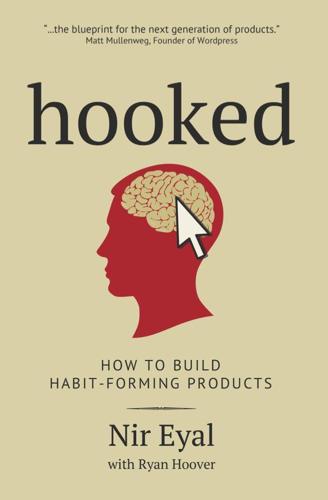
Hooked: How to Build Habit-Forming Products
by
Nir Eyal
Published 26 Dec 2013
Only by understanding what truly matters to users can a company correctly match the right variable reward to their intended behavior. Recently, gamification—defined as the use of gamelike elements in nongame environments—has been used with varying success. Points, badges, and leaderboards can prove effective, but only if they scratch the user’s itch. When there is a mismatch between the customer’s problem and the company’s assumed solution, no amount of gamification will help spur engagement. Likewise, if the user has no ongoing itch at all—say, no need to return repeatedly to a site that lacks any value beyond the initial visit—gamification will fail because of a lack of inherent interest in the product or service offered.
…
Christopher J. Carpenter, “A Meta-analysis of the Effectiveness of the ‘But You Are Free’ Compliance-Gaining Technique,” Communication Studies 64, no. 1 (2013): 6–17, doi:10.1080/10510974.2012.727941. 25. Juho Hamari, “Social Aspects Play an Important Role in Gamification,” Gamification Research Network (accessed Nov. 13, 2013), http://gamification-research.org/2013/07/social-aspects. 26. Josef Adalian, “Breaking Bad Returns to Its Biggest Ratings Ever,” Vulture (accessed Nov. 13, 2013), http://www.vulture.com/2013/08/breaking-bad-returns-to-its-biggest-ratings-ever.html. 27. Mike Janela, “Breaking Bad Cooks up Record-breaking Formula for Guinness World Records 2014 Edition,” Guinness World Records (accessed Nov. 13, 2013), http://www.guinnessworldrecords.com/news/2013/9/breaking-bad-cooks-up-record-breaking-formula-for-guinness-world-records-2014-edition-51000. 28.
…
Likewise, if the user has no ongoing itch at all—say, no need to return repeatedly to a site that lacks any value beyond the initial visit—gamification will fail because of a lack of inherent interest in the product or service offered. In other words, gamification is not a “one size fits all” solution for driving user engagement. Variable rewards are not magic fairy dust that a product designer can sprinkle onto a product to make it instantly more attractive. Rewards must fit into the narrative of why the product is used and align with the user’s internal triggers and motivations. Maintain a Sense of Autonomy Quora found success by connecting the right reward to the intended behavior of asking and answering questions. In August 2012, though, the company committed a very public blunder—one that illustrates another important consideration when using variable rewards.

Effective Programming: More Than Writing Code
by
Jeff Atwood
Published 3 Jul 2012
So then the problem becomes how do you encourage groups to do what’s best for the world rather than their own specific, selfish needs? When I looked at this problem, I felt I knew the answer. But there wasn’t a word for it in 2008. Now there is: Gamification. Gamification is the use of game design techniques and mechanics to solve problems and engage audiences. […] Gamification works by … taking advantage of humans’ psychological predisposition to engage in gaming. The technique can encourage people to perform chores that they ordinarily consider boring, such as completing surveys, shopping, or reading web sites.
…
I play the Stack Exchange game happily alongside everyone else, collecting reputation and badges and rank and upvotes, and I am proud to do so, because I believe it ultimately helps me become more knowledgeable and a better communicator while also improving the very fabric of the web for everyone. I hope you feel the same way. (If you’d like to learn more about the current state of Gamification, I highly recommend Sebastian Deterding’s page, and specifically his Meaningful Play: Getting Gamification Right presentation.) Suspension, Ban or Hellban? For almost eight months after launching Stack Overflow to the public, we had no concept of banning or blocking users. Like any new frontier town in the wilderness of the internet, I suppose it was inevitable that we’d be obliged to build a jail at some point.
…
But never take action solely based on user feedback. Always have some kind of user activity data to corroborate and support the valuable user feedback you’re getting. Ignoring your user feedback may be setting yourself up for eventual failure, but blindly acting on every user request is certain failure. The Gamification When Joel Spolsky and I set out to design the Stack Exchange Q&A engine in 2008 — then known as Stack Overflow — we borrowed liberally and unapologetically from any online system that we felt worked. Some of our notable influences included: Reddit and Digg voting Xbox 360 achievements Wikipedia editing eBay karma Blogs and blog comments Classic web bulletin boards All these elements were folded up into the Stack Exchange Q&A engine, so that we might help people create useful artifacts on the internet while learning with and among their peers.

The Age of Surveillance Capitalism
by
Shoshana Zuboff
Published 15 Jan 2019
Michael Sailer et al., “How Gamification Motivates: An Experimental Study of the Effects of Specific Game Design Elements on Psychological Need Satisfaction,” Computers in Human Behavior 69 (April 2017): 371–80, https://doi.org/10.1016/j.chb.2016.12.033; J. Hamari, J. Koivisto, and H. Sarsa, “Does Gamification Work?—a Literature Review of Empirical Studies on Gamification,” in 47th Hawaii International Conference on System Sciences, 2014, 3025–34, https://doi.org/10.1109/HICSS.2014.377; Carina Soledad González and Alberto Mora Carreño, “Methodological Proposal for Gamification in the Computer Engineering Teaching,” 2014 International Symposium on Computers in Education (SIIE), 1–34; Dick Schoech et al., “Gamification for Behavior Change: Lessons from Developing a Social, Multiuser, Web-Tablet Based Prevention Game for Youths,” Journal of Technology in Human Services 31, no. 3 (2013): 197–217, https://doi.org/10.1080/15228835.2013.812512. 35.
…
—a Literature Review of Empirical Studies on Gamification,” in 47th Hawaii International Conference on System Sciences, 2014, 3025–34, https://doi.org/10.1109/HICSS.2014.377; Carina Soledad González and Alberto Mora Carreño, “Methodological Proposal for Gamification in the Computer Engineering Teaching,” 2014 International Symposium on Computers in Education (SIIE), 1–34; Dick Schoech et al., “Gamification for Behavior Change: Lessons from Developing a Social, Multiuser, Web-Tablet Based Prevention Game for Youths,” Journal of Technology in Human Services 31, no. 3 (2013): 197–217, https://doi.org/10.1080/15228835.2013.812512. 35. Yu-kai Chou, “A Comprehensive List of 90+ Gamification Cases with ROI Stats,” Yu-Kai Chou: Gamification & Behavioral Design, January 23, 2017, http://yukaichou.com/gamification-examples/gamification-stats-figures. 36. Ian Bogost, “Persuasive Games: Exploitationware,” Gamasutra, May 3, 2011, http://www.gamasutra.com/view/feature/134735/persuasive_games_exploita tionware.php; Adam Alter, Irresistible: The Rise of Addictive Technology and the Business of Keeping Us Hooked (New York: Penguin, 2017). 37.
…
These are the most-visible aspects of a game: points to represent progress, quests laid out as predefined challenges, “badges” to represent achievements, “leader boards” to visually display all players’ progress, “boss fights” to mark the culmination of a level, and so forth.33 Most research on games concludes that these structures can be effective at motivating action, and researchers generally predict that games will increasingly be used as the methodology of choice to change individual behavior.34 In practice, this has meant that the power of games to change behavior is shamelessly instrumentalized as gamification spreads to thousands of situations in which a company merely wants to tune, herd, and condition the behavior of its customers or employees toward its own objectives. Typically, this involves importing a few components, such as reward points and levels of advancement, in order to engineer behaviors that serve the company’s immediate interests, with programs such as customer loyalty schemes or internal sales competitions. One analyst compiled a survey of more than ninety such “gamification cases,” complete with return-on-investment statistics.35 Ian Bogost, a professor of interactive computing at Georgia Tech and a digital culture observer, insists that these systems should be called “exploitationware” rather than games because their sole aim is behavior manipulation and modification.36 Pokémon Go takes these capabilities in a wholly new direction, running game players through the real world, but not for the sake of the game they think they are playing.

Marx at the Arcade: Consoles, Controllers, and Class Struggle
by
Jamie Woodcock
Published 17 Jun 2019
The initial notion was that adopting the managerial practices from the tech and videogames industry would suddenly result in accelerated academic outputs—it may be no surprise to hear that it did not. “Gamification” was a term we regularly used, referring to the application of game-like aspects to other contexts. We approached it as a concept that could be applied in countless settings, improving education, fitness, health, productivity, and so on. This was what many on the project set out to do. It was impressive how much we believed that games could have an impact on the world. What was missing from the project’s focus was the effect that gamification was already having in the real world. When I worked in a call center as part of an inquiry for my last book, I saw firsthand the use of gamification at work.
…
When I worked in a call center as part of an inquiry for my last book, I saw firsthand the use of gamification at work. The call center was filled with ways to collect metrics and measure worker performance. At the simplest level, the large screen over the call center floor compared each worker’s performance in real time by ranking them from best seller to worst. While this never convinced me to try my hardest to reach the top of the leader board, it certainly motivated me to try a little harder so as not to stay in last place for the entire shift. After all, poor performance could result in my sacking with little or no notice. And there were more sophisticated forms of gamification the managers deployed to try and motivate workers.
…
No other prize—claiming the top spot on the leader board, winning shopping vouchers, or anything else—could motivate people as much as not having to stay in that gamified workplace.1 Within the other research project I worked on, there was no recognition at all of the extensive reach of gamification. Instead, games were seen only as some sort of panacea for the drudgery and boredom of the modern world, shorn from the economic and social realities that most of the world faces each day. Despite people’s refusal to engage with the question of power, gamification is political. For example, one of the team’s research suggestions (raised after I had left the project, I am keen to point out) was collaborating with the police to make a videogame that simulated different strategies to control protests.

The Alignment Problem: Machine Learning and Human Values
by
Brian Christian
Published 5 Oct 2020
“Part of my research,” he explains, “is discovering these optimal strategies for thinking and decision-making so that we can actually build a scientifically based curriculum for good thinking.” Lieder is interested in gamification and more specifically, what he calls optimal gamification: Given a goal, what is the best possible incentive structure to facilitate reaching it?70 This has much of the flavor of “optimal reward design” as discussed above, but in this case the agents being designed for are humans rather than algorithms. Lieder, working with Tom Griffiths, established some ground rules for what optimal gamification would look like. They knew from Andrew Ng and Stuart Russell’s work that one of the cardinal rules is to reward states, not actions.
…
Caliskan, Aylin, Joanna J. Bryson, and Arvind Narayanan. “Semantics Derived Automatically from Language Corpora Contain Human-Like Biases.” Science 356, no. 6334 (2017): 183–86. Callan, Rachel C., Kristina N. Bauer, and Richard N. Landers. “How to Avoid the Dark Side of Gamification: Ten Business Scenarios and Their Unintended Consequences.” In Gamification in Education and Business, 553–68. Springer, 2015. Campbell, Murray, A. Joseph Hoane Jr., and Feng-hsiung Hsu. “Deep Blue.” Artificial Intelligence 134, nos. 1–2 (2002): 57–83. Cannon-Bowers, Janis A., Eduardo Salas, Elizabeth Blickensderfer, and Clint A.
…
Haggbloom, Steven J., Renee Warnick, Jason E. Warnick, Vinessa K. Jones, Gary L. Yarbrough, Tenea M. Russell, Chris M. Borecky, et al. “The 100 Most Eminent Psychologists of the 20th Century.” Review of General Psychology 6, no. 2 (2002): 139–52. Hamari, Juho, Jonna Koivisto, and Harri Sarsa. “Does Gamification Work? A Literature Review of Empirical Studies on Gamification.” In 47th Hawaii International Conference on System Sciences (HICSS), 3025–34. IEEE, 2014. Han, Hu, and Anil K. Jain. “Age, Gender and Race Estimation from Unconstrained Face Images.” MSU Technical Report MSU-CSE-14–5, 2014. Hansen, C., M. Tosik, G. Goossen, C.

Laziness Does Not Exist
by
Devon Price
Published 5 Jan 2021
What was meant to be a soothing, kind of silly activity has somehow transformed into a contentious, status-obsessed one. This gamification has transferred to how we monitor our wellness too. Our exercise habits are tracked by our phones and watches and shared with all our friends. At any given time, I can open up the Fitbit app and see who in my life is on the “leaderboard” of physical activity, who has racked up the most steps. Then I can use that information to motivate myself to be more active, or I can use another person’s achievements as a reason to belittle myself. Even if you’re a relatively passive user of social media, you’ve probably felt the pull toward gamification in your life. Facebook and Instagram have tailored their algorithms in order to reward regular, compulsive use of their platforms, and to isolate and silence everyone who isn’t a power user with a good sense of how to game the numbers.
…
Clicking on a page number will take you to the ebook location that corresponds to the beginning of that page in the print edition. For a comprehensive list of locations of any word or phrase, use your reading system’s search function. A achievements/accomplishments celebrating, 120 comparing, 195 dampening, 116–18 and documenting your life, 124–30 fleeting, 109–10 and gamification of your life, 110–14, 126, 129 and happiness, 114–18, 119–21 hard work and, 106, 108, 109, 113 and health/illness, 107, 108, 113, 116 Laziness Lie and, 22, 31, 33, 106, 107, 109–10, 112, 113, 116, 117, 118, 123, 129, 210 limitations and, 128 MBI and, 90 measuring of, 31 and mental health, 106, 125, 126, 128 motivation and, 113 over-, 105–10, 118 and overextended, 109 and perfection, 117 priorities and, 107, 123, 124, 125 productivity and, 112, 117, 118, 120, 123, 126–27, 129, 130 and reframing life’s value, 118–24 and relationships, 107, 110, 120 as ruining experiences, 114–18 savoring, 114–16, 118–21, 123, 130 and self-worth, 86, 90, 96, 99, 103, 105–30 and shame, 105, 108 and “shoulds,” 195 stress and, 118, 120, 127, 128 and why you feel lazy, 35 and working less, 86, 90, 96, 99, 103 action films, 26–27 active reading, 150–51 activism, 196–203.
…
See also energy fatness, 187–92 faultfinders, 117 fear and achievements, 106, 110, 117, 127 and information overload, 139–42, 145, 148, 154, 155 and judging laziness, 13 of laziness, 190, 191 and laziness as warning, 55 Laziness Lie and, 10, 19–20, 36, 205 and relationships, 160, 172, 173 and rethinking laziness, 46, 55 self-worth and, 106, 110, 117, 127 “shoulds” and, 190, 191, 199–201 and working less, 75, 87, 93, 98 feelings feeling your, 64–66, 69–71 and healing, 64–67, 69–71 Laziness Lie and, 15, 16, 19–21, 206, 213 listening to, 213 relationships and, 159, 181 and rethinking laziness, 42, 64–67, 69–71 as source of weakness, 159 talking about, 66 trusting your, 15, 16, 19–21, 42, 159 and why you feel lazy, 33–36 writing about, 66–68, 69–70 See also emotions; specific feeling feminism, 107–8, 168 Fitbit.app, 129 flex time, 97–98 Ford, Henry, 81 friendships, 160, 163, 176–82. See also relationships; specific person G gamification of your life, 110–14, 126, 129 gay people, 105–6 gender identity, 186 Gibson, Lindsay, 159–60 gig economy, 76, 80–81 Glassburn, Sharon, 140, 162, 163, 169, 170, 199 goals achievements and, 107, 118, 123, 124, 129 basis for setting, 199–201 and doing something you are bad at, 123, 124, 129 and healing, 71 Laziness Lie and, 196, 197 and listening to laziness, 62–63 and rethinking laziness, 62–63, 71 self-worth and, 107, 118, 123, 124, 129 “shoulds” and, 193, 195, 196, 197, 199–201 and working less, 89, 95, 96 “good enough,” 174, 175 goodness: and productivity, 210–12 Grace: and relationships, 157–58, 159, 160, 164, 167 guilt and achievements, 128, 129 and documenting your life, 128, 129 and information overload, 134 Laziness Lie and, 9, 33, 212 and learning about laziness, 3, 6 and listening to laziness, 59 relationships and, 172–76, 177 and rethinking laziness, 41, 46, 59 and saving the world, 196, 198, 200, 202 self-worth and, 128, 129 “shoulds” and, 194, 195, 196, 198, 199–201, 202 and why you feel lazy, 35 and working less, 75 H Halberstam, Jack, 123 Hamilton (musical), 64 happiness achievements and, 114–18, 119–21 dampening of, 116–18, 149 Laziness Lie and, 9, 30 not deserving of, 9 savoring of, 114–16, 119–21 self-worth and, 114–18, 119–21 and working less, 90, 93, 97 hard work and achievements, 106, 108, 109, 113 and information overload, 142 Laziness Lie and, 22, 24, 25, 26, 27, 28, 169, 205, 210, 214 and learning about laziness, 1–3 and perfection, 188 quality and, 85–86 relationships and, 159, 169 and rethinking laziness, 38 and saving the world, 199, 202 self-worth and, 106, 108, 109, 113 and “shoulds,” 188, 189, 199, 202 and why you feel lazy, 33, 34 and working less, 92 See also overextended; productivity; work/jobs; workday/workweek healing and achievements are not self-worth, 130 relationships and, 69–70 and rethinking laziness, 64–71 health/illness and achievements, 107, 108, 113, 116 and information overload, 139–44 Laziness Lie and, 9, 17, 18, 19, 20, 22–23, 212, 213 and learning about laziness, 3, 6, 7–8, 9 and listening to laziness, 57, 61 relationships and, 168 and rethinking laziness, 50, 57, 61 and self-worth, 107, 108, 113, 116 “shoulds” and, 199, 200 tracking, 113 and why you feel lazy, 36 working less and, 93 See also disabilities; mental health “helping others” motivation for, 179–80 and relationships, 176–82 See also saving the world helping professions, 87 Hilton, Conrad, 25–26 homeless people, 11–12, 13, 14, 15–16, 197–98, 205, 206 Hussain, Shafaat, 53 hyperactivity, 128 I immune system, 67 “incubation period,” 58–59, 60, 85 individualism, 210–11, 212 Industrial Revolution, 25, 76, 82, 214 information and active reading, 150–51 bad/scary, 139–42, 147 and bedtime reading, 148–49 blocking of, 145–46 and cognition, 142–43 and comfort with not knowing, 153 and comment-section culture, 147–48, 151, 153 control of, 153–56 and conversations, 151–52 disagreements about, 131–32, 151–52 elaboration of, 149–50 and emotions, 151–52 filtering/muting of, 137–38, 145 headlines and, 146–47 and health, 139–44 Laziness Lie and, 134, 139, 142, 153 limiting of, 144–49, 153, 156 meaningful, 149–53 and “news fasts,” 148–49 overload of, 131–56 and relationships, 152 sharing of, 138, 156 and staying up-to-date on news, 139 See also Internet; media; social media inspiration, 195–96 Instagram, 29, 33, 113, 114, 117, 153, 173, 192, 193, 196, 203, 210 instincts, 10 interference loop: between work and private life, 79–80, 94, 101–3 Internet and active reading, 151 and comment-section culture, 147–48, 151, 153 and information overload, 131–39, 143, 144, 145, 147–48, 151–52, 153, 156 junk data on, 137 and limiting of information, 144, 145, 156 and online scams, 143 popularity of, 141 and real-time conversations, 151–52 redundancy of information on, 138 sharing on, 153 isolation: and information overload, 141 J Jackson, Susan, 90 James: procrastination by, 42–44, 45, 47, 48–49, 89 Jason (therapist), 64–66, 69, 70, 101 Jenner, Kylie, 29 Joan: as documenting her life, 124–26, 129 jobs/workplace.

Survival of the Richest: Escape Fantasies of the Tech Billionaires
by
Douglas Rushkoff
Published 7 Sep 2022
Skinner, Science and Human Behavior (New York: Macmillan, 1953). 103 “a servosystem coupled” : Fred Turner, The Democratic Surround: Multimedia and American Liberalism from World War II to the Psychedelic Sixties (Chicago: University of Chicago Press, 2013), 123. 103 “How would we rig” : Gregory Bateson, quoted in Mark Stahlman, “The Inner Senses and Human Engineering,” Dianoetikon 1 (2020): 1–26. 104 didn’t come off as nefarious : For the rich history of Bateson and Mead’s efforts in this regard, see Fred Turner’s terrific The Democratic Surround . 104 Data scientists : Jill Lepore, If Then: How the Simulmatics Corporation Invented the Future (New York: Liveright, 2020). 106 “the purpose of Behavior Design” : Stanford University, “Welcome | Behavior Design Lab,” https:// captology .stanford .edu /, accessed June 18, 2018. 106 Chatbots engage : “Smartphone App to Change Your Personality,” Das Fachportal für Biotechnologie , Pharma und Life Sciences , February 15, 2021, https:// www .bionity .com /en /news /1169863 /smartphone -app -to -change -your -personality .html. 107 Amazon incentivizes productivity : Nick Statt, “Amazon Expands Gamification Program That Encourages Warehouse Employees to Work Harder,” Verge , March 15, 2021, https:// www .theverge .com /2021 /3 /15 /22331502 /amazon -warehouse -gamification -program -expand -fc -games. 107 promote environmentally friendly behavior : Markus Brauer and Benjamin D. Douglas, “Gamification to Prevent Climate Change: A Review of Games and Apps for Sustainability,” Current Opinion in Psychology 41 (December 1, 2021): 89–94, https:// doi .org /10 .31219 /osf .io /3c9zj. 107 Evgeny Morozov points out : Evgeny Morozov, To Save Everything, Click Here: The Folly of Technological Solutionism (New York: PublicAffairs, 2013). 107 Hook Model : Nir Eyal, Hooked: How to Build Habit-Forming Products (New York: Portfolio, 2014). 108 Red flags abound : Andrea Valdez, “This Big Facebook Critic Fears Tech’s Business Model,” Wired , March 10, 2019, https:// www .wired .com /story /this -big -facebook -critic -fears -techs -business -model /. 108 “as big an existential threat” : The Social Dilemma, directed by Jeff Orlowski (Exposure Labs, The Space Program, Agent Pictures, 2020). 109 “They’re willing to see” : Douglas Rushkoff, interview with Naomi Klein, Team Human podcast, August 4, 2021, https:// www .teamhuman .fm /episodes /naomi -klein.
…
Chatbots engage with users on a daily basis to increase positive traits like openness, conscientiousness, sociability, and considerateness. Gamification—the application of game dynamics to work and other human activity—is being used in a wide variety of unlikely places to increase whatever metrics are being sought. Amazon incentivizes productivity with a game called MissionRacer, in which warehouse employees advance their virtual cars around a track by sorting and packing boxes properly. Many organizations are looking at using gamification to promote environmentally friendly behavior , but—as tech critic Evgeny Morozov points out —such efforts get people to engage in behaviors with no understanding of why or how they matter.
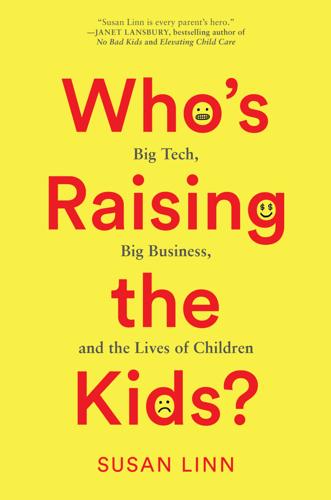
Who’s Raising the Kids?: Big Tech, Big Business, and the Lives of Children
by
Susan Linn
Published 12 Sep 2022
(New York: Teachers College Press, 2006) and Who’s Calling the Shots (St. Paul, MN: New Society, 1987). 49. “Prodigy Education | Make Learning Math Fun!,” Prodigy Education, 2020, www.youtube.com/watch?v=O1_V75nK67M. 50. “Gamification: Learning Made Fun with Genially,” The Techie Teacher, April 20, 2020, www.thetechieteacher.net/2020/04/gamification-learning-made-fun-with.html. 51. See Rishi Desai, MD, Khan Academy Fellow at “Khan Academy Gamification: Making Learning Fun,” YouTube video, September 10, 2013, www.youtube.com/watch?v=2EZcpZSy58o. 52. “Fun, n. and adj.,” in OED Online (Oxford University Press), www.oed.com/view/Entry/75467. 53.
…
It found “questionable educational assumptions embedded in influential programs, selfinterested advocacy by the technology industry, serious threats to student privacy, and a lack of research support.”45 Thinking about the “questionable educational assumptions” embedded in Prodigy leads me directly to the popular phenomenon of gamification, or gamified learning, which applies some of the more addictive features of video games to subjects taught in school. These can include badges, levels, digital prizes, competition, and variable rewards. Gamified edtech products are a lucrative business these days. Globally, game-based learning is expected to garner $29.7 billion in 2026, up from $11 billion in 2021.46 The rationale proponents often give for gamifying education is that kids like video games and sustain their interest in them for hours at a time.47 It makes sense, the reasoning goes, to transfer the gaming features that keep kids glued to screens to classroom teaching and learning.
…
For instance, an ad for Prodigy on YouTube proclaims that it will “make learning math fun!”49 In fact, like “personalized learning,” “fun” is a big component of marketing for gamified edtech products. Versions of the trope “make learning fun” turn up repeatedly in edtech marketing, with headlines like “Gamification: Make Learning Fun with Genially”50 or “Khan Academy: Making Learning Fun.”51 Tag line variations on “make learning fun” may generate a lot of sales, but they have problematic implications for children’s learning and their capacity to have fun. The Oxford English Dictionary defines fun as “light-hearted pleasure, enjoyment, or amusement; boisterous joviality or merrymaking; entertainment.”52 I believe that fun is crucial for children’s wellbeing—and my own.

Digital Bank: Strategies for Launching or Becoming a Digital Bank
by
Chris Skinner
Published 27 Aug 2013
Paying for things can be done the usual way, or you can make direct payments to friends and family via Facebook and text messages; Customers no longer need to remember or ask for account numbers, and can use phone numbers or social network connections instead; Facebook transfers appear on the home page of the person you send the money to, and are just messages sent with cash attached; Personal financial management (PFM) is provided to allow budgets and alerts, where the system clearly explains when money was spent and what for, along with a forecast of overall spending by the end of the month; An on-line expert is available 24/7 via a video or voice connection; and Gamification in the bank’s transactional service encourage smart spending and saving. The bank has already won several awards for these innovations and it is no wonder, as it’s the first bank mobile social solution that comes close to delivering the new retail banking reality. In conclusion, the Digital Bank is already here with banks like mBank and others such as Fidor, Moven, Simple, Jibun, eBank, ICICI Bank, Deniz Bank and more delivering different version of new business models for today’s 21st century customer.
…
So I spent $50 and bought two chainsaws, plus a machete, shotgun, uzi, meat cleaver and bazooka for good measure. Forget turning mates into Zombies ... just kill them. Now, I am the Zombie Pope in the Cathedral of Death and the idiot who attacked me with a chainsaw, is dead meat. This experience showed me the importance of these gaming tools, and gamification via mobile internet is big news. For example, as of January 2013, Apple had more than a half-billion active iTunes accounts linked to credit cards and this is likely to be a massive asset when the firm launches a mobile ewallet. But it goes further than this, as these gameworlds are big business.
…
That’s Banking-as-a-Service and Banking-as-a-Service is coming around faster than many might believe if you checkout all of the new players in banking: Social money and payments (iZettle, PayaTrader, mPowa, SumUp, PayLeven, Go Payment from Intuit, Square and more), Social lending and saving (Zopa, Ratesetter, Smava, Prosper, Boober, Smava, Lending Club, Ratesetter, Cashare, Loanio and more), Social insurance (the German firm Friendsurance), Social investing and trading (Stocktwits, eToro, Myfxbook, Fxstat, MetaTrader Trade Signals, Collective2, Tradeo, Zulutrade, Nutmeg and more), Social trade financing (Market Invoice, Platform Black, the Receivables Exchange, Urica and more), Payday Lending (Wonga, Cash America, Advance America, et al), Goalsetting and gamification (SmartyPig, Moven, Simple and more), Crowdfunding (Funding Circle, Kickstarter, Indiegogo, crowdrise, razoo and more), and the list goes on in each and every area of banking. There are 100s of these startups and established disruptors out there doing and I’ve not even mentioned what Facebook, Google, Amazon, Apple, Bitcoin, Ven Currency and others are doing.
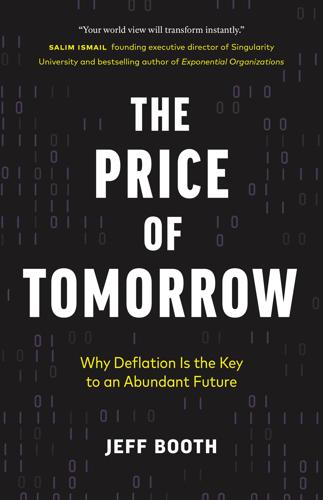
The Price of Tomorrow: Why Deflation Is the Key to an Abundant Future
by
Jeff Booth
Published 14 Jan 2020
Abraham Maslow, “A Theory of Human Motivation,” Psychological Review (1943), pages 370–396. 63. Louis Tay and Ed Diener, “Needs and Subjective Well-Being around the World,” Journal of Personality and Social Psychology, August 2011, pages 354–365. psycnet.apa.org/doiLanding?doi=10.1037%2Fa0023779. 64. Yu-kai Chou, “Octalysis—The Complete Gamification Frame-work,” yukaichou.com/gamification-examples/octalysis-complete-gamification-framework. 65. Adolf Hitler, Mein Kampf, trans. Roberto Marco (MVR, 1939), page 139. 66. Stanley Milgram, “The Behavioural Study of Obedience,” Journal of Abnormal and Social Psychology, October 1963, pages 371–378. 67. Stanley Milgram, “The Perils of Obedience,” Harper’s Magazine, December 1973. harpers.org/archive/1973/12/the-perils-of-obedience.
…
It has been helped by technological advancements in brain scanning techniques; researchers can pinpoint precisely what areas of the brain are reacting and why. Understanding why we do things, even when we might not realize ourselves, and shaping that behaviour is what advertising, influence, and power is about. In his seminal book Actionable Gamification, Yu-kai Chou proposes a framework called Octalysis. In that framework, Yu-kai believes that there are eight motivational forces that drive every action we take—not just in games, but foundational to everything. He believes that they can be built into a framework that can be used to massively influence us because our brains are hardwired to accept these motivational forces: Epic Meaning and Calling—The idea that you are doing something greater than yourself or the belief that you were chosen to do something.
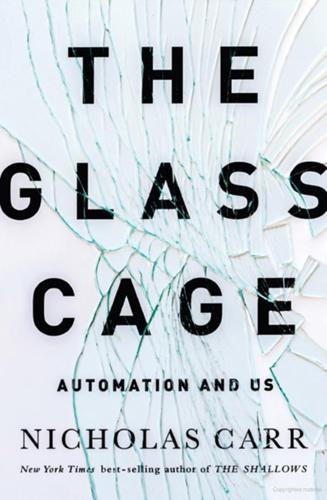
The Glass Cage: Automation and Us
by
Nicholas Carr
Published 28 Sep 2014
It may be that in the future we’ll only experience such virtues vicariously, through the exploits of action figures like John Marston in the fantasy worlds we enter through screens. * In suggesting video games as a model for programmers, I’m not endorsing the voguish software-design practice that goes by the ugly name “gamification.” That’s when an app or a website uses a game-like reward system to motivate or manipulate people into repeating some prescribed activity. Building on the operant-conditioning experiments of the psychologist B. F. Skinner, gamification exploits the flow state’s dark side. Seeking to sustain the pleasures and rewards of flow, people can become obsessive in their use of the software. Computerized slot machines, to take one notorious example, are carefully designed to promote an addictive form of flow in their players, as Natasha Dow Schüll describes in her chilling book Addiction by Design: Machine Gambling in Vegas (Princeton: Princeton University Press, 2012).
…
Computerized slot machines, to take one notorious example, are carefully designed to promote an addictive form of flow in their players, as Natasha Dow Schüll describes in her chilling book Addiction by Design: Machine Gambling in Vegas (Princeton: Princeton University Press, 2012). An experience that is normally “life affirming, restorative, and enriching,” she writes, becomes for gamblers “depleting, entrapping, and associated with a loss of autonomy.” Even when used for ostensibly benign purposes, such as dieting, gamification wields a cynical power. Far from being an antidote to technology-centered design, it takes the practice to an extreme. It seeks to automate human will. CHAPTER EIGHT YOUR INNER DRONE IT’S A COLD, misty Friday night in mid-December and you’re driving home from your office holiday party.
…
Abbott, Kathy, 55 accidents: automotive, 7, 70, 91, 153, 154–55, 207, 208 plane, 43–45, 54, 55, 154, 169–70 accountants, accounting firms, 76–77 action, human, 85, 132, 147–51, 160, 210, 213–14, 215, 217, 218 hierarchy of, 65–66 Adams, Thomas, 191 adaptive automation, 165 Addiction by Design (Schüll), 179n agriculture, 218, 222 Airbus A320 passenger jet, 50–52, 154 Airbus Industrie, 50–52, 168, 169–70 Air Force, U.S., 173 Air France Airbus A330, 45, 54, 169–70 airlines, 1, 43–46, 53–55, 59, 168–70, 172–73 air-traffic control, 170 Albaugh, James, 59 alert fatigue, 104 algorithms, 116–22 ethics and, 183–84, 186–87 predictive, 116–17, 123, 198 Amazon, 118, 195 American Health Information Community, 94 American Machinist, 34, 174 Andreessen, Marc, 40 Android, 153, 199 animals: body-object blending in, 150–51 killing of, 183–84, 185 animal studies, 87–92, 133, 219 antiaircraft guns, 35–36, 37, 41 anxiety, 14, 16, 19, 59, 220 Aporta, Claudio, 126–27 Apple, 41, 118, 136, 203 apprenticeship, 109, 113, 147 apps, 12, 13, 17, 33, 40, 91, 133, 202 gamification and, 179n see also specific apps architects, architecture, 12, 69, 137–48, 167 “Are Human Beings Necessary?” (Russell), 39 Arendt, Hannah, 108, 227–28 Aristotle, 144, 224, 226 Army Air Forces, U.S., 49 Aronowitz, Stanley, 27–28 Arthur, W. Brian, 196–97 Arthur D. Little, 37 artificial intelligence, 111, 113, 118–20, 187 artistic skills, 10, 85 Asimov, Isaac, 184, 189, 257n Asimov’s Rules of Robotics, 184, 257n assembly lines, 34, 38, 39, 195 Associated Press, 29, 58 attention, 200, 219 attentional capacity, 90–91 attentional tunneling, 200–201, 202 attention deficit hyperactivity disorder, 220 automaticity, 81–85, 105–6 automatic transmission, 4, 5–6, 13–14 automation, 1–21, 30, 32–40, 59 attempts to rein in, 170–72 elements that characterize, 36 faith in, 65–66 fallacy about, 67 flight, 43–63, 100 in health care, 93–106 hierarchy of, 110–11 human- vs. technology-centered view of, 153–75 important and unsettling direction of, 193–99 invention and definition of word, 34–35, 237n limits of, 10–11 tool-user bond weakened by, 223 Yerkes-Dodson law and, 90–91 see also specific topics Automation (Illingworth cartoon), 19, 33 Automation and Management (Bright), 111–12 automation bias, 67–72, 122 automation complacency, 67–69, 71, 72, 74 Automation: Friend or Foe?
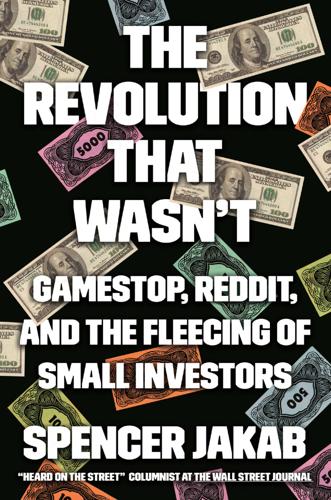
The Revolution That Wasn't: GameStop, Reddit, and the Fleecing of Small Investors
by
Spencer Jakab
Published 1 Feb 2022
Anything that gets us to make decisions more frequently is likely to cost us and benefit someone else. Gamification Aside from its simplicity, a distinguishing feature of Robinhood’s app is that it encourages activity. Winning trades would shower confetti on your screen, for example. The setup led William Galvin, the secretary of the Commonwealth of Massachusetts, to sue Robinhood in December 2020, saying it “encourages customers to use the platform constantly” through “gamification.” In particular, he said it is designed to lure young, inexperienced investors through its design.[10] Robinhood clumsily denied the allegations, saying, for example, that confetti doesn’t fall after every trade.
…
It also said that it had enhanced its systems and was offering more educational materials and safeguards.[11] Certainly the app looks different to the seventy-year-old Galvin, who reportedly uses a flip phone and has his staff do his emailing, than to Robinhood’s thirty-four-year-old boss or its typical thirty-one-year-old customer. The confetti feature was quietly dropped in the spring of 2021, but other design elements remained. “This whole area of gamification manifests itself across the marketplace,” said Barbara Roper, director of investor protection for the Consumer Federation of America, interviewed weeks after the meme-stock squeeze. Roper had by then spent more than three decades as a Wall Street gadfly, speaking at conferences and to journalists as she tried to bend the ear of powerful people in Washington who were in a position to make Wall Street fairer and safer.
…
S., 46–47 commissions, 48–50, 234, 251 zero-dollar, 47, 48–51, 54, 59, 70, 101, 102, 139, 166, 218, 241, 247, 259 Commonstock, 47 Condé Nast, 38 Congress, 206, 230–31 see also House Committee on Financial Services hearing Consumer Federation of America, 29, 241 Consumer Financial Protection Bureau, 42 control, illusion of, 27 Cooperman, Leon, 191 COVID-19 pandemic, ix–xii, xv, 1, 23, 31, 42, 45, 47, 52, 55–57, 62, 68–72, 83, 88, 89, 92, 93, 105, 156, 179, 214, 219, 224, 255, 256 stimulus checks during, 56, 62, 71, 72, 255 Cox, Christopher, 83 Cramer, Jim, 128, 254 Crash of 1929, 42, 150, 233 Crawford, Cindy, 111 Credit Suisse, 60, 128 Crockett, Molly, 39 Cruz, Ted, 197 Cuban, Mark, 191–92 cryptocurrencies, 58, 154, 179 Dogecoin, 19, 152, 154 CXO Advisory Group, 254 D Daily Journal Corporation, 183 Dalio, Ray, 160–61 Damodaran, Aswath, 18, 82, 177–78 Dark Knight, The, 138 DARTs (daily average revenue trades), 59 DeepFuckingValue, see Gill, Keith deep-value investors, 17, 52 demands for goods, 51 democratization of finance, 4, 5, 10, 173, 178, 182, 198, 207, 240, 242–43, 251, 262 dentists, 237, 251 Depression, Great, 48 derivatives, xi, xii, 5, 36, 101 see also options Dian Fossey Gorilla Fund, 135 Dimon, Jamie, 160 Discord, 190 Discover Brokerage, 28 Dogecoin, 19, 152, 154 Doji, 47 dot-com era, 4, 21, 24, 25, 28, 42, 63, 65, 70, 90, 106, 118, 155, 179, 186 Dow Jones Industrial Average, 52, 53, 61, 70, 151, 234, 243 DraftKings, 26, 30 Drew, Daniel, 74 Dunning, David, 28 Dusaniwsky, Ihor, 76, 81, 130, 132, 170 E economic theory, 51 behavioral, 51, 62, 255 Edelman, 143 Egan, Dan, 54, 60, 65, 183 Einhorn, David, 152–53, 158, 166, 253 El-Erian, Mohamed, 199, 205 Elm Partners, 260 Enron, 42, 84–85, 117, 119, 125, 129, 186, 242, 261 Epsilon Theory, 165 eToro, 47, 200 E*Trade, 24, 28, 55, 189, 219 Gill’s account with, 15, 19, 87, 88, 90, 100, 112, 130–31, 136, 141, 147, 171, 212, 230, 232 Eurekahedge, 119 exchange-traded funds, 159, 234 Express, 188 F Facebook, 37–38, 98, 162, 166, 202 Factiva, 127 FactSet, 177 FanDuel, 26 Fannie Mae, 216 Fast Company, 26 FBI, 122 Federal Reserve, 10, 58, 67, 69, 71, 98 Survey of Consumer Finances, 252 Federal Reserve Bank of New York, 83 Fidelity Investments, 8, 25, 27, 221–22, 245 fiduciaries, 13–14, 258 financial advisers, 27, 253–55, 258 see also robo-advisers financial crisis, xi, 6, 8, 10, 21, 28, 58, 63, 69, 70, 78, 83, 143, 199, 204, 215 Financial Industry Regulatory Authority (FINRA), 34–35, 101, 103, 120, 131, 193, 202, 239 Financial Times, 78, 81, 85 FOMO (fear of missing out), 63, 151, 172, 177, 178 Forbes, 9, 234 Ford Motor Company, 82 Forrest Gump, 212 Fortune, 85 4chan, 39, 125 Fox News, 156, 189 Freddie Mac, 216 French, Sally, 45 Fuld, Dick, 80 Futu, 236 G Gallagher, Dan, 240 Galvin, William, 29 gambling, 30–31, 55, 57 lotteries, 62, 239, 241, 242 sports, 26, 30–31, 57 Gamergate, 125 GameStop (GME), GameStop short squeeze, x–xiv, 2, 10, 12, 16, 21, 22, 26, 30, 31, 36, 54, 56, 60, 61, 67, 72, 76, 80, 83, 85, 86, 88, 93–95, 97, 102, 107, 108, 111–15, 122, 125, 127–34, 128–32, 137, 138, 141–49, 152–55, 157, 158, 160, 161, 164, 169–70, 174–78, 180, 185, 188, 189–92, 200, 204, 211–14, 215–17, 221–22, 227–31, 234, 235, 237–40, 242, 249, 252, 262 board members and, 222–23 CEOs and, 224 congressional hearing on, see House Committee on Financial Services hearing Gill and, 14, 15–19, 43–45, 68–69, 90–92, 94, 95, 100–101, 112–14, 130–33, 143–44, 147–48, 154–55, 260 Gill’s Forrest Gump Twitter post on, 212 margin debt and, 58 poll on, 13 Reddit and, 37; see also WallStreetBets thousand-dollar price predicted for, 172–73, 176, 177 Volkswagen squeeze compared to, 77, 78 gamification, 29–31 gamma squeeze, 108, 109, 132, 141, 216, 227–28 General Motors, 151 Generation Z, 21, 26, 56, 88, 143, 162, 236, 246, 255 Gensler, Gary, 207 Gill, Elaine, 171 Gill, Keith (DeepFuckingValue), 1–3, 14, 15–20, 47, 48–49, 52, 73, 87–88, 116, 126, 129, 136, 141–42, 171, 175, 183, 191, 211–14, 218, 219, 222, 227, 230–32, 250 at congressional hearing, 1–3, 14 E*Trade account of, 15, 19, 87, 88, 90, 100, 112, 130–31, 136, 141, 147, 171, 212, 230, 232 Forrest Gump Twitter post of, 212 GameStop and, 14, 15–19, 43–45, 68–69, 90–92, 94, 95, 100–101, 112–14, 130–33, 143–44, 147–48, 154–55, 260 net worth of, 19, 94, 114, 131, 133, 148, 155, 171, 191, 212 YouTube videos of, as Roaring Kitty, 2, 18, 45, 48–49, 92, 130, 133, 144, 171, 174–75, 191, 211, 213 global financial crisis, xi, 6, 8, 10, 21, 28, 58, 63, 69, 70, 78, 83, 143, 199, 204, 215 GME, see GameStop, GameStop short squeeze Goepfert, Jason, 227 Golden State Warriors, 158 Goldman Sachs, 9, 55, 63, 76, 132, 170–71, 178, 219–20, 254 Google, 46, 162, 243 Google Glass, 24 Google Play, 195 gorillas, 135, 225 Graham, Benjamin, 174, 177 Grand Theft Auto V, 97 Great Crash of 1929, 42, 150, 233 Great Depression, 48 Greenfield, Rich, 39, 180 Griffin, Ken, 8, 14, 41, 65, 67, 146, 189, 206–8, 218, 234, 240 at congressional hearing, 9–11, 14, 65 Gross, Bill, 216, 217, 220, 228 Grube, Jim, 114 Grujic, Al, 208–9 H Hacker News, 25 Haghani, Victor, 260–61 Harvard Law School, 220 Harvard University, 80 Hawley, Josh, 198 Hearst, William Randolph, 9 hedge funds, xi, xv, 4, 6–8, 12, 13, 22–24, 56, 67, 68, 73, 75–77, 96, 109, 110–11, 115, 119, 121, 126, 129, 130, 133, 135, 138–39, 141, 143, 146, 157, 170–71, 173, 176, 179–80, 189, 197, 199, 202, 213, 217, 220, 228, 229, 234, 239, 245, 249, 260 and locating a borrow, 72–73 Robinhood’s trading restriction and, 197–99, 206 Volkswagen and, 77–78 WallStreetBets as, 139 hedonic products, 51 Hemingway, Ernest, xiii Hempton, John, 181 herding events, 238 Hertz, 60–61, 255 Hestia Partners, 222–23 Hickey, Mike, 44, 128 high-frequency traders, 236, 238, 243, 247, 258 Robinhood and, 193, 202, 207, 236 Hirst, Damien, 7 HODL-ing, 140, 255–56 homeownership, 71 House Committee on Financial Services hearing, 1–14, 76, 80, 183, 206, 238–40 Gill and, 1–3, 14 Griffin and, 9–11, 14, 65 Huffman and, 11–13, 40, 165–66 Plotkin and, 6–11 Tenev and, 3–6, 11, 14, 32, 40, 65, 206 Washington establishment and, 13–14 Waters’s chairing of, 3, 13 Hsieh, Tony, 89–90 Huffman, Steve, 37–38, 40 at congressional hearing, 11–13, 40, 165–66 Hunt, Ben, 165 I illusion of control, 27 index funds, xv, 4, 6, 125, 191, 235, 242, 244, 245, 251, 254, 256, 257, 259, 260 influencers, 150–68, 170, 210, 246, 249 In Good Company, 87, 171 initial public offerings (IPOs), 63–65, 155 insider trading, 42 Instagram, 162, 166 Intel, 46 Interactive Brokers, 188 interest, 63 compound, 242 short, 76, 92, 93, 106, 108, 113, 121, 132, 133, 140, 164, 169 zero, 58, 72 internet, 22, 163, 258 see also social media Invisibly Realtime Research, 13 iShares, 259 J Jacob, Mary K., 172 Japan, 81 Ja Rule, 197 Jay-Z, 64 JMP Securities, 70, 199 JOBS (Jumpstart Our Business Startups) Act, 13, 246 Jordan, Michael, 8, 111 J.P.

Evil by Design: Interaction Design to Lead Us Into Temptation
by
Chris Nodder
Published 4 Jun 2013
(answers.yahoo.com) Obviously, online games such as World of Warcraft also encourage closure through leveling up and collection of in-game items, but the real trick lies in turning nongame tasks into a type of game (often referred to as gamification). Cow Clicker is the ultimate abstraction of this mechanism to its basic elements. Ian Bogost, a professor at Georgia Tech, created the Cow Clicker game within Facebook as a form of social commentary on gamification, the social gaming genre (of which he is not a fan) and the reward culture that it engenders. You get a cow. You can click it. In six hours, you can click it again. Clicking earns you clicks.
…
Many of the bank notes in this image are 5 cent, 10 cent, or 25 cent denominations. (dontspendithoney.com) It appears that despite the seemingly tiny savings that Canadian Tire and other similar discount schemes provide, they attract fervent audiences. The question is, why? Seth Priebatsch, a gamification expert who runs the company SCVNGR, suggests that just handing a coupon to customers means that they will assign a value to it equal to its redemption value. However, if they have to unlock, win, or otherwise work for that coupon, then there is an additional emotional impact that translates into additional perceived value for the individual.
…
There are techniques to keep them pointed in the right direction by giving them encouragement (reinforcement) and by removing distractions, such as indications of how much they are spending, through a move to using tokens instead of currency. Operant conditioning relies on extrinsic motivation. Skinner’s pigeons pecked because that led to a food pellet appearing, not because it was inherently enjoyable (an intrinsic motivation). Many of the “gamification” rewards in the online space rely on this extrinsic motivation principle. By making the reward extrinsic rather than intrinsic, we come to expect something in return for our actions so we’re less likely to do things altruistically, again reinforcing greed. Moving us to a different value structure through the use of tokens rather than money means we’re reliant on cues in the company’s built environment for cost comparisons rather than our real-world knowledge.

The Smartphone Society
by
Nicole Aschoff
Roughly 3,000 of them will end up together long-term.”18 Between 2005 and 2012, more than a third of Americans met their spouses online, and this number looks set to increase as attitudes toward online dating grow more positive.19 Dating apps have streamlined and “gamified” the online matchmaking models established by Match.com and OKCupid—that is, have added video-game-like features to increase participation, engagement, and loyalty. Tinder set the bar for the gamification of modern love, letting users sort and swipe potential lovers like an endless stack of playing cards. Happn has taken gamification to the next level with CrushTime: users get a notification when they’ve crossed paths with someone who has “liked” their profile and are presented with a four-profile grid of potential admirers. If they correctly guess which person tagged them, they win, “letting chance work its magic!”
…
But this future is a fantasy. Tech companies use a wide range of strategies to devalue, deemphasize, and disappear the human labor, most of it low paid, that they rely on. They outsource and hide the people who create training data, moderate content, clean their campuses, and drive their shuttles. They use appwashing and gamification to disguise shit jobs as entrepreneurial opportunities, and they apply peer pressure and nondisclosure agreements to chill dissent among full-time employees. But as the disconnect between fantasy and reality becomes too obvious to ignore workers are fighting back. In 1998, long before people were using apps to connect with “transportation network companies,” New York City taxi drivers formed a union, the New York Taxi Workers Alliance.
…
“Abrams, Jenna,” 109 ACLU (American Civil Liberties Union), 21, 22, 96, 148–49, 153, 176n28 Acxiom, 72, 77 addiction to social media, 65–69 Admiral, 78, 79 Adolfsson, Martin, 84 AdSense, 52 Advanced Research Projects Agency Network (ARPANET), 80 advertising: data collection and, 76–77, 83–84; on Facebook, 47–48; on Google, 52; political, 149 AdWords, 52 Afghanistan, politics in, 95–96 age discrimination, 149 AI Now, 129, 157 Airbnb, 42, 119, 120, 148 al-Abed, Bana, 90 al-Abed, Fatemah, 90 Aldridge, Rasheen, 91 algorithm(s): for consumer categories, 77; in dystopian future, 129–30, 131; in politics, 109–10; recommender, 67; search, 51–52, 53 algorithmic accountability, 151, 157–59 “algorithmic management,” 32–34 Alibaba, 4, 42 Allard, LaDonna Brave Bull, 104 aloneness, 7 Alphabet, 41, 55, 76, 122, 150 Alpha Go Zero program, 122 alter-globalization activists, 91 Amazon: acquisitions by, 41; and CIA, 81; in Europe, 150; marketplace model of, 150; as monopoly, 53–54; and new capitalism, 118–19; as new titan, 38–41, 44, 45; power of, 54–55; Rekognition software of, 149; tax evasion by, 49; warehouse workers at, 31–32, 33, 34; working conditions at, 46 Amazon Shopping, 30 Amazon Web Services (AWS), 41 American Academy of Pediatrics, 9 American Association of People with Disabilities, 55 American Civil Liberties Union (ACLU), 21, 22, 96, 148–49, 153, 176n28 American Dream, 120–21 American Library Association, 55 amplification, 91 analog networks, in cognitive mapping, 143 Android operating system, 39, 41, 53, 69, 70–71, 72 “angel investor,” 120 Ant Financial, 42 antidiscrimination laws, 149 antitrust laws and practices, 43–44, 52–53, 55, 150 AOL, data collection from, 81 app(s): top ten, 38 “app dashboard,” 69 app jobs, 30–34, 35, 137 Apple: data collection from, 81; in Europe, 150; low-paid workers at, 147; as new titan, 42; refusal of “right to repair” by, 155; supply chain of, 28–29; tax evasion by, 49–50; working conditions at, 46 appropriation, frontiers of, 73–76 appwashing, 34, 35, 146 “Arab Spring,” 97 Ardern, Jacinda, 93 ARPANET (Advanced Research Projects Agency Network), 80 artificial intelligence, 121–22, 123, 130 aspirational story, 120 assembly workers, 28–29 Athena, 42 AT&T, 29, 42, 43, 71 attention, 7 Audible, 41 Australia, justice in, 21 automation, 128, 131 automobiles, analogy between smartphones and, 2–3, 161, 162 autonomy, 117, 124 AWS (Amazon Web Services), 41 bad behavior, 138–39 Baidu, 42 Bannon, Steve, 105 Barlow, John Perry, 124 Bellini, Eevie, 24 Berners-Lee, Tim, 40 Beyoncé, 61, 107 Bezos, Jeff, 38, 44, 49, 54, 118–19 Bharatiya Janata Party (India), 93 big data, 76, 83–84, 145 Binh, Huang Duc, 95 black(s): police violence against, 17–23, 35, 169n6, 169n13 Blackberry, 6 “black-box algorithms,” 151 Black Lives Matter (BLM), 89–90, 100–102, 104, 107, 111 Blades, Joan, 91 blockchains, 124 body cameras worn by police, 22 book publishers, 172n40 boredom, 11 bots, 109 Boyd, Wes, 91 boyfriend, invisible, 24 Boyle, Susan, 63 Brazil, politics in, 97 Brin, Sergei, 38, 41, 54, 119, 148 Brown, Michael, Jr., 22, 89–90, 91, 101–2 Buffett, Warren, 41 Bumble, 23, 91 Bumblehive, 81 Burke, Tarana, 108 Bush, George W., 99 Calico, 41 California Consumer Privacy Act, 150 “CamperForce,” 31–32 Canales, Christian, 21 cancer, 7 candidates, social media use by, 103–5 Capital G, 41 capitalism: chameleonesque quality of, 116–17; crony, 105; and frontiers, 72–79; maps of, 143–44; neoliberal, 69, 102, 112–13, 117–18, 144–45; smartphones as embodiment of, 161–62; spirit of, 115–18; surveillance, 8 capitalist frontiers, government and, 80–81 carbon footprint, 82, 175n77 Carnegie, Andrew, 37, 54, 57 Castile, Philando, 20, 35 CatchLA, 62 caveats, 14–15 celebrities, in digital movements, 91 celebrity culture, 64–65 censorship, 95 Center for American Progress, 55 Center for Responsive Politics, 56 Central Intelligence Agency (CIA), 81, 95, 96, 138, 175n74 centrism, 112 Chadaga, Smitha, 89 change agent, 12 Chan, Priscilla, 56 Chan Zuckerberg Initiative (CZI), 56 Charles, Ashley “Dotty,” 109 Charlottesville, Virginia, 106–7, 111 Chesky, Brian, 120 children, 8, 9, 11–12, 84 China, 4, 42, 94–95 Chronicle, 41 CIA (Central Intelligence Agency), 81, 95, 96, 138, 175n74 Cienfuegos, Joaquin, 20–21 City of the Future, 124 Clinton, Bill, 43, 91, 99 Clinton, Hillary, 50, 107 Clooney, George, 91 “the cloud,” 82 cloud storage facility, 81 coercive relationships, 137–38, 152–54 cognitive maps and mapping, 143–59; algorithmic accountability in, 151; antidiscrimination laws in, 149; coercive and unjust relationships in, 152–54; defined, 143; digital and analog networks in, 143; digital commons in, 156–59; ecological externalities in, 145; economic implications in, 151–52; internet access for poor and rural communities in, 149–50; lacunae in, 145; low-paying jobs in, 146–49, 153–54; monopoly in, 150; political advertising in, 149; power in, 145; and principles of smartphone use, 152–59; privacy in, 150–51; selfish or immoral behavior in, 154–56; sociotechnical layers of, 145 collateral damage, 96 collective action, 155–56 Comcast, 29, 71 comic books, 11 commodification of private sphere, 144 Communications and Decency Act, 51 communities, on-line, 64 community broadband initiative, 149–50 Community Legal Services, 171–72n32 Compass Transportation, 147 Computer and Communications Industry Association, 55 “connected presence,” 6 connection, 44, 63–64, 143, 162 connectivity, 122 Connolly, Mike, 94 consumer(s): vs. producers, 28–29 consumer categories, 77 consumer scores, 77–78 consumption, 83, 138–39 content algorithms, 51–52 content creation, 74–79 contingent workers, 30 convenience, 29–30, 35 Cooperation Jackson, 155 cop-watch groups, 20–21 “The Counted,” 19, 169n6 “creative monopoly,” 44 creativity, 117 credit scores, 78–79 creepin”, 65 critiques, 7–8 crony capitalism, 105 CrushTime, 24 Cruz, Ted, 92 “Cuban Twitter,” 95 Cucalon, Celia, 48 Cullors, Patrisse, 100–102 cultural capital, 62 “custom breathers,” 69 “customer lifetime value score,” 78 “cyberspace,” 82 CZI (Chan Zuckerberg Initiative), 56 Dakota Access Pipeline Protests, 103–4, 110 dashboard apps, 132 data brokers, 72, 77 data centers, energy use by, 82 data collection, 70–72, 83–84, 137, 150–51, 156–59 data mining, 76–79 data ownership, 135–36 “data smog,” 72 Data & Society, 151, 179n20 data vendors, 76 datification, 156–57, 161 dating apps, 23–27, 35 decentralization, 101–2, 120 decommodification, 156–57 DeepMind, 41, 79, 122, 157 Deliveroo, 32–33, 153 Department of Homeland Security, 149 Desai, Bhairavi, 146 Descartes, René, 67 Diallo, Amadou, 19 Diapers.com, 41 dick pics, 25 Dick’s Sporting Goods, 91 digital-analog political model, 104, 110–12, 145, 162 digital commons, 139–41, 156–59 digital divide, 28–29, 35 “digital exclusion,” 29 digital frontier, limits of, 82 digital justice, 17–23, 152, 157, 169n6, 169n13 digital networks, 143 digital platforms, 44 “digital redlining,” 29 “digital well-being,” 69 disconnection, 132–33 discrimination in housing, 47–48 divides, 17–36; built-in, 28–34, 35; related to justice, 17–23, 169n6, 169n13; related to sexuality, 23–27, 35 division of labor, 74–75 Dobbs, Tammy, 129 documentation, 62 domestic violence, 25 DoorDash, 33–34, 146–47 dopamine driven feedback loops, 67 double standard, 25–27, 35 drone warfare, 95 “dual economy,” 12–13 dumbness, 7, 9 “dumb phone,” 1, 8, 132, 167n15 dystopian future, 125–26, 128–30, 131 eBay, 147, 148 Echo Look device, 84 ecological externalities, 145 ecological limit of digital frontier, 82–83, 175n77 economic crisis (2008), 98–100, 117–18 economic divide, 13–14 economic implications, in cognitive mapping, 151–52 economic nationalism, 105 “ecosystems,” 40 Eddystone, 78 education, 13 Edwards, Jordan, 18 Egypt, 92, 97 elderly Americans, 63–64, 84 Electronic Frontier Foundation, 55, 124 Elliot, Umaara, 90 Ellison, Keith, 45 emails: vs. phone calls, 6; scanning of, 70–71 Emerson, Ralph Waldo, 133 employment relationships, 137 encryption, 81, 175n74 energy consumption, 151–52, 154–55; by physical elements of digital life, 82, 175n77 entrepreneurship, 120–21 environmental justice, 154–55 Epsilon, 72 Equal Credit Opportunity Act, 78 Estrada, Joseph, 90–91 Europe, American tech titans in, 150 European Union (EU), 49, 52–53, 150–51 experience economy, 62, 83 exploitation of labor, 75 externalization of work and workers, 31 Facebook: acquisitions by, 41; addiction to, 66–67, 69; and antidiscrimination laws, 149; credit ratings by, 79; data collection by, 71–72, 76, 81, 84; demographics of, 84; discrimination in advertising by, 47–48; employees organizing at, 148; in Europe, 150; Free Basics by, 41–42, 50; low-paid workers at, 147; managing impressions on, 63; as monopoly, 53–54, 172n46; and new capitalism, 124, 136; as news source, 50–51; as new titan, 38–39, 40, 41–42, 44–45; power and influence of, 56; tax evasion by, 49; time spent on, 60 Facebook Live, 84 Facebook Pixel, 72 “Facebook Revolution,” 97 facial recognition software, 129, 149 Fair Housing Act, 48 fake news, 50–51, 56 Federal Bureau of Investigation (FBI), 149 feedback loop, 66–67 “Feminist Five,” 108 feminist movement, 107–8 Ferguson, Missouri, 89–90, 101–2 Fields, James Alex, Jr., 106 filter bubbles, 53, 109–10 financial crisis (2008), 98–100, 117–18 fintech companies, 78–79 flexibility, 117 FlexiSpy, 25 FOIA (Freedom of Information Act) requests, 149 food delivery apps, 32–33 food pictures, 62 forced arbitration, 148 Ford, Henry, 37, 124 Fordlandia, 124 Ford Motor Company, 37, 38, 44 Fowler, Susan, 126–27 FoxConn, 28 framing of analysis of cell phones, 12–14 Free Basics, 41–42, 50 Freedom of Information Act (FOIA) requests, 149 “free market” competition, 98 free speech, 138 Friedman, Patri, 124 frontier of social media, 59–86; addiction to, and fears about, 65–69; and big data, 82–86; characteristics of, 59–65; and government, 80–81; and privacy, 69–72; and profit, 72–79 Fuller, Margaret, 133 Galston, Bill, 45 gamification, 23–24, 146 Garza, Alicia, 100–102 Gassama, Mamoudou, 115 Gates, Bill, 56, 130 General Data Protection Regulation (GDPR), 150–51, 156 Geofeedia, 96 geopolitics, 95–96, 144 Germany, 3 Ghostbot, 24 gig economy, 137 Gilded Age, 1–2, 11, 54 global divides, 28–29 globalization, 98 Global Positioning System (GPS), 5 Gmail, 38, 71 Goodman, Amy, 104 Google: addiction to, 69; advertising on, 76; companies owned by, 41; data collection by, 70–71, 76, 81, 150; employees organizing at, 147–48; in Europe, 150; immoral projects at, 154; and intelligence agencies, 81; lobbying by, 55; low-paid workers at, 147; molding of public opinion by, 55; as monopoly, 52–54; and new capitalism, 119–20, 123, 136; as new titan, 38, 39, 40, 41, 43–45, 56; for online search, 52; power and influence of, 55–56; research funding by, 55; “summer camp” of, 55; tax evasion by, 49, 50; use by children, 84; working conditions at, 47 Google Calendar, 71 Google Chrome browser, 53 Google Drive, 71 Google Earth, 123 Google Fiber, 41 Google Images, 131 Google News, 50 Google Play, 72 Google Search, 38, 41, 53 Google Shopping Case, 52–53 Google Translate, 10 government: and capitalist frontiers, 80–81; and Silicon Valley, 124; surveillance by, 137–38, 144, 148–49 government tracking, 94–95 GPS (Global Positioning System), 5 Grant, Oscar, III, 18 Gray, Freddie, 22, 96 Great Pessimism, 118, 119 Great Recession, 118 Greece, 97 greenhouse emissions, 82 Green New Deal, 103, 151–52, 154, 179n22 Greenpeace, 157 Grindr, 23 gun violence, 90, 91, 110, 111 GV, 41 habitus, 62 Happn, 23, 24 Harari, Yuval Noah, 129–30, 132 Hearst, William Randolph, 50 Herndon, Chris, 56 Heyer, Heather, 106 Hirschman, Albert, 133 household expenses, 13 housing, discrimination in, 47–48 human, fear of becoming less, 67–68 iBeacon, 78 IBM, 149 ICE (Immigration and Customs Enforcement), 21, 148 ICT (information and communication technologies) sector, energy used by, 82 ideals, 120 “identity resolution services,” 77 ILSR (Institute for Local Self-Reliance), 149–50, 153 Immigration and Customs Enforcement (ICE), 21, 148 immoral behavior, 138–39, 154–56 impressions, management of, 62–63 income discrepancy, 12–13 independent contractors, 33–34, 137, 153 India, 4, 42, 60, 93 individualism, 117, 118 information and communication technologies (ICT) sector, energy used by, 82 injustice, 17–23, 169n6, 169n13 In-Q-Tel, 96 insta-bae principles, 61–62 Instacart, 30, 146 Instagram: addiction to, 69; content on, 60, 61, 62; creepin’ on, 65; data collection from, 72; demographics of, 61; microcelebrities on, 60; as new titan, 38, 41; time spent on, 60; value of, 74 Institute for Local Self-Reliance (ILSR), 149–50, 153 insurance companies, data mining by, 79 intelligence agencies, and capitalist frontiers, 81 internet: access for poor and rural communities to, 149–50; access to high-speed, 5, 29; creation of, 80; early days of, 40; government shutdown of, 94; smartphone connection to, 10 Internet Association, 45 Internet Broken Brain, 66 Internet.org, 41 Internet Research Agency, 109 internet service providers, and privacy, 71–72 inventions, new, 11 investors, 120–21 invisible boyfriend, 24 iPhone, 6, 42 Iron Eyes, Tokata, 104 Jacob’s letter, 127 Jacobs, Ric, 127 Jaffe, Sarah, 91 James, LeBron, 92 Jenner, Kris, 59 Jigsaw, 41 Jobs, Steve, 2, 6, 42 Joint Special Operations Command, 95 Jones, Alex, 111 Jones, Keaton, 109 justice, 17–23, 152, 157, 169n6, 169n13 Kalanick, Travis, 126, 127 Kardashian, Kim, 59 Kardashian, Kylie, 59 Kasky, Cameron, 90 Kattan, Huda, 60 Kellaway, Lucy, 1 Kennedy, John F., 88 Kerry, John, 56 Keynes, John Maynard, 117 Khosla, Sadhavi, 93 King, Martin Luther, Jr., 97 King, Rodney, 19 Klein, Naomi, 104 Knight First Amendment Institute, 93, 175n14 Knoll, Jessica, 108 Kreditech, 78–79 Kristol, Bill, 45 Kurzweil, Ray, 123 Lanier, Jaron, 67, 70, 135 Lantern, 95 law enforcement, surveillance by, 96–97, 137–38, 176n28 “leaners,” 29 Lean In (Sandberg), 107 Lehman Brothers, 98 Levandowski, Anthony, 123 LGBTQ community, 10, 64 “lifestyle politics,” 133 “like” button, 66 Lind, William, 105 “listening tour,” 56 Liu Hu, 94 live chats, 5 livestreaming of police violence, 20–21 lobbying, 55, 56 location data, 71 logistics workers, 31 Loon, 41 Loop Transportation, 147 Losse, Katherine, 124 love, 23–27, 35 low-income households, access to high-speed internet by, 29 low-paying jobs, 146–49, 153–54 Luxy, 23 Lyft 30, 31, 33, 146, 153 Lynd, Helen, 2, 3 Lynd, Robert, 2, 3 Lynn, Barry, 56 machine learning, 76, 121–22, 174n52 “machine zone,” 8 Macron, Emmanuel, 93 mainstream media, bypassing of, 91 Ma, Jack, 42 Makani, 41 mamasphere, 64 March for Our Lives, 104 March of the Margaridas, 108 Marjorie Stoneman Douglas (MSD) High School, 90 marketification, 161 Markey, Ed, 152, 179n22 marriage, expectations and norms about, 24–25 Marshall, James, 17–19 Marshall, Tanya, 17–19 Martin, Trayvon, 22, 100 Marx, Karl, 67 mass shootings, 90, 91, 110, 111 Match.com, 23, 24 Match Group, 24 Matsuhisa, Nobu, 62 Maven, 147–48 McDonald, Laquan, 18 McInnes, Gavin, 106, 107, 111 McSpadden, Lezley, 101 meaning, sense of, 64–65, 162 Medbase200, 77 men’s work, 75 mental health of children, 8 meritocracy, 121 Messenger: data collection from, 72 Messenger Kids, 84 metadata, 72 #MeToo movement, 108 microcelebrities, 60 microchoices, 69 Microsoft: and City of the Future, 124; data collection from, 81; employees organizing at, 148; in Europe, 150; immoral projects at, 154; as new titan, 42, 43, 55, 56 Middleton, Daniel, 60 “Middletown,” 2–3 Middletown: A Study in Contemporary American Culture (Lynd and Lynd), 2–3 military, 80–81, 95 mind-body divide, 67–68 miners, 28 Minutiae, 84 misogyny, 25 Mobile Devices Branch of CIA, 81, 95 Mobile Justice MI app, 21, 169n13 Modi, Narendra, 93 Mondragon, Elena, 22–23 monetization, 59, 79 money accounts, mobile, 10 monopolies, 43–46, 52–53, 150 Morgan, J.

Future Crimes: Everything Is Connected, Everyone Is Vulnerable and What We Can Do About It
by
Marc Goodman
Published 24 Feb 2015
No longer is hacking the province of a select few digital masters; rather, today it has become democratized with all necessary information readily available at Crime U. Modern criminals are innovating not just technologically but in their business models as well. Crime, Inc. has incorporated subscription models for malware services, gamification for staff members, and open-source software development for banking Trojans. To drive sales, Crime, Inc. offers fellow crooks stripped-down versions of illicit software tools or even provides them for free. If their felonious clients are happy with the product, they can pay more and upgrade to full versions—a strategy known as freemium pricing.
…
RankMyHack.com awards points to the best of the best and uses leaderboards to separate the wannabes from the hacker elite. Cyber-crime bosses are well aware of these trends and have found a variety of ways to tap into employees’ needs for recognition, challenge, and belonging by incorporating elements of gamification into their criminal activities. In Montenegro, the KlikVIP scareware gang threw a party for its most productive malware installers and offered a large briefcase full of euros to the affiliate who infected the greatest number of machines. In early 2014, in an effort to drive innovation and create new lines of nefarious business, an eastern European executive at Crime, Inc. offered a brand-new Ferrari for the hacker who invented the best new scam.
…
In early 2014, in an effort to drive innovation and create new lines of nefarious business, an eastern European executive at Crime, Inc. offered a brand-new Ferrari for the hacker who invented the best new scam. The news of the prize was unveiled in a dark corner of the digital underground in a professionally produced video that featured several glamorous female “assistants” on the floor of the dealer’s showroom. The boss’s gamification strategy paid off and received widespread attention among his workers, with the Ferrari reserved for the chosen “employee of the month.” From Crowdsourcing to Crime Sourcing Of all the business innovation techniques utilized by Crime, Inc., perhaps none has been as widely adopted as crowdsourcing.

The Costs of Connection: How Data Is Colonizing Human Life and Appropriating It for Capitalism
by
Nick Couldry
and
Ulises A. Mejias
Published 19 Aug 2019
There are in fact many soft incitements toward datafication, including our habits of counting our followers or likes88 and making sure we click on a friend’s latest post. Such soft incitements are formalized in marketers’ strategy of gamification. Gamification makes data extraction playful but far from formal—as with games such as Pokémon Go whose playing requires the revealing of location and other data.89 Gamification, as the president of loyalty marketer Points puts it, creates “a relationship of exchange where consumers are . . . incentivized to share more of themselves: their time, their attention, their information, and ultimately their loyalty.”90 Oracle’s Gamification Guidelines break the model down into stages that include not just “feedback mechanisms” and regular “progress indicators” but broad design features to stimulate “larger goal and reward states” and “longer-term engagements.”91 In a similar spirit, NaMo, the social media app dedicated to Indian Prime Minister Narendra Modi, encourages users to “earn badges” by competing “to do tasks.”92 Some might respond that it is not human beings as such that are the objects of data tracking and nudging.
…
J., 150 “force-relations,” 170 Foucault, Michel, 33–34, 42, 99, 100, 231n135–136 Fourcade, Marion, 148 Foursquare, 170 4X model of data extractivism: and digital natives, 108–11; expansion, xvi–xviii, 97–101; exploitation, 101–5; exploration, 92–97; extermination, 106–8; overview, 83–87, 91 Foxconn, 46, 74 Francis, Pope, 262n28 Fraser, Nancy, 151 Free Basics (Facebook), 12, 49, 97 freedom: actualized through social relations, 162–63; versus autonomy, 154; free will, 122, 140, 156, 167, 171, 257n82; Hegel on freiheit, 163, 167. See also autonomy freelancers, 59–63 free-trade agreements, 105 Freud, Sigmund, 252–53n10 Freud and Philosophy (Ricoeur), 253n10 Fried, Charles, 165 Fuchs, Christian, 63 Galloway, Scott, 66 gamification, 58, 130 Gandy, Oscar, 68 Gangadharan, Seeta Peña, 68 Gazprom, 54 Geist (world-spirit), 162 gender issues: Cloud Empire and unequal position of, 107–8; discrimination and social knowledge, 121, 143–49; and historical colonialism, 73–79 General Electric, 54 genetic information, and autonomy, 174 geopolitical competition: Global North as gatekeeper of, 103–4; between United States and China, xx Germany, privacy laws in, 180 Gibson-Graham, J.
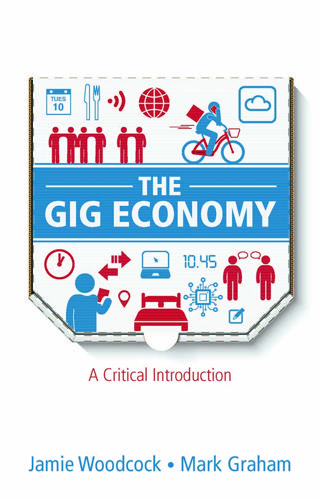
The Gig Economy: A Critical Introduction
by
Jamie Woodcock
and
Mark Graham
Published 17 Jan 2020
It’s a bizarre cephalopodan slot machine, a thousand-armed bandit that pays you for the trouble of pulling one of its many strange levers. I found it alarmingly easy to slip into a Turking daze. Each strange task leaves you with a brief glimpse of some larger whole, and it’s easy to find yourself looking for just one more. It leverages the ‘gamification’ that is a feature of many forms of work today (Woodcock and Johnson, 2018) in order to encourage people to work for an amount that may not hit minimum wage. In the process, it unveils parts of modern society that are often hidden: the work that goes on behind the scenes to develop AI and run services that many of us rely on.
…
In M. Atzeni and I. Ness (eds.), Global Perspectives on Workers’ and Labour Organizations. Singapore: Springer, pp. 157–73. Woodcock, J. (forthcoming) The algorithmic Panopticon at Deliveroo: Measurement, precarity, and the illusion of control. Ephemera. Woodcock, J. and Johnson, M.R. (2018) Gamification: What it is, and how to fight it. The Sociological Review, 66(3): 542–58. Yin, M., Gray, M.L., Suri, S. and Vaughan, J.W. (2016), The communication network within the crowd. Proceedings of the 25th International World Wide Web Conference (WWW), Montreal, Canada, 11 April. Index A accountability 124–30, 141 ACFTU (All-China Federation of Trade Unions) 100 Ackroyd, S. 34 Africa size of gig economy 39 algorithmic management 52 Amabile, Teresa 27 Amazon 25 Amazon Mechanical Turk 6, 43, 58, 59–60, 66, 84, 85–6, 87–8 ‘Dear Mr.
…
Bezos’ letters 87–8, 106 Turkopticon 106–7, 123, 133 Anderson, B. 80 Antunes, Ricardo 36 application programming interfaces (API) 58 apps 5, 51, 52, 133, 138 artificial intelligence 50, 58, 60, 66 Aslam, Yaseen 76 assembly line 24, 94, 117 Australia 127 Australian Independent Contractors Act 128 automation 66–7 Avendano, Pablo 73 B Badger, Adam 86–7 Bangalore (India) 98–9, 102 Barbrook, R. 37 Barry, J. 49 Beck, Ulrich 17 Bent, P. 13, 16 Berg, J. 55 Besant, Annie 14 Bezos, Jeff 87 Bolt 77 Bourdieu, Pierre 17 ‘BrainWorkers’ 33 Braverman, Harry 111 Bryant and May match factory 14 C Californian Ideology 37 call centres 24, 31 outsourcing of 37, 54 Callinicos, Brent 49 Cameron, A. 37 Cant, Callum 40, 96 capitalism cognitive 37 gendered basis of 29 car industry 110 care work 64, 66, 79–83 low barriers to entry 67 and repeat transactions 68 Care.com 80, 80–1 casualization 5, 15 Caviar 73 ‘ChainWorkers’ 33 Cheung, Adora 103 China worker resistance and strikes 100 Christie, N. 73 cleaning work 5–6, 64 low barriers to entry 67 migrant workers 30 cloudworker platforms 6, 43, 53–61, 63, 64, 69, 93 atomization of 92 availability of 56 location of 55, 57 removal of barriers to entry for 69 and resistance 104–8 setting rates of pay 65 and spatial control 63 temporal control 64 cognitive capitalism 37 collaborations 123, 132, 136 collective bargaining 30, 34, 37, 49, 80, 130, 134, 135–6, 143 collective organization 100, 134 commercial content moderation (CCM) 61 computerization 66 consumer attitudes/preferences 27 contingent work 19 Convention on Platform Work, Draft 130, 146–51 cooperatives, platform 138–9 Countouris, N. 129 Craigslist 22 crowdsourcing 58 crowdworkers 55, 90 see also microwork; online freelancing D Dalla Costa, Mariarosa 29 Darcy, Alison 60 data collection 65–6 De Stefano, V. 129 deindustrialization 36, 84 Deliveroo 2, 6, 23, 32, 40, 71–4, 115, 127 experience of working for 7–8, 31, 71, 72–4 self-organization for workers 95 strike action 95–6, 97 delivery work(ers)/platforms 5, 27, 62, 63, 68 and automation 67 and collective organization 134 experiences of workers 71–5 low entry requirements 67 see also Deliveroo democratic ownership 136–40, 141 Denmark 3F trade union 134–5 Desai, Bhairavi 79 developing countries internet penetration rate 25 Didi Chuxing 22, 102 digital divides 25 digital legibility 23–5, 65–7 digital platforms 1, 2, 3, 4, 54–5 Directive on Transparent and Predictable Working Condition in the European Union 129 dock work(ers) 13–14, 15, 38 strike (1889) 15 domestic work(ers) 29–30, 62, 63, 66, 79–83 as central component of capitalism 29 factors determining working conditions 80 numbers 80 positive and negative outcomes for 81 and repeat transactions 68 in South Africa 81–3 Doogan, Kevin 18 E economic crisis (late 1970s) 33 Elance 22 entertainment industries 135 Eurobarometer 40 European Commission 35 Expensify 60 F Facebook 45, 60, 121, 123, 133 factories/factory work 15–16, 94 measuring of factory labour process by Taylor 23–4 Fair Crowd Work website 123 Fairwork Foundation project 121–2, 130, 146–51 Farrar, James 75, 75–6, 77–8, 101 feedback 52, 80, 92, 93 financial crisis (2008) 35 Fiverr 20, 23 flexibility, desire for by workers 4–5, 30–3, 71, 115 flexicurity 35 Flipkart 22 Foodora 127 Fordism 117 fragmented work 5, 40, 114 Freelancer 6, 54, 64, 89 freelancing, online see online freelancing Frey, C.B. 66 G gamification 86 gender and capitalism 29 and relationships of work 28–30 geographically tethered work/platforms 5–6, 7, 34, 50–2, 63 control over workforce 68 forms of resistance in 94–104 setting rates of pay 65 temporal control 64–5 Ghana 8, 64, 92 gig economy advantages 4–5 characteristics 114–15 controversy over classification of people involved 43–4 existence due to digital transformation 114 factors facilitating growth of 19, 114 five principles for ‘fair work’ in 122 future 112–45 governance in 62 meaning of 3–7 numbers working in 1–2 operation of 41–69 origins 11–40 pitfalls 5, 116 preconditions that shape the 19–28 rise of 38–40 ways to bring about change 142–4 gig economy workers barriers to entry for 67–8 communicating with each other 132–4 de-personalization of 118, 120 desire for flexibility 4–5, 31–3, 71, 115 experiences of 70–92 invisibility of 6, 80 lack of collective voice 6, 77 lack of effective regulation for 128–9 misclassified as self-employed 44 numbers 39–40 securing protection through courts 127 working conditions 6, 9 gigs, musical 3 Global North 12, 13, 32, 46 and cloudworkers 55 and microwork 84 and outsourcing 44 size of gig economy 39 Global South 32, 46 internet penetration rate 25 size of gig economy 39 women and online freelancing 90 globalization 19, 37–8 Goodwin, Tom 45, 121 Graeber, David 31 Guru.com 22 H Handy 80 Harvey, David 33, 53 Heeks, Richard 39 Herman, S. 39 Hilfr.dk 134–5 Homejoy 68, 103–4 Howe, J. 58 human intelligence tasks (HITs) 60 Humphries, S. 13–14 Hunt, A. 28, 81, 82 Huws, U. 39–40 I IAEA (International Arts and Entertainment Alliance) 135 Iles, Anthony 32 ILO (International Labour Organization) 16–17, 129 Declaration of Philadelphia (1944) 142 Independent Workers Union of Great Britain see IWGB India delivery drivers 74 strikes by Uber drivers 102 Industrial Workers of the Word see IWW industrialization 16 interface 45 International Arts and Entertainment Alliance see IAEA International Labour Organization see ILO Internet access and penetration rate 25 Irani, Lilly 106 IWGB (Independent Workers Union of Great Britain) 73, 97, 101, 109, 127, 134 IWW (Industrial Workers of the World) 97, 101 J James, Selma 29, 81 job insecurity, growth in 18–19 K Kalanick, Travis 23, 48, 49 Kalleberg, A.L. 18 Kenya Ajira Digital programme 35 Kessler, Sarah 11 L labour law 114, 117, 126, 128, 129 Lagos (Nigeria) 89, 124 Lanier, Jaron 58 LaPlante, Rochelle 60 lean platforms 35, 45 legibility, digital 23–5, 65–7 Li, Qi 100 Limer, Eric 85–6 Living Wage Foundation 122 London taxi arrangement 47 long-term unemployment 18 low-paid work, increase in 35, 139 M Machingura, F. 81, 82 McKinsey 1–2, 39 McKinsey Global Institute 66 Manila (Philippines) 89, 90 Maputo (Mozambique) 26–7 Marsh, Greg 129 Marx, Karl 11–12, 22, 72, 121 Mason, Paul 35 mass connectivity 25–7 Massey, Doreen 63 Matchwoman strike 14 Mateescu, A. 79, 80, 81 Messina, Jim 48–9 microwork 6, 55, 58–61, 62, 83–9, 104 and automation 66–7 experiences of workers 83–9 feelings of alienation 88 numbers engaged in 83–4 wages 84–5 see also Amazon Mechanical Turk 59 migrant workers 30, 80, 90 migration status 30 Mitropoulos, Angela 17, 32 mobile phones 25–6 Mondragon Corporation 138–9 Moody, Kim 40, 111 Moyer-Lee, Jason 98 N Nedelkoska, L. 66 neoliberalism 18, 33–5, 52 characteristics of 34 New York Uber 78–9 NHS (National Health Service) 5 Novogratz, Mike 49–50 O O’Connor vs Uber Technologies Inc. (2015) 124, 126 Ojanperä, Sanna 55 Ola 102 online freelancing 6, 7, 8–9, 43, 55, 62, 141 barriers to entry for workers 67 barriers to organizing 104 experiences of workers 89–92 and feedback 93 reasons for doing 89–90 support forums 104–5 wages 90, 91 and worker resistance 104–5 Osborne, M.A. 66 outcome thinking 118, 124 outsourcing 19, 37–8, 39, 44–5, 51, 54 microwork as extension of 58 P Pandor, Aisha 83 Pasha, Tanveer 102 pay rates, setting of 65 Peck, Jamie 33, 35 Peterloo Massacre (1819) 108 Platform Cooperative Consortium 138 platforms/platform work 2, 4 ability to set pay rates 65 and accountability 125–30 barriers to entry for workers 67–8 as a civic utility 139–40 cloudwork see cloudwork connecting workers and clients 20–1, 22–3, 43, 138 cooperatives 138–9 core functions 23 degree of explicit coordination 68–9 democratic ownership of 136–40, 141 digital legibility 23–5, 65–7 Draft Convention on Platform Work 130, 146–51 early 22 geographically tethered model see geographically tethered model infrastructure 20–3 intermediate function 42–3 lean 35, 45 meaning and operation of 42–6 microwork see microwork negotiation-based matching 22–3 reliance on network effects 45 repeat transactions 68 setting up of ‘counter’ 123 spatial control 62, 63–4 spatiality and temporality of 42–3 spending money on public relations and advertising 28 static-price matching 23 temporal control 64–5 understanding how they work 61–9 Plouffe, David 49 Pollman, E. 49 precariat 18 precarious work(ers) 13–19, 32–3, 38 definition 16–17 two kinds of 33 profitability, crisis of 35, 36, 42 public sector and gig economy 17 and outsourcing 44 Q Quintini, G. 66 R racialization of work 30 racism 30 ratings strategy and transparency 122–3 Ravenelle, Alexandrea 37, 70 Raw, Louise 14 Reagan, Ronald 34 reddit 123 regulation 144 lack of for gig economy workers 128–9 labour law 19, 114, 117, 126, 128 state 19, 33–6 regulatory entrepreneurship 49 repeat transactions and platforms 68 resistance see worker resistance Roberts, Sarah 61 S SAG-AFTRA 135 Samman, E. 28 Schifter, Doug 79 Scholz, Trebor 48, 49, 138, 139 Schor, Juliet 103 Screen Actors Guild (SAG) 135 Second World War 110 self-employment 32, 43–4, 96, 98, 108 Semuels, Alana 84 service industries, growth of 34 Seymour, Richard 18–19 sharing economy 11 Shekhawat, Dushyant 74 ‘shock doctrine’ 34 short term contracts 4 Silberman, Six 106 slavery 30 Slee, Tom 50, 78 soldiering 23 South Africa domestic workers in 81–3 Uber 76, 127–8 worker resistance 99–100 South African Domestic Services and Allied Workers Union (SADSAWU) 82–3 South African Labour Relations Act 128 South Korea 35 South London Gas Workers strike (1889) 14–15 Spain 127 spatial control and platforms 62, 63–4 Srnicek, Nick 4, 42, 45 standard employment relationship 5, 12–13, 16, 18, 32, 33–4 Standing, Guy 17–18, 27 state regulation 19, 33–6 strikes 14–15, 94, 95–6, 99–100, 109, 142–3 preconditions for starting 109 surveillance 24 of delivery drivers 74 Upwork workers’ resistance to 105 Susskind, R. 118 SweepSouth 80, 81–3 Switzerland Notime 102 T TaskRabbit 103 taxi industry 51–2 taxi work(ers) 75–9, 134 and collective organization 134 see also Uber Taylor, Bill 100 Taylor, Frederick 23–4 Taylor, Matthew 129 Taylor Review of Modern Working Practices, The 129 technological changes 19, 21 temporal control and platforms 64–5 temporary work(ers) 3, 17 Thatcher, Margaret 34 Thompson, S. 34 Ticona, J. 79, 80, 81 Tillett, Ben 14 tipping 75 Tolpuddle Martyrs 108–9 trade unions 6, 18, 34, 36, 92–3, 97, 108–9, 134, 135, 143–4 decline of 36, 37 and dock workers 15 early 108–9 and gig economy workers 109–10, 136 and IWGB 97 rise in membership 15 textile 108 Transnational Federation of Couriers 97 transparency 118–24, 141 establishment of ‘counter platforms’ 123 ratings strategy 122–3 Transport for London 28 Turkopticon 106–7, 123, 133 U Uber 2, 4, 20, 23, 25, 32, 44, 45, 46–50, 52, 61, 73–9, 94–5, 108, 115, 121, 124, 139 business model 48 Change.org petition 28 data collection 50, 65–6 drivers’ wages 49–50, 77–8 engagement with regulation and transport policy 48 funding 47–8 and ‘greyballing’ 49 in New York 78–9 O’Connor vs Uber Technologies Inc. (2015) 124, 126 power passengers hold over drivers 75–6 public relations and lobbying campaigns 48–9 rating system 75 safety issues and rising petrol prices for drivers in South Africa 76–7 and self-driving vehicles 50 and tipping 75 Uber International Holding(s) BV 128 Uber Technologies SA 127 UberX 47 worker resistance and strikes 100–2 unfair dismissal 44, 134 United Kingdom employment regulation issues 129 neoliberalism 34 and outsourcing 44–5 worker resistance and strikes 100–1 United Private Hire Drivers (UPHD) 75 United States neoliberalism 34 Uber 47–9 UPHD (United Private Hire Drivers) 76, 101 UpWork 6, 8, 43, 54, 64, 121 resistance of surveillance methods by workers 105 Upwork.com 89, 91 US Chamber of Commerce 108 V van Doorn, Niels 42 Vandaele, Kurt 95, 97 venture capital 36 visibility 136 vWorker 22 W wages microworkers 84–5 online freelancing 90, 91 setting of pay rates 65 Uber drivers 49–50, 77–8 Ward, H. 73 Webster, G.E. 16 Weightman, G.E. 13–14 WhatsApp 95, 99, 123, 132, 133 Williams, Eric 30 women and domestic work 29–30 and online freelancing in the Global South 90 Wood, Alex 95, 104–5, 107 work, transformation of 12–13 worker power 19, 36–7, 130–6, 141 worker resistance 93–111, 113–14 and cloudworkers 104–8 and communication 107 food platform strikes 95–7 formation of networks and meetings 95, 98–9 geographically tethered work 94–104 history of 94 legal battles over employment status 98 and online freelancing 104–5 and self-employment status 98 strikes 14–15, 94, 95–6, 99, 100–1 taking of work off-platform 103 and trade unions 97, 107–11 Uber 101–2 and WhatsApp groups 98, 99, 132 workers’ rights 34, 44, 98, 101, 130, 135, 139, 140, 144 Y YouTube 60 Z Zomato 98–9 POLITY END USER LICENSE AGREEMENT Go to www.politybooks.com/eula to access Polity’s ebook EULA.

The Internet Is Not What You Think It Is: A History, a Philosophy, a Warning
by
Justin E. H. Smith
Published 22 Mar 2022
Arriving at such unity is the standard desideratum of conspiracy theories in general, and now it is also a sort of grail or ultimate reward after which a new species of gamers-cum-conspiracy theorists are questing. It has been reported, similarly, that the Uber corporation has “adopted techniques typically used in video games to more effectively manipulate their drivers.”35 Such examples of what we might call “existential gamification”—where the game model encroaches on domains of human life, such as politics and work, from which it was previously thought to be quite distinct—will no doubt continue to multiply in the coming years. Corporations will manipulate people into behaving as if they were video-game players, and these same people will adopt an understanding of their own freely chosen pursuits in life as if life were a video game.
…
“Game” is a notoriously difficult term to define; Ludwig Wittgenstein enjoyed using it as an example of something for which no necessary and sufficient conditions could possibly be proferred, containing everything from peek-a-boo to chess to “war games.” What is certain, though, is that in the spread of gamification to so many dimensions of social life, the connection of the idea of gaming to “play,” in the old sense evoked by Friedrich Schiller of the imaginative exercise of freedom, is growing ever more tenuous. * * * As already mentioned above, G. W. Leibniz got the underlying philosophical problem of artificial intelligence right: when we outsource our thinking to machines, we are not bringing new subjectivities into existence, new conscious beings like ourselves.
…
Conversely—and perhaps somewhat in their defense—Fortnite and other such massively multiplayer first-person-shooter video games are also, inter alia, social-media platforms: the kind of virtual bonds and enmities that can be forged between teenagers in such settings are no more nor less real than those forged between adults arguing about politics on a microblogging site. The programming is fundamentally the same, but with different graphics. And together, all of these platforms are contributing to the gamification of social reality, already discussed briefly in the first chapter. What is said and thought about artificial intelligence in the present moment is a reflection of broader developments in the way specifically networked computing has shaped our understanding of self and society, so that even if the histories of computing and telecommunication networks are at certain moments separate, by now the way we think about deep philosophical questions concerning the ontology of machines and the possibility of machine intelligence finds these two histories intricately interwoven.

Frugal Innovation: How to Do Better With Less
by
Jaideep Prabhu Navi Radjou
Published 15 Feb 2015
For instance, HubCab data shows that if New Yorkers were willing to wait no more than an extra five minutes for a taxi, nearly 95% of all trips could be shared with another person heading in the same direction. Such an optimal combination of trips would cut total travel time by 40% and yield similar reductions in operational costs, gas emissions and traffic congestion. Santi aims to make HubCab available as a smartphone app not just for New York, but for other cities too. Gamification In March 2009, IKEA France launched a car-sharing website for customers. The idea was to help get people to IKEA and reduce energy use. As IKEA put it: “Everybody wins: drivers, passengers and the environment.” The only problem was that too few drivers registered; someone needed to give car-owning IKEA customers a helpful nudge.
…
Clever design and use of technology and motivational techniques are changing how students learn. For instance, MOOCs let students learn at their own pace and from peers, and this discourages them from dropping out. Specifically, platforms such as FutureLearn, Coursera, EdEx and Udacity typically use visible learning, social learning, storytelling and gamification to promote effective learning. Visible learning Online courses are designed to make the learning process visible to users. Students are typically given signposts at every stage to help them assess their progress. They are made aware of where they are in a course, how much they have completed and what they can expect next.
…
In 2012, AmEx launched two frugal solutions: Bluebird, a no-frills, low-fee checking and debit card service available through Walmart and online; and Serve, a prepaid card. In 2014, AmEx began developing HVCs comprising a multi-sectorial ecosystem of non-profit organisations, government agencies, advocacy groups, policy institutes and start-ups. It is also working with D2D Fund, a consultancy that uses behavioural science tools such as gamification to nudge consumers into healthier financial habits, to promote and advocate prize-based savings. Similarly, to teach young people good financial habits, AmEx is piloting a project with non-profit organisations Moneythink and EveryoneOn to provide financial mentoring, free Wi-Fi and mobile-phone-based learning to students in Mississippi.
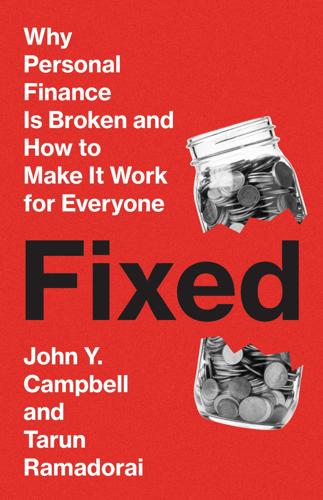
Fixed: Why Personal Finance is Broken and How to Make it Work for Everyone
by
John Y. Campbell
and
Tarun Ramadorai
Published 25 Jul 2025
Robinhood famously showered users’ screens with confetti when they successfully executed trades, “gamifying” their experience of trading, presumably to encourage more trading flow that could be sold to market makers. This feature has now thankfully been withdrawn following a firestorm of criticism and a complaint filed by Massachusetts regulators, who cited the company’s “aggressive tactics to attract inexperienced investors, [and] its use of gamification strategies to manipulate customers.”7 Fintech companies understand that people tend to look only at the first one or two links offered by a search or listed on a comparison website, and these privileged positions are often auctioned to firms that may not in fact be offering the best products.
…
Dogecoin was originally created as a joke alternative to Bitcoin, with deliberately abundant supply. The Floki Inu cryptocurrency was named after Elon Musk’s Shiba Inu dog. Both cryptocurrencies are “memecoins” whose value depends on their appeal to a community rather than their usefulness in blockchain transactions.33 If closer investigation turns up excessive gamification, marketing strategies that encourage frequent comparisons with peers to stimulate additional buying and usage, nontransparent fees, or excessive difficulties in canceling subscriptions, regulators should intervene. Third, fintech utilization of personal data should be carefully scrutinized. Data privacy standards need to be carefully thought through, and an independent privacy regulator may be needed specifically for financial data, which is sensitive and can lead to targeted pricing or selling or even exclusion from markets such as insurance.
…
Isaac Asimov, Foundation, part V, “The Merchant Princes,” section 18 (Panther, 1960). 7. See Maggie Fitzgerald, “Robinhood gets rid of confetti feature amid scrutiny over gamified investing,” CNBC, March 31, 2021, https://www.cnbc.com/2021/03/31/robinhood-gets-rid-of-confetti-feature-amid-scrutiny-over-gamification.html. 8. Claire Hong, Xiaomeng Lu, and Jun Pan, “FinTech platforms and mutual fund distribution,” Management Science 71 (2025): 488–517. 9. Marco Di Maggio, Emily Williams, and Justin Katz, “Buy now, pay later credit: User characteristics and effects on spending patterns” (unpublished paper). 10.
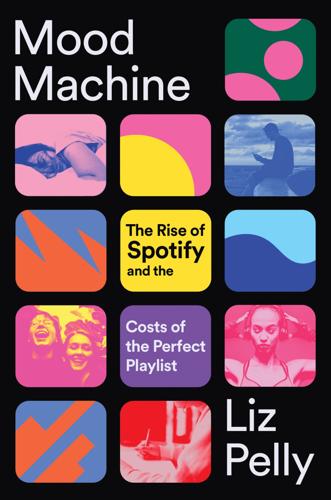
Mood Machine: The Rise of Spotify and the Costs of the Perfect Playlist
by
Liz Pelly
Published 7 Jan 2025
Collaborations with Spotify began in 2010, when Snowfish held an online competition called “The Next Big Thing,” an Idol-type talent contest where musicians could upload tracks and users could vote on their favorites. Three thousand votes would win the musicians something called the “Spotify Award,” where their songs would be serviced to the platform and given free promo and ad space. It’s telling that one of the first collaborations between people from Tunigo and Spotify involved this sort of gamification, and the idea that playlist promo was something that could be “won” by those with the most online engagement; in time, this would become a theme of the early curation strategy.8 Snowfish’s transition from social media network to playlisting company was partially motivated by work it had been doing with Telia, a Swedish multinational telecommunications company that was also an early partner to Spotify.
…
Playlisting was a lot of lean-back passive consumption that was an end in and of itself. You had people, like, buying houses and staying completely independent, just because of playlist consumption. But that didn’t help them fill a one-hundred-fifty-cap venue or sell merch.” The rise of streaming muzak also contributed to the gamification of music-making for young producers coming up in this environment; it spawned a whole web of sketchy new labels and playlist companies, and attracted all sorts of investment companies. It also drew the attention of the major labels, who launched their own chill-vibes imprints, and projects releasing lofi remixes of back catalog.
…
In all of the time I’ve spent contemplating that blog post, I’ve never blamed Allen for trying to make the most of a convoluted system. Music is vast, and different approaches work for different artists; his approach could be viable for some, even if what’s described can at times feel more like platform gamification than advice for running a sustainable DIY project. Rather than music culture, it was platform culture: norms and practices emerging because of specific platform demands rather than because of shared musical affinities or social connections between artists. Streaming wasn’t making more room for independent music culture, per se, but rather shaping a new model of independent musician, reimagined by the platforms, optimized toward streaming success.

The Twittering Machine
by
Richard Seymour
Published 20 Aug 2019
For those who are curating a self, social media notifications work as a form of clickbait.22 Notifications light up the ‘reward centres’ of the brain, so that we feel bad if the metrics we accumulate on our different platforms don’t express enough approval. The addictive aspect of this is similar to the effect of poker machines or smartphone games, recalling what cultural theorist Byung-Chul Han calls the ‘gamification of capitalism’.23 But it is not only addictive. Whatever we write has to be calibrated for social approval. Not only do we aim for conformity among our peers but, to an extent, we only pay attention to what our peers write insofar as it allows us to write something in reply, for the ‘likes’. Perhaps this is what, among other things, gives rise to what is often derided as ‘virtue-signalling’, not to mention the ferocious rows, overreactions, wounded amour propre and grandstanding that often characterize social industry communities.
…
And at any rate, many of the things we call tools are abstractions: we can’t ‘smash’ the like button. And our immediate problem with the Twittering Machine is not that it drives us into unemployment, but that it works us without remuneration the better to sell us as a product. It gives us tasks in the form of a casino-style game: it is in the vanguard of the gamification of capitalism. And if all that happened was that, in a giant digital suicide, we killed off the social industry, the media, amusement and entertainment complexes would fuse with venture capital to do it all again only more efficiently. We need more than this. We need an escapology, certainly, a theory of how to get out before it’s too late.
…
Baumer, Shion Guha, Emily Quan, David Mimno, and Geri Gay, ‘Missing Photos, Suffering Withdrawal, or Finding Freedom? How Experiences of Social Media Non-Use Influence the Likelihood of Reversion’, Social Media and Society, 2015. 22. For those who are curating a self . . . Mike Elgan, ‘Social media addiction is a bigger problem than you think’, CIO, 14 December 2015. 23. . . . the ‘gamification of capitalism’. Byung-Chul Han, Psychopolitics: Neoliberalism and New Technologies of Power, Verso: London and New York, 2017. 24. Even Skinner’s rats were not Skinner’s rats . . . Bruce K Alexander, ‘Addiction: The View from Rat Park’, 2010 www.brucekalexander.com. 25. Marcus Gilroy-Ware’s study of social media . . .
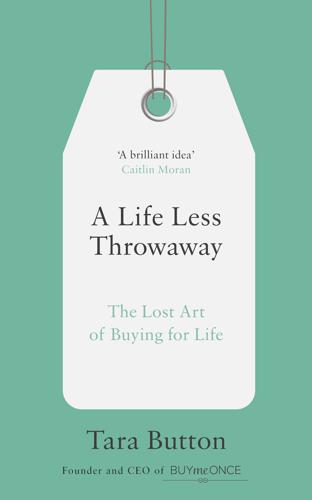
A Life Less Throwaway: The Lost Art of Buying for Life
by
Tara Button
Published 8 Feb 2018
Spangenberg, et al., ‘Gender-congruent ambient scent influences on approach and avoidance behaviors in a retail store’, Journal of Business Research, 59: 12 (2006), 1281–7, http://www.sciencedirect.com/science/article/pii/S0148296306001299. 4.Charles Duhigg, ‘How Companies Learn Your Secrets’, The New York Times magazine, 16 February 2012, http://www.nytimes.com/2012/02/19/magazine/shopping-habits.html?_r=1&hp=&pagewanted=all. 5.Annina Claesson, ‘Using Gamification on Your Online Community Platform: Principles, Examples, and Ideas’, VeryConnect, 28 February 2017, https://www.veryconnect.com/blog/using-gamification-on-your-online-community-platform-principles-examples-and-ideas. 6.https://www.statista.com/statistics/194424/amount-spent-on-toys-per-child-by-country-since-2009/. 7.http://www.which.co.uk/news/2016/11/misleading-black-friday-offers-uncovered-by-which-investigation-455959/.
…
If abs are all that you care about in a partner, then by all means you should go for ab man/woman, but generally you might have a few more criteria to consider. My fiancé only has one ab, but he has all the other ‘product features’ I decided were important to me in a life partner. Decide which features and criteria are important to you in advance, so you don’t get hoodwinked. LOYALTY CARDS AND GAMIFICATION There was a time when my whole wallet was so stuffed with loyalty cards, I couldn’t close it. Loyalty schemes can be advantageous, but they do come at a price. We can end up giving away more information than we realise, including what we might be tempted into buying in the future. A famous case published in The New York Times told of an angry father who called up US retail giant Target’s head office demanding to know why they were sending his teenage daughter coupons for maternity clothes and nappies.

Geek Heresy: Rescuing Social Change From the Cult of Technology
by
Kentaro Toyama
Published 25 May 2015
It identified, recruited, trained, and empowered local villagers to serve as CKWs in their communities. 17.Ramkumar (2008) includes a case study on social audits, including challenges of implementation, as written by a former MKSS member. 18.Veeraraghavan (2013). 19.“Vincent” is a pseudonym used here to protect the boy’s identity. 20.Gamification is a hot trend among tech-minded social activists, but it turns out to be incredibly difficult to design games that people voluntarily play that are also educational or productive. The essence of the problem is that it’s difficult to hit two birds with one stone. It’s very hard to design a compelling game, and it’s very hard to design a good educational app, so it’s extra hard to design a compelling educational game.
…
See also Health Downer, Ann, 136–138, 207 Dowries, 19–20, 175 Driver, Julia, 274(n4), 275(n5) Dudamel, Gustavo, 194 Duflo, Esther, 77–78, 82, 236–237(n14), 240–241(n14), 240(n8), 271(n9) The Dumbest Generation (Bauerlein), 10 Duncan, Arne, 10, 12–13, 117 Dutch disease, 158, 259(n9) Dweck, Caro, 250(n12) Dybul, Mark, 136–137 Dziko, Trish Millines, 114–115, 162 Easterly, William, 213, 236(n1) Ebola, 254(n25) Echeverría Álvarez, Luis, 193 Economics behavioral economics, 143–145, 258(n2) critique of, 95, 155–156, 169, 263(n41) development, x, 170, 174–188, 189, 196, 245(n61), 255(n40), 268(n20) education, 142–145, European Enlightenment, 96–98 happiness, 88 health care, 42–44, 137–138 India’s high-tech economy, 182–185 studies of education, 8, 12, 31, 77–82 studies of microcredit, 59–61 mainstream economics, 82 measurement, 91–92 mobile phones and development, x technological determinism of, 20 See also Business and entrepreneurship; Incentives; Inequality; Randomized controlled trials; Social enterprise, Tech Commandments Education and training adult education, 122–125 classroom management, 115–116, 118–119 computer literacy, 9, 17–20, 105, 122–125 computer programming, 114–115, 120–121, 125–127, 248(n25) democracy, 255–256(n40) early childhood, 77–80, 240(n10), 263(n43) girls’ education, 142–146, 263(n43) Indian Institute of Technology, 183–185 India’s Backward Class, 139–142 intrinsic growth effects, 143–146 lack of technical support for faculty and staff, 5–7 microcredit beneficiaries, 67–68, 71–72 nonformal education, 77–80, 240(n10) parental status and achievement, 250–251(n13) poverty alleviation, 67–68 questioning the value of, 255(n40) randomized controlled trials, 8, 12, 31, 77–82 recommended use of technology, 114–121 reform movement, 275(n5) return on investment, 142–149, 263(n43) rote learning, sustainability, 146–149 teaching to the test, 94–95 technology policy, 116–118 technology strategy for schools, 119–121, 248(n25) upgrading technology or skills, 122–125 variety of experience, 257(n46) See also Ashesi University; Capacity building; Gamification; Mentorship; Shanti Bhavan school; Technology Access Foundation Egg-drop contest, 211 Effort, role in outcomes. See Luck Egypt, 32–33, 35–37, 62 Ehrenreich, Barbara, 244–245(n52) Elections, 62–64, 170. See also Democracy Ellerman, David, 272(n14) Ellison, Larry, 94 Ellul, Jacques, 23–24 Emotional intelligence, 132–133, 252(n16).
…
See also International development Foreign direct investment, 183–185 The Fortune at the Bottom of the Pyramid (Prahalad), 82–84 Foundation and Earth (Asimov), 277(n16) Foundation for International Community Assistance, 71 France: compassionate class, 190 Franklin, Benjamin, 276(n8) Franzen, Jonathan, 86 Freedom, 93. See also Democracy Free will, illusion of, 264(n45), 265(n3) Free-PC, 48 Freud, Sigmund, 161, 260(n18) Fukuyama, Francis, 276(n15) Gaddafi, Muammar, 33 Games, computerized. See Video games Gamification, 54, 247–248(n20) Gandhi, Mohandas, 276(n8) Gandhi, Rikin, 25, 103–112, 129, 162. See also Digital Green Gates, Bill, v, vi, 14, 49, 162, 183, 184 Gender equality, 63–64, 181. See also Women and girls Generation Me (Twenge), 262(n33) George, Abraham, 140, 146, 162. See also Shanti Bhavan school Ghana Ashesi University, 125–129, 149–150, 152–153, 159–162 Digital Green partnerships, 110 Soronko, 151–152 Ghonim, Wael, 32–33, 35, 37, 67, 72 Ghose, Anirban, 198, 200, 204 Gingrey, Phil, 42 Gladwell, Malcolm, 36 Glenn, John, 104 Glennerster, Rachel, 236–237(n14) Global Polio Eradication Initiative, 65, 238(n27) Goleman, Daniel, 252(n16) Governance NREGA and technology, 112–114 European Enlightenment, 96–98 mass values, 187–188 packaged interventions, 69 repressive regimes, technology assisting, 23 technology amplifying power, 31–32 women’s status, 178 See also Corruption; Democracy and democratization Grameen Bank, 59, 61, 71–72 Grameen Foundation, 247(n16) Grassroots collective action, 50–52.
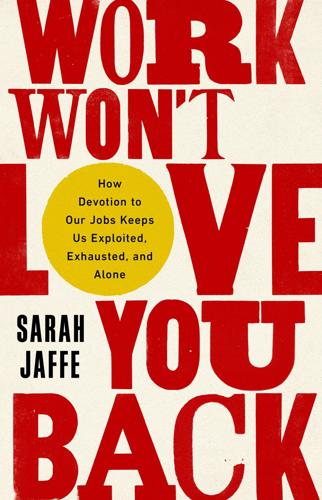
Work Won't Love You Back: How Devotion to Our Jobs Keeps Us Exploited, Exhausted, and Alone
by
Sarah Jaffe
Published 26 Jan 2021
The result has been the gig economy—a patchwork of short-term non-jobs performed by nonemployees who are barely getting by. 33 Whether they be app-distributed gigs or jobs in Amazon’s warehouses, or even programming jobs themselves, the tech industry’s solution for the continuing need for humans to do deeply un-fun work has been “gamification.” Gamification is almost the antithesis of “playbor”—a way to pretend that the same old backbreaking manual work is “fun,” a game you can win. To make the work of packing boxes at Prime speeds less like, well, hard work, Amazon has introduced video games to the distribution center floor. The games have titles like “PicksInSpace” and “Dragon Duel,” and the employees can play alone or against one another—the latter bit designed to up the competition factor and perhaps encourage faster picking. One gamification expert explained that the games might “give a bump to workers’ happiness,” but can also be used to ratchet up productivity goals: “It’s like boiling a frog.
…
One gamification expert explained that the games might “give a bump to workers’ happiness,” but can also be used to ratchet up productivity goals: “It’s like boiling a frog. It may be imperceptible to the user.” Uber has used gamification as well; so have call centers. And it’s being applied both in learn-to-code contexts and in the actual workplaces of software developers. Turn work into a game! What could be more fun? The problem, as artist and author Molly Crabapple acidly predicted years ago, is that “the prize is what used to be called your salary.” 34 The gamifiers are on to something—people hate drudgery, and no one expects to enjoy packing boxes or lifting them for an eight- or ten-hour shift.

A New History of the Future in 100 Objects: A Fiction
by
Adrian Hon
Published 5 Oct 2020
People were tiring of such simplified measures of their lives. Ian Kyd, a gamification historian, comments: The fashion of trying to precisely quantify everything in the universe, from health and happiness to intelligence and inspiration, had its roots in the turn of the century when the politics and economics of the time rewarded people for thinking in strictly numerical terms. Back then, they really did think that representing things like happiness with a number out of a hundred was not only a good idea, but the best idea. The ideals of the self-quantification and gamification movements reached as far as the ’30s and then thankfully retreated as the Modern Romantic movement emerged.
…
The Guide launched with one hundred audio lessons, such as “How to Live in the Moment” and “Why We Must Forgive,” along with twenty-five interactive exercises ranging from emotion journals to games that helped users identify things in their surroundings that gave them joy. Naturally, the Guide took full advantage of the “gamification” craze of the early twenty-first century, hooking unwitting users with the lure of experience points and leveling up. Sociologist and app historian Professor Colin Leigh explains its sensational success: The Guide directly addressed the lack of community and purpose felt by many in rich countries experiencing the “speed-up.”
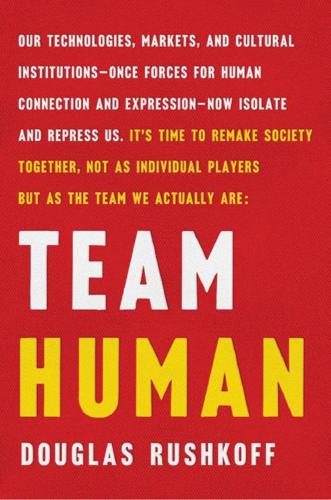
Team Human
by
Douglas Rushkoff
Published 22 Jan 2019
Websites employ leader boards to honor those who have made the most posts, trades, or whatever metric a company wants to promote. Users also compete for “streaks” of daily participation, badges of accomplishment, and other ways of demonstrating their achievements and status—even if just to themselves. Gamification is used to motivate employees, students, consumers, and even online stock traders. But in the process, the play is often surrendered to some pretty unplayful outcomes, and people’s judgment is clouded by the unrelated urge to win. Many familiar interfaces go even deeper, building addictive behaviors by leveraging our feeding instincts.
…
That’s why academic studies of slot machine patterning became required reading Natasha Dow Schull, Addiction by Design: Machine Gambling in Las Vegas (Princeton: Princeton University Press, 2014). Nir Eyal, Hooked: How to Build Habit-Forming Products (New York: Portfolio, 2014). the play is often surrendered to some pretty unplayful outcomes Brian Burke, Gamify: How Gamification Motivates People to Do Extraordinary Things (Abingdon, UK: Routledge, 2014). Kevin Werbach, For the Win: How Game Thinking Can Revolutionize Your Business (Philadelphia: Wharton Digital Press, 2012). Jane McGonigal, Reality Is Broken: Why Games Make Us Better and How They Can Change the World (London: Penguin, 2011). 34.

Unleashed
by
Anne Morriss
and
Frances Frei
Published 1 Jun 2020
Said differently, if you want to attract different types of people, then start meeting them where they are, in different types of places (ideally, where they’re the majority). Cammie Dunaway is the charismatic chief marketing officer of Duolingo, the breakthrough language-learning app that’s known for its heavy use of “gamification” to engage a growing army of users (300 million and counting). (Gamification is the innovative use of traditional gaming functionality in non-game applications.) Dunaway has had an exceptional career building tech companies, including serving as chief marketing officer of Yahoo! (the company’s emphasis, not ours). She reveals her commitment to empowerment leadership in untold ways, including the language of her “personal operating guide,” playfully titled “There’s Something about Cammie,” which she shares with colleagues.
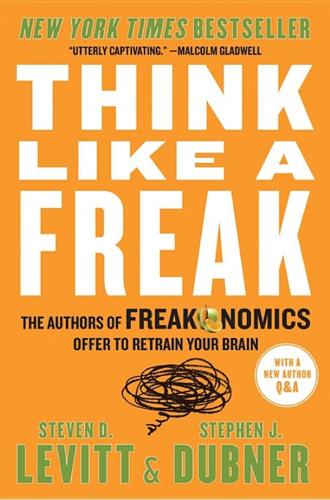
Think Like a Freak
by
Steven D. Levitt
and
Stephen J. Dubner
Published 11 May 2014
But in one of the strangest wrinkles of human development, these traits magically evaporate in most people by their twenty-first birthday. There are certain realms in which having fun, or even looking like you’re having fun, is practically forbidden. Politics, for one; academia too. And while some firms have lately been spicing things up with gamification, most of the business world remains allergic to fun. Why do so many frown so sternly at the idea of having fun? Perhaps out of fear that it connotes you aren’t serious. But best as we can tell, there is no correlation between appearing to be serious and actually being good at what you do. In fact an argument can be made that the opposite is true.
…
Abdul-Jabbar, Kareem, 173 abortion, legalization of, 40, 69, 93 Abraham, story of, 187 Adam and Eve, story of, 187 adoptions, in Japan, 1n adults: dumbing down, 103 and magic, 102–3 advance-fee fraud, 156 advertising: awards programs as, 46–47 effectiveness of, 36–38 Africa: corruption in, 74 ethnic strife in, 74 independence in, 74 African-Americans, heart disease of, 75, 77 airline deaths, 179, 180 Ally Bank, 26–27 al Qaeda, 28 altruism, 121, 130 Amazon, 130 anecdotes, 181–82 Arai, Kazutoyo “the Rabbit,” 54 Arista Records, 208 Asiana Airlines, 179 attention, 102, 183 authority-figure relationships, 125 avatars, 63 Ayalon Institute, The, 152 bacteria: and chickens, 80 fecal transplants, 84–86 gut, healthy, 84–85 Helicobacter pylori, 80–83 hereditary, 83 in human body, 83 spread of, 28 transplantation of, 84–86 and ulcers, 80–86, 95 bank accounts: and life insurance, 163–65 prize-linked savings (PLS), 98–99 savings rates, 97–99 and terrorists, 161–65 Bathsheba, 187 beliefs, 21 Bertoletti, Patrick “Deep Dish,” 60–61 biases, 205 absent in children, 87–88 and opinions, 10, 172 right vs. wrong, 31–32 status-quo, 206 Bible, stories in, 185–88 big thinkers, 89 blind spots, 172 blockbuster drugs, 79 Bloomberg, Michael, 192–93 Bohr, Niels, 23 Bolivia, slavery in, 74 Bolt, Usain, 55 Borody, Thomas, 85–86 brain, as critical in sports, 63 brainstorming, 193 bread baking, 34–35 bribes, 105–6 Buffett, Peter, 119–20 bullet factory, Israeli, 152–54 burglar alarms, 158 Byrds, 138 Cain and Abel, story of, 187 California, electricity use in, 112–15 Cameron, David, 11–16 Cameron, Ivan, 14–15 Camping, Harold, 30 Campylobacter, 80 cancer, false positives, 158 carbon credits, 131–33 Caribbean blacks, 77 cash bounties, 133 causality and correlation, 8–9 cause and effect: in advertising, 36–38 in economics, 26–27 measuring, 26–27, 35, 39 obvious cause, 65 root causes, 66–70, 82–83, 85 Challenger, 197–98 change, bringing about, 90 charity, 117–25 conscience laundering via, 120 fund-raising success, 122 Italian philanthropy, 73 “once-and-done,” 121–24, 130 Operation Smile, 118–19 raising money for, 99–100 relationship with donor, 125–36 Smile Train, 119–24, 130 social-gaming sites for, 100 social pressure in, 121 chatbots, 160–61 Chekhov, Anton, 188 Chestnut, Joey “Jaws,” 60 chickens, and bacteria, 80 children: bribing, 105–6, 130 cash for grades, 109–10 generating ideas, 88 hard to fool, 102–3 having fun, 96, 100 and magic, 101–4 plastic surgery for, 117–24 preconceptions absent in, 87–88 questions answered by, 19–20 questions asked by, 87 reading books, 104, 110 thinking like, 87, 92, 95, 100 in traffic accidents, 178 vision problems of, 91–92 writing for, 104 China: diplomatic relationship with, 126–27 pollution in, 132 store opening in, 196–97 Chiyonofuji “the Wolf,” 52 Churchill, Winston, 189–90, 210 Cialdini, Robert: and California energy study, 112, 113 and Petrified Forest study, 115–16 civic institutions, trust in, 73 civil-rights lawsuits, 40 Clash, The, 208 climate change, 168–71 cobra effect, 133 Cold War, 126 collaborative relationships, 125, 130, 134 collective good, private benefit vs., 7, 29 college applications, 150 Colombia, slavery in, 74 communal incentive, 7, 29 compass: magnetic reading of, 32 moral, 31–34 complexity, seduced by, 94 Concorde fallacy, 191 concrete costs, focus on, 191 conventional wisdom: blind acceptance of, 8 in education reform, 91 running with the herd, 10, 112–15, 172 Cops, 207 core ideas, 8–9 correlation and causality, 8–9 corruption, 66–67 in post-colonial Africa, 74 crime: and abortion, 69, 93 and the economy, 68, 208 and environment, 69 and gun laws, 68 “present-tense” factors, 68–69 root causes of, 67–70 Cultural Cognition Project (CCP), 168–71 curiosity, 87 customers, incentives of, 128–30 Cutler, David, 76 CXO Advisory Group, 24 data, use of, 9 David, King, 138, 187–88 Davis, Clive, 208 Dawkins, Richard, 191 Deane, Geoff, 193–96 decency, treating others with, 134 decision making: coin flips in, 41, 201–5 economic approach in, 9 Freakonomics Experiments, 200–205 soccer penalty kick, 3–7 tradition-based, 39, 78 devil belief, 21 diplomacy, 126–27 DNA sequencing, 83 dogmatism, 25, 102, 171–72 driverless car, 174–77 drug war, 173 drunk walking, 90–91 Dubner, Stephen J., as quitter, 208–9 eating competitions, 53–61 economic approach, 9 economics: cause and effect in, 26–27 free disposal in, 88 Nobel Prize for, 25n predictions in, 25–27 economy: and crime, 68, 207 and religion, 72–73 education: and poverty, 75 and terrorists, 171 education reform, 50–52, 91 Einstein, Albert, 93 Eisen, Jonathan, 83 embezzlement, corporate, 90 Emperor’s new clothes, 88 Encyclopedia of Ethical Failure, The (Epstein), 184–85 energy conservation, 112–15 “entrepreneurs of error,” 22 environment, and crime, 69 Environmental Investigation Agency (EIA), 132 Epstein, Steve, 184–85 error, entrepreneurs of, 22 ethics, failures in, 184–85 Europe, capitalism in, 73 evanescent field effect, 195 excellence, practice leading to, 96 expectations, 8, 63–64, 67, 102 experiments: artificial nature of, 40–41 and brainstorming, 193 in cause and effect, 35–37, 39 evanescent field effect in, 195 expert knowledge in, 39 extrapolation algorithm in, 24 feedback in, 38–47, 192–93 field, 41 Freakonomics, 200–205 on human beings, 81–82 in Intellectual Ventures, 193–94 laboratory, 40–41 in microbes, 84–86 natural, 40 on potential inventions, 193–96 randomized control trials, 37, 39 in social issues, 39–40 wine quality, 42–47 experts: dart-throwing chimps vs., 24 outside their fields of competence, 27–28 practice to become, 96 predicting the future, 23 in scientific experimentation, 39 seriousness of, 96 extrapolation algorithm, 24 eyeglasses, 92n facial hair, 204 facts, opinion vs., 20 failure: celebrating, 193, 195–96 ethical, 184–85 feedback from, 192–93 forecasting, 198–99 of O-rings, 197, 198 premortem on, 199 as victory, 194 false positives, 158–59, 161, 162 famine, causes of, 66–67 fat, eating, 182–83 fecal transplants, 85–86 feedback: bread baking, 34–35 in experiments, 38–47 gathering, 35–38, 62 and learning, 34–38 voting, 35 financial relationships, 125–26, 130 focus, 102 folklore, 78, 80 food prices, 107–8 fortune-tellers, 31 Franklin, Aretha, 208 Freakonomics, 67, 69 Freakonomics Experiments, 200–205 Freaks: becoming, 211 having fun, 95 free disposal, 88 Fryer, Roland, 75–77 fun, 95–98 and children, 96, 100 of Freaks, 95 in music, 208–9 trickery as, 152 work as, 97, 109, 129, 206–8 writing books, 209 gambling, online, 99–100 game theory, 142–43 gamification, 96 gaming the system, 135 genetic racial differences, 77 Germany: Nazi Party in, 73n religion in, 70–73 schoolteachers in, 180–81 Glaeser, Edward, 22 Glewwe, Paul, 91 global warming, 168–71 goals, unattainable, 199–200 “go fever,” 197 Goldstein, Robin, 43–47 golf, 205–6 Good Samaritan laws, 108 Google, and driverless car, 174–76 Great Recession, 68 greenhouse gases, 131–33 guilt, test of, 144–49 gullibility, 102, 159–61 gun laws, 68 hacking, 177 Haganah, 152 “hammers,” 102 happiness: and marriage, 8–9 and quitting, 201, 204–5 HCFC-22, 132 health care: in Britain, 14–16 causes of illness, 83, 85 and folklore, 78, 80 and poverty, 75 ulcers, 78–86 heart disease, blacks with, 75, 77 hedge funds, and taxes, 70 Helicobacter pylori, 80–83 herd mentality: and conventional wisdom, 10 and incentives, 113–15, 172 Herley, Cormac, 157, 159–61 Herron, Tim “Lumpy,” 206n Hitler, Adolf, 189, 210 homicide rates, falling, 67–69 hot-dog-eating contest, 53–61 Hseih, Tony, 151 human body: as a machine, 95 complexity of, 78, 94–95 Hussein, Saddam, 28 hydrofluorocarbon-23 (HFC-23), 131–33 ideas: cooling-off period for, 88 generating, 87–88 junkyard as source of, 94 sorting bad from good, 88 ideology, 172 “I don’t know”: cost of saying, 29 entrepreneurs of error, 22 extrapolation algorithm, 24 and impulse to investigate, 47–48 reluctance to say, 20, 28, 39 as war prevention, 28 ignorance, 168–69 incentives, 105–35 backfiring, 131–34 bribes, 105–6 cash bounties, 133 charity, 117–25 communal, 7, 29 of customers, 128–30 designing, 115, 135 herd-mentality, 112–15, 172 and lying or cheating, 143 as manipulation, 134 money, 107–11, 113, 133 moral, 112–16, 135 for predicting the future, 29–30 social, 112, 113 true, 111–15 understanding, 8 at work, 108–9 income gap, 72–73 India: cobra effect in, 133 pollution in, 132 indulgences, sale of, 70 Industrial Revolution, 13 inmates, freeing, 40 innovation, risks in, 193 insults, 180–81 Intellectual Ventures, 193–94 Internet: predictions about, 26 scams on, 156–58 inventions, 193–95 investigation, impulse of, 47 Iraq War, 28 Israel, bullet factory in, 152–54 Italy, philanthropy in, 73 Janus, Tim “Eater X,” 61 Japan: adoptees in, 1n eating contests in, 55–56 manners in, 57 Jewish Brigade, 153 job application process, 149–52 “Jump” (Van Halen), 138 Kahneman, Daniel, 172 Keegan, John, 210 Kissinger, Henry A., 127 Klein, Gary, 199 knowledge: dogmatic, 25 faking, 22–26, 28–29, 47 and feedback, 34–38 “I don’t know,” 20, 28, 29, 47–48 learned from parents, 50 opinion vs., 20 Kobayashi, Takeru “Kobi,” 52–64, 140n Kobayashi Shake, 59 Krugman, Paul, 25 Langley, John, 207n learning, and feedback, 34–38 Leeson, Peter, 146–47 Lester, David, 33–34 letting go, 210 Levitt, Steven D., as quitter, 205–8 licensing, 51 life insurance, and terrorists, 163–65 limits: accepting or rejecting, 62, 63–64 artificial, 63, 64 lottery: no-lose, 98–99 state monopolies, 99 loved-one relationships, 125–26 Luther, Martin, 70–72 M&M’s: bribing a child with, 105–6 in contract clause, 141–42 magic: and adults, 102–3 and children, 101–4 double lift, 101–2 and perception, 101 watching from below, 103–4 manipulation, 134 Mao Tse-tung, 127 marathons, 204–5 marriage, and happiness, 8–9 Marshall, Barry, 79–83, 84–85, 94–95 MBA, cost of, 191 McAfee anti-virus software, 159 McAuliffe, Christa, 197 McDonald, Allan, 197–98 measurement, 8 medicine: blockbuster drugs, 79 causes of illness, 83 and folklore, 78, 80 heart disease, 75, 77 tradition in, 82 ulcers, 78–86, 94–95 memories, negative, 180 Meng Zhao, 91 Metcalfe’s law, 26 Mexico City, pollution in, 131 microbial cloud, 83 middle ground, choosing, 7 milk necklace, weight of, 107 money: as incentive, 107–11, 113, 133 saving, 97–99 spending, 98–99 throwing good after bad, 191 monopolies, lotteries as, 99 moral compass, 31–34 and suicide, 32–34 moral incentives, 112–16, 135 Morton Thiokol, 197–98 Moses, story of, 187 Mullaney, Brian, 117–25, 130 Myhrvold, Nathan, 195 name-calling, 180–81 NASA, 197–98 Nathan (prophet), 187–88 Nathan’s Famous Fourth of July International Hot Dog Eating Contest, 53–61 National Health Service (NHS), 14–16 natural experiments, 40 negative memories, 180 negative thinking, 64 Newton, Sir Isaac, 89 New York Times, 209 Nicklaus, Jack, 205 Nigerian scam, 154–61, 162 Nixon, Richard M., 127 Nobel Prizes, 25n, 83 no one left to blame, 33–34 “nudge” movement, 172 obesity, 107–8, 182–83 obvious, 65, 92–93, 100 Ohtahara syndrome, 14–15 online gambling, 99–100 Operation Smile, 118–19 opinion, 10, 20, 171–73 opportunity cost, 191–92, 199 overthinking, 103 Palestine, and bullet factory, 152–54 parents: and crime prevention, 70 learning from, 50 and traffic accidents, 178 Park, Albert, 91 patents, 193 Peace of Augsburg, 71 penalty kick (soccer), 3–7, 29 perception, 101 peritonitis, 79 perspective, 104 persuasion: difficulty of, 167–73 it’s not me, 173 name-calling, 180–81 new technology, 174–77 “nudge” movement, 172 opponent’s strength, 177–79 perfect solution, 173–74 storytelling, 181–88 Peru, slavery in, 74 Petrified Forest National Park, Arizona, 115–16 philanthropy, 73 Ping-Pong, 127 planos (glasses with plain lenses), 92n policymakers, 97 political predictions, 23–24, 171 pollution, 131–33, 176 pooling equilibrium, 143 Porter, Roy, 78 postmortem, 199 poverty: causes of, 66 health and education, 75 practice, importance of, 96 predictions: accuracy of, 24 difficult, 23, 176 dogmatism in, 25 economic, 25–27 end of the world, 30 inaccurate, punishments for, 30–31 incentives for, 29–30 in politics, 23–24, 171 of stock markets, 24–25, 29–30 of store opening, 196–97 by witches, 30–31 preferences, declared vs. revealed, 112 premortem, anonymous, 199 pretense, 104 priestly rigging, 146–47, 148–49, 152, 154 private benefit vs. greater good, 7, 29 private-equity firms, 70 prize-linked savings (PLS) account, 98–99 problem solving: asking the wrong questions in, 49–50, 62 attacking the noisy part, 51 barriers to, 63–64 in complex issues, 23, 35, 66–67, 89–90 difficulty of, 2 in eating contests, 53–61 economic approach to, 9 education reform, 50–52 experiments in, see experiments generating ideas, 87–88 incentives understood in, 8 and moral compass, 31–34 negative thinking in, 64 obvious cause, 65, 92–93 “perfect” solution, 173–74 redefining the problem, 52, 61–62 “right” vs.

The Science of Hate: How Prejudice Becomes Hate and What We Can Do to Stop It
by
Matthew Williams
Published 23 Mar 2021
I recognised the ‘game’ I was part of. They called it ‘queer-bashing’, a ‘sport’ played up and down the country, where the players on one team wait outside well-known gay bars for the players on the opposing team to emerge inebriated, less able to defend themselves when the game starts and the attack comes. The gamification of hate crime. This felt different to one of those random acts of violence fuelled by alcohol on a Saturday night. This wasn’t senseless violence. The attack was a message. What that was I couldn’t fathom in that moment. But in the days and weeks following I would return to the attack again and again – it filled my thoughts until there was no space for anything else.
…
Most of the attackers were white males under the age of twenty.2 * I came across this hate crime in the New York Times article titled ‘Teenagers’ Violent “Sport” Led to Killing on Long Island, Officials Say’.3 It resonated with me because of its similarity to my attack – it was another example of the gamification of hate crime. Around the same time in 2008, I remember reading reports of an annual threefold rise in hate crimes against gay men and women in Santa Clara County, California.4 Did this spate of hate crimes on opposite coasts share something in common? Intrigued, I looked back, searching for a pattern to try to determine if these temporal clusterings of hate were isolated phenomena.
…
In comparison, via Facebook, the US Centers for Disease Control (CDC) website received just 6.4 million interactions, and the World Health Organisation website 6.2 million.31 Much of the far-right social media chatter came from ‘accelerationists’ who believe that the collapse of the state can be brought about by extreme violence against liberal, black, Muslim and Jewish people. Over two hundred thousand posts by accelerationists across Twitter, Reddit, Tumblr, 4chan and Voat discussed how COVID-19 could be hijacked to speed up a ‘civil war between the races’. Posts urged the stockpiling of weapons and the gamification of violence against minorities where ‘players’ could earn points for kills in the impending civil war.32 Some of these posts were linked to offline violence. On 24 March 2020, thirty-six-year-old Timothy Wilson was taken down by FBI agents in Belton, Missouri during a shootout that prevented him from car-bombing a hospital treating COVID-19 patients.33 Before he could be questioned he committed suicide by shooting himself in the head.
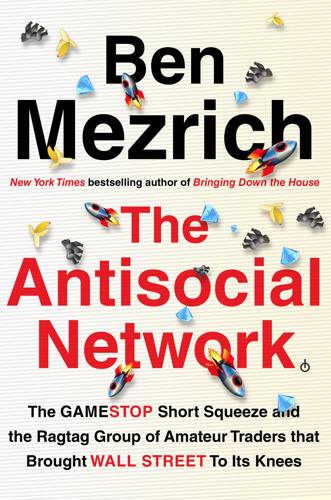
The Antisocial Network: The GameStop Short Squeeze and the Ragtag Group of Amateur Traders That Brought Wall Street to Its Knees
by
Ben Mezrich
Published 6 Sep 2021
From there, she dove headfirst into it: “Recent market volatility has put a national spotlight on institutional practices by Wall Street firms, and prompted discussion about the evolving role of technology and social media in our markets. These events have illuminated potential conflicts of interest and the predatory ways that certain funds operate, and they have demonstrated the enormous power of social media in our markets. They have also raised issues involving gamification of trading, potential harm to retail investors…” Many of her words landed like blows on Gabe’s shoulders, even though some might think them unfair. There had been nothing predatory about Melvin’s short position in GameStop. It had been a simple, uncontroversial trade. In a million years, he could not have guessed that shorting a brick-and-mortar, mall-based dinosaur with massive debt and seemingly no real plan for the future would be something he would have to defend.
…
“Look, I’m sorry for what happened,” he apologized, no longer coasting on air, but gasping for it. “I apologize. I’m not gonna say that Robinhood did everything perfect…” But this, in his words, was a 1 in 3.5 million occurrence event. “One that had never been seen before in capital markets.” He didn’t believe it had anything to do with gamification. A word which the congressmen and -women tossed at him like it was evil incarnate—ironic, considering the entire episode revolved around a mob of retail traders trying to prop up the stock of a company that existed only because of the American public’s love of games. Although Vlad wouldn’t have said it himself, if anyone had gamified Wall Street, it was the American people.

We Are Bellingcat: Global Crime, Online Sleuths, and the Bold Future of News
by
Eliot Higgins
Published 2 Mar 2021
That itself was a meme, mocking assertions that Islam is a religion of peace. The next 8chan response to the killer’s announcement was ‘Every shabbat’, ironically using the Hebrew word for Saturday to augur more violence. Nobody could call this the work of a lone gunman anymore. An element of neo-fascist terrorism that 8chan stirred is what Robert called ‘the gamification’ of mass violence.71 While billions of people have played videogames, and almost none are moved to harm others, elements of gaming culture have become incorporated into attacks. Livestreaming on a helmet cam showed the Christchurch gunman’s perspective with a weapon in hand – eerily like the view in shoot-em-up videogames.
…
doi=10.1.1.552.239&rep=rep1&type=pdf 65 www.aljazeera.com/news/2019/03/brother-muslim-worshipper-words-gunman-190315152715528.html 66 www.washingtonpost.com/world/2019/03/15/with-strobe-lights-guns-bearing-neo-nazi-slogans-new-zealand-gunman-plotted-massacre/ 67 www.bellingcat.com/news/rest-of-world/2019/03/15/shitposting-inspirational-terrorism-and-the-christchurch-mosque-massacre/ 68 www.cjr.org/analysis/christchurch-shooting-media-coverage.php 69 www.buzzfeed.com/markdistefano/the-daily-mail-let-readers-download-the-new-zealand-mosque 70 www.bellingcat.com/news/americas/2019/04/28/ignore-the-poway-synagogue-shooters-manifesto-pay-attention-to-8chans-pol-board/ 71 www.bellingcat.com/news/americas/2019/08/04/the-el-paso-shooting-and-the-gamification-of-terror/ 72 www.bellingcat.com/news/americas/2019/04/28/ignore-the-poway-synagogue-shooters-manifesto-pay-attention-to-8chans-pol-board/ 73 encyclopediadramatica.rs/High_Score 74 www.nytimes.com/2019/08/04/technology/8chan-shooting-manifesto.html 75 www.nytimes.com/2019/08/04/technology/8chan-shooting-manifesto.html 76 www.theverge.com/2019/11/4/20947429/8chan-8kun-online-image-board-shooter-gunmen-manifesto 77 twitter.com/rcallimachi/status/734053117109624836 78 twitter.com/rcallimachi/status/734053117109624836 79 twitter.com/jenanmoussa/status/734054748031160320 80 twitter.com/jenanmoussa/status/734105719612407808 81 www.bellingcat.com/news/uk-and-europe/2017/06/01/crowdsourcing-europols-stop-child-abuse-trace-object-campaign/ www.bellingcat.com/news/uk-and-europe/2017/06/15/update-crowdsourcing-europols-stop-child-abuse-trace-object-campaign/www.youtube.com/watch?
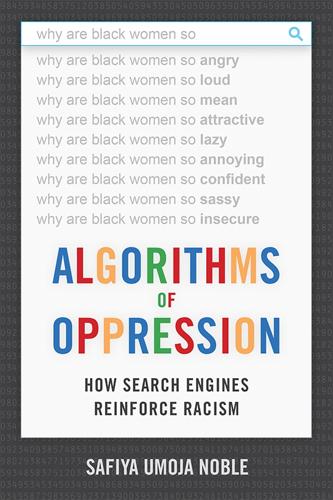
Algorithms of Oppression: How Search Engines Reinforce Racism
by
Safiya Umoja Noble
Published 8 Jan 2018
This power is particularly characteristic of the communication and information sector where the national cultural-media agenda is provided by a very small (and declining) number of integrated private combines. The development has deeply eroded free individual expression, a vital element of a democratic society.3 An increasingly de- and unregulated commercially driven Internet raises significant issues about how information is accessed and made available. This is exacerbated by the gamification of news and headlines, as Nicole Cohen of the Institute of Communication, Culture, Information, and Technology at the University of Toronto, Mississauga, has documented in her ethnography of journalists who write for online news outlets. In her book Writers’ Rights: Freelance Journalism in a Digital Age, she documents the increasing tensions between journalists and commercial news media organizations.4 In some cases, journalists are facing screens that deliver real-time analytics about the virality of their stories.
…
The economic crisis continues to disproportionately impact poor people of color, especially Black / African American women, men, and children.52 Furthermore, the gap between Black and White wealth has become so acute that a recent report by Brandeis University found that this gap quadrupled between 1984 and 2007, making Whites five times richer than Blacks in the U.S.53 This is not the result of moral superiority; this is directly linked to the gamification of financial markets through algorithmic decision making. It is linked to the exclusion of Blacks, Latinos, and Native Americans from the high-paying jobs in technology sectors. It is a result of digital redlining and the resegregation of the housing and educational markets, fueled by seemingly innocuous big-data applications that allow the public to set tight parameters on their searches for housing and schools.
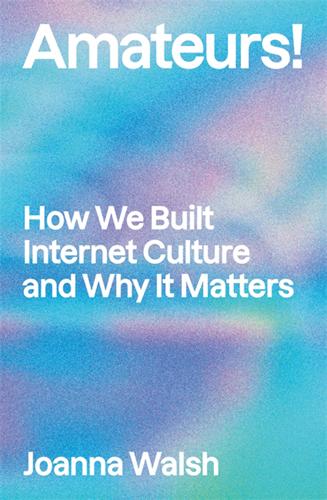
Amateurs!: How We Built Internet Culture and Why It Matters
by
Joanna Walsh
Published 22 Sep 2025
‘What if’, he suggests, ‘artistic creation today could be compared to a collective sport?’26 Sport exists at the intersection of play and work. It is a game. You might play sport, but a game is won. It has rules and is often professional. To gamify work has become a strategy for the sort of employers who demand affective labour. Gamification is itself a form of affective labour, demanding the kind of personal investment that workers more usually put into leisure activities. Ngai’s zany was originally a mime; now she’s a meme. S/he is often a man doing affective, feminised labour that blurs the boundaries between work and play – sometimes in drag, to point up the joke (Ngai drags up Richard Pryor’s performance in the movie The Toy).
…
A., 148 fascism, resurgence of, 155–6 female aesthetic expression, 166–7 female beauty, critique of the standards of, 142–3 feminine performance, of lack, 136–46, 137 feminisation, 15, 142 feminist representation, 142 Ferrante, Elena, 135–6 fiction, 95–6 truth in, 189–93 fictional people, 132 fictionalisation, 95 financial security, 210 financialisation, 213 finished product, 43 Fisher, Joseph P., 95 Fisher, Mark, 23, 48, 75, 106, 129 Flarf, 45–6 Flota, Brian, 95 folk art, 160 folksonomy, 159 form, and content, 35 Foucault, Michel, 33–4, 131, 132, 202 4chan, 31, 42, 48, 73 #gamergate, 30 fragmentation, forms of, 80 fragments, aesthetic history, 104–5 frame-breaking, 89 frames, 86–7 Frankfurt School, 155 Fraser, Nancy, 168–9, 169–70 free content, proliferation of, 3 Frere-Jones, Sasha, 83 Freud, Sigmund, 12, 57, 63–4, 66 future, the, nostalgia for, 69–73, 70 futurism, 57 #gamergate, 30 gamification, 43–4 Gardner, Drew, 46 Garrett, Marc, 22 Gates, Bill, 216 Gay, Roxanne, 195255 gaze as action, 54 and art, 127 machine, 57 male, 143 technological, 62, 72 Gebru, Timnit, 122–3, 126 gender, and race, 166 Genette, Gérard, 66 gentleman amateur, the, 7–8, 11 geographic metaphors, 219–20 Gevison, Tavi, 144–5 gig workers, 218 Gigapixel, 108 Girl with a Pearl Earring (film), 121 Girl with a Pearl Earring (Vermeer), 105, 105–7, 121–2, 124, 129–30 The Girl with the Pearl Earring (Chevalier), 121–2, 129–30 Glaze, University of Chicago project, 117 Gompertz, Will, 21 Goodman, Nelson, 210 Google, 1, 205 Ethical Artificial Intelligence Team, 122 Google Adwords, 114 Google Books, 116 Google infamy, risk of, 187–9 Goop, 137, 145 governance, 222 GPT large language model, 113 GPT NLP (natural language processing) models, 104 Greenberg, Clement, 24 Grey Academia, 154, 163 Grossman, Lev, 5 group feeling, 103 Guattari, Felix, 54, 84, 86, 98 Gyford, Phil, 57 Habermas, Jürgen, 191, 192–3 hackable environment, 87 hackers, 216–18 hacks, 219 Hall, Stuart, 169 Hallmark Cards, 21 Halter, Ed, 16–18, 21 Hammer, Barbara, 150–2 Hanisch, Carol, 198 happenings, 82, 98 Hardin, Garrett, 213 Harney, Stefano, 218 Harper, Adam, 71 Harvey, David, 151, 213 hashtag activism, 201 hate campaigns, 30, 142 hauntology, 73–6 Hebdige, Dick, 24, 93, 95, 166, 168, 171, 172 Hediger, Vinzenz, 19 Hegel, Georg Wilhelm Friedrich, 133, 206–7 Heidegger, Martin, 132–3, 136 Hepola, Sarah, 194, 194–5 Herbert, Martin, 76 Heti, Sheila, 132, 133 hinge algorithms, 1 Hirschman, Albert, 92 historical past, aesthetic colonisation of, 74–5 Holmes, Anna, 183–4 Holocaust, the, 95–6 Homebrew Computer Club, 216 ‘Homesick for a Place I’m Not Even Sure Exists’ (meme), 70 horizontal platforms, 89 Horkheimer, Max, 154–5, 160, 206 Houellebecq, Michel, 131 Hughes, Robert, 107 Huh, Ben, 29, 30, 33–4, 35, 40, 49, 51 humour, AI and, 101 hyperlinks, 147, 150 hyperobjects, 47 hysterical criticism, 182–3 hysterical realism, 182 IBM, 69 idealism, and the market, 222 identification, 10–11 identity, 137, 158 and aesthetic representation, 164, 166–71 and consumer choice, 162 contingent, 167 Fraser’s model, 168–9 marginalised political, 167–8 offline, 162256 online, 161–4, 165, 166–71, 196 political, 161 reification of, 168–9, 169–70 remaking, 16 status model, 168–9 trash essays and, 195–6 identity choice, 171 identity-in-progress, 163 image addiction, 125–6 image descriptors, 119 imaginary products, 69 immediacy, 91 inauthenticity, 73, 128 individualism, 5, 8, 16, 181, 218 Industrial Revolution, 14–15, 154 ineptitude, 18 influence, long-term, 18–19 influencers, 14, 138–42 information capitalism, 35, 211 information overload, 36 Instagram, 6, 23, 89, 90, 106, 208, 220 body-positive movement, 146 creators, 139–40 Excellences and Perfections (Ulman), 137, 138–42, 143–5, 145–6 intent, 177–8 interaction, 4–5 interest, 49 internet aesthetics, 22 internet conditions, 2–3 internet eras, 202 internet-native, aesthetics, 52 intuitive creativity, 184 Israel, targeting of Hamas members, 56 It Follows (film), 62 Jackson, Robert, 58 Jameson, Fredric, 74, 96–7, 113, 125–6, 181 Japanese economic boom, visual ephemera, 72 Jezebel (online magazine), 176, 183 incest essay, 179–80, 188–9 style, 183–4 jokes, 32 jouissance, 12 ‘Judge Dredd’ (comic strip), 93–4 judgement, 29, 183, 205 juxtapolitics, 169, 205 Kant, Immanuel, 21 and aesthetic experience, 36–7 and aesthetic judgement, 24, 29 and aesthetics, 9–10, 205 magnitudinal sublime, 37–8 Kardashian, Kim, 142 Karp, David, 55 Kiki de Montparnasse, 139 Kitay, Kat, 208–9 kitsch, 20–1, 61, 67, 128–9, 160–1 aesthetic alienation, 208 Fisher’s, 75 music, 74 nostalgia for, 75 Knapp, Steven, 34 Know Your Meme, 33–6, 36, 37 knowledge, love of, 36 Kornbluh, Anna, 91 Kottke, Jason, 55 Kristeva, Julia, 89–90, 185 Lacan, Jacques, 12, 13, 38, 147, 148 lack, feminine performance of, 136–46, 137 LAION, 118–19 Land, Nick, 91–2, 94 language, and AI art, 123–4 language use LOLcats, 39–41 racialised, 41–2 large companies, domination of the internet, 219–20 L’Arrivée d’un train en gare de La Ciotat (film), restoration, 107, 108 Lavender AI, 56 Lefebvre, Henri, 6, 14–16, 208–9, 210 legacy media, 47 aesthetics, 52 borrowings from, 41 leisure, 14–16, 45 commodified, 13 illusion of, 90 leisure/work paradigm, 15 Les Immatériaux (exhibition), 209 Lettrism, 161 libertarianism, 7 lifestyle journalism, 188 likes, 2, 28 Linux, 215–16257 Liszewski, Andrew, 108 LiveJournal, 215–16 liveness, 97 LOLcats, 27, 27–9, 50 aesthetic appreciation of, 38–41, 39 aesthetic reactions, 28 avowed triviality, 49 and content creation, 49 language use, 39–41, 42 novelty, 50 origin, 30 pleasure of, 47 production process, 28 purposive purposelessness, 44 LOLspeak, 40, 42 London, Furtherfield Gallery, 22 London Review of Books (magazine), 65, 182–3 Lonergan, Guthrie, 210–11 Lorenz, Taylor, 184 love, 218–19 low-class art, 20 lowest common denominator, estrangement with, 103 Lumière brothers, L’Arrivée d’un train en gare de La Ciotat, 107, 108 Lyotard, Jean-François, 47, 125, 209 machine gaze, 57 Macintosh Plus, 72, 78 McLuhan, Marshall, 135, 139 McNeil, Joanne, 54 Magee, Mike, 46 mainstream recognition, 20 male gaze, 143 male narratives, 11 Man Ray, 139 Marcuse, Herbert, 24, 43–4, 154–5, 166–7 Markbreiter, Charlie, 33 market, the, and idealism, 222 Martinussen, Einar Sneve, 54 Marx, Karl, 84, 206–7 mashups, 103, 105, 105–7 masses, the, fear of, 181 Massumi, Brian, 170, 208 Mbembe, Achille, 166–71 mean image, the, 119 mechanical art, 37 media technologies, 83–4 Meme Map, Web 2.0, 85, 86 memes, 53, 220 aesthetic appreciation of, 37–41 Blackface, 41–2, 42 conceptualisation, 28, 29 financial value, 30–2, 33 originators, 33–5 ownership, 32–3 snowclones, 39, 39 meming, 28–9, 29 anonymity, 30–1 memory computer, 64 locations for, 67 return to objects, 77 screen, 63–5, 66 screen memoirs, 65–9 values, 63–4 memory-leak, 64 Merleau-Ponty, Maurice, 124, 127 Meta, 115 Microsoft, 121 Minga, 157 misogyny, 30, 184 Mitchell, Elma, 147 mixtapes, 79, 83 moderators, 203–4 modern art, generative principle of, 19 modernism, 127–8, 129 modulation, 39 monetisation, 124–5 monetised production, 212–13 Moore, Marcel, 139 moral judgement, 183 morality, 178 Morton, James, 219 Morton, Timothy, 47 Moten, Fred, 218 motivation, 6 Muñoz, José Esteban, 162 Musk, Elon, 82, 200 Nakagawa, Eric, 29, 30, 40, 51 Nancy, Jean-Luc, 82, 99 narcissism, 152, 181 narrativising, of the self, 190 Nasty Nets internet surfing club, 210–11 Nedroid, 18258 net art, aesthetics, 21–2 Netflix, 44 Neukirchen, Chris, 55 Neuro-sama, 122 New Aesthetic, the, 53–9, 62, 70–1, 73, 76 New Inquiry (magazine), 33 new media, 52–4, 75 New Narrative movement, 197 New York Times Magazine (magazine), 137 New York Times (newspaper), 120, 159 New Yorker (magazine), 94 NFTs (non-fungible tokens), 32–3, 212–13 Ngai, Sianne, 23, 36, 37–41, 43–6, 198–9 aesthetic categories, 27–8, 29, 35, 37, 49, 50 on aesthetic judgment, 163 analysis of It Follows, 62 on envy, 145, 146 gimmicks, 219 Ugly Feelings, 97–8, 184 zany workers, 141, 206 Nightshade, University of Chicago project, 116, 117 9/11 Memorial and Museum, 98–9 noble picturesque, the, 60–2 noise, 93 Northwestern University, Illinois, 204 nostalgia, 57, 58, 60–2, 67 for the future, 69–73, 70 for kitsch, 75 nostalgia mode, 74–5, 76 nostalgic aesthetics, 20 Not Safe For Work, 44–5 nothing, production of, 13 Noys, Benjamin, 91–2, 93 objectification, 136–46 offline identity, 162 Olson, Marisa, 142–3, 210–11 online aesthetics, 21–2, 153 online appearance, 136–46 online choice, 137 online creations, as art, 2 online creators, professional, 3 online engagement, 3 online experience, immaterial appearance, 81 online identity, 161–4, 165, 166–71, 196 online platforms, user-friendliness, 3 online vocabulary, 220 Ono, Yoko, 141 OpenAI, 118, 204, 205–6, 209 openness, 218 open-source, 215–16 O’Reilly, Tim, 5, 86 original work, the aura of, 10, 31, 32 originators, 33–5 Other Voices, Other Rooms (Capote), 133–4 outdatedness, 52 outsourcing, 90 Ovation Technologies, 69 overexploitation, and digital commons, 213 oversupply, 33 Oyler, Lauren, 182–3, 185 Paltrow, Gwyneth, 137–8, 145 Papin sisters, the, 147, 148, 151–2 para-academic practice, 199 para-epistemophilic feeling, 36 Paraflows Urban Hacking Festival, 30 parodies, 35–6 participation, via action, 159 pastiches, 35 peer-to-peer online services, 211 people, the, 103 Percy, Walter, 39 Perec, Georges, 44 Perelman, Bob, 113 performance, 16 performance art, 82, 136–46 performative communication, 200–1 personal data, collection and sale of, 7 personal essays, 175–6, 181–2 personality, 154 Peterson, Latoya, 185 @pharmapsychotic, 108–12 photographers, 139–40 photographs, 17, 114, 140 photo-identity, 120 photorealism, 112–13 picturesque, the, 61–2, 69, 76 pile-of-poo emoji, 46, 46259 Pinterest, 208, 213 Pixels, Kane, 73–4 platform capitalism, 202–3 platform owners, 89 Plato, 7 play, 44–5, 206 pleasure principle, 12 plot-driven narratives, 172–3 poetry, 9, 46 Poetry Virgins, 147, 148 political identity, 161 political representation, 92–3 politics aestheticisation of, 143 as aesthetics, 201 Poole, Christopher, 30 poomoji, 46, 46 poor images, 60, 62 postinternet art, 142–3, 210–11 postmodernism, 72, 76, 125–6, 129 Pound, Ezra, 19 prediction, ideology of, 119–21 Presser, Shaun, 115–16 Prin, Alice, 139 print media, 5 private life, 195 pro/am division, 17 process, concern with, 56 production means of, 11 production of, 98, 217 separation from reproduction, 161 professional modes, amateur adoption, 16 professional skills, bypassing, 215 professional status, desire for, 3 professionalisation, 14 professionalism, amateurised, 1 profiles, 7 proletarian amateurs, 8, 9–10 prompt engineering, 114 Propp, Vladimir, 160 public voice, 195 public/private division, 16 purposive purposelessness, 44–5 Quaranta, Domenico, 22 race, and gender, 166 racialised language use, 41–2 racism, 41 radical naturalism, 184 radical trust, 6, 159, 205 radical we, the, 3 Rancière, Jacques on art from everyday life, 104–5 aesthetic regime, 208 on audience, 211 classical Greek spectator, 127 on dangerous classes, 26 on performance, 16 on play, 44, 49 and politics, 93, 99, 205 and risk, 19–20 rating, 139 ReadWrite, 161 readymades, 17, 31 realism, 106–7, 184 reality, 20 experience of, 10 and representation, 142 recognition, 20 Reddit, 203–4, 219 Reisner, Alex, 115 Relational Aesthetics, 18–19 remade material, 158 remix art, 43 remix culture, 79, 161 Render Me Tender (Armstrong), 125 repetition, 106, 149, 151 re-politicisation, of art, 11 representation crisis in, 92–4 and reality, 142 of women, 119 reproduction, separation from production, 161 research-based art, 35–6 retrofuturism, 57 revivalism, 76 rewards, 29 Ricoeur, Paul, 34 Riefenstahl, Leni, 177 Rights Alliance, 115 Riley, Denise, 134 risk, 18–20 RLHF (reinforcement learning from human feedback), 205–6260 romanticisation, 157 Romanticism, 103 Ronell, Avital, 136 Rosler, Martha, 147 Ruskin, John, 61–2, 69 Russell, Legacy, 97 Saito, Yuriko, 128 salaried work-time, outside of, 216–17 Sato, Atsuko, 32 Schopenhauer, Arthur, 37 sci-goth, 57 scrapbooking, 158–60 screen, the, artifice of, 10 screen memoirs, 65, 65–9 screen memory, 63–5, 66 search engine optimisers, 114 Sedgwick, Eve Kosofsky, 162, 198 self, the, narrativising of, 190 self-accounting, 134–35 self-creation, 140 self-deception, 133–4 self-identification, 162 selfies, 6, 103, 140 AI art, 108–12, 109, 110, 111, 112, 113 double sense of, 144–5 trash essays as, 187–8 self-possession, 195 self-quantification, 36 self-representation, 136–46 self-transformation, 163 sensations, 37 sensus communis, 29 September 11th terrorist attacks, 78, 94–5, 96, 98–9 servers, ecological cost of, 76–7 sexual content, 45 shareholder profits, 203 Shiryaev, Denis, 108 shock of the new, the, 107, 128 shock of the real, the, 107 Shrimp Jesus, 214, 214–15 side-hustles, 3, 9, 14 The Simpsons (TV show), 47 skeuomorphic, 53 slickness, 18, 71–2, 101 slow violence, 95 snapshots, 64–5 snowclones, 39, 39, 51–2 social art, 48–9 social contract, the, 203 social media, 6, 7, 92, 135, 161, 189–90, 221–2 social mobility, 11, 13–14 social reproduction, 206–7 Sollfrank, Cornelia, 207 @soncharm, 101, 102, 103 Sontag, Susan, 66, 177–9, 182–5 space aesthetic, 220 creation of, 222 cyber, 219 geographic metaphors, 219–20 ownership, 89 virtual, the as, 86 Spahr, Juliana, 97–8 spammers, AI and, 214 spatial metaphors, 86–7 Speaklolspeak.com, 51 spectatorship, 36 speed, metaphors of, 91–2 Speed, Mitch, 209–10 Spellings, Sarah, 173 Spike Art Magazine (magazine), 208–9 sport, 43 Spotify, 89 Squid Game (TV show), 44 Srnicek, Nick, 92 Stable Diffusion, 118–19 Stamboliev, Eugenia, 215 Stanford Institute for Human-Centered Artificial Intelligence (HAI), 123 Starobinski, Jean, 185 steampunk, 57 Stein, Gertrude, 38 StereoSet, 123 stereotypes, 10–11, 119, 123 Sterling, Bruce, 54, 55, 56–9 Stewart, Kathleen, 162 Steyerl, Hito, 9–10, 60, 62, 117, 119, 209 Stiegler, Bernard, 205, 215, 216–17, 218 Strategy (magazine), 6 Stubbs, David, 94 stuplimity, 37–38, 39–40, 42261 subcultures, 24, 166–7, 171–2, 217–18 sublime, the, 38, 47, 61, 103, 125 subreddits, 203–4 Substack, 6 suffering, engagement with, 141 suggestion and suggestiveness, strategies of, 148 Sullivan, Gary, 45–6 surface picturesque, the, 61–2, 76 surplus-enjoyment, 12–13 surplus-value, 11, 12, 13 Surrealism, 54, 161 surveillance cams, 54 SweetcrispyJesus, 154 tagging, 159 tape recorders, 83 taste, 13, 103, 128 tattoos, 171 tax, 7 taxonomy creation, 2 Tay, 121, 122 Taylor, Brandon, 190 techno-capitalist worldview, 162 technological gaze, 62, 72 technoromanticism, 209 temporo-cultural disruption, 76 Tencent, 204 terms, Jathan Sadowski, 123 TESCREAL, 126 textual meaning, 131–6 TikTok, 6, 89, 220 Time (magazine), Person of the Year, 5 time and temporality, 76, 80, 86 accelerationism, 91–9 as a medium, 91 pre-internet media, 96–7 spending, 89 time spent scrolling, 91 Tofuburger, 30 Tolentino, Jia, 176, 177, 179–80, 189, 193, 197–8 Topaz Labs, 108 Torres, Émile P., 126 Torvalds, Linus, 215–16 tradition, 80, 81 transcription, 79–80, 84, 97–8 transgression, 19–20 transmission, 79–81, 90 trash essays, 175–99 boom, 180 clickbait prurience, 183 conceptualisation, 176–7 and content, 177–81 content-as-style, 185–7 as debut writing, 177 as economic event, 194 exclusion, 183 fear of, 181 forward movement, 185–6 frame story, 194–6 hysterical criticism, 182–3 identity and, 195–6 intent, 178, 180 methodology, 198 misogyny, 184 and narcissism, 181 normalisation of, 185 and personal essays, 181–2 risk of, 187–9 as selfies, 187–8 and style, 177–80, 183–7, 197 stylelessness, 184–5 writing, 197 trust, 159 truth, 189–93, 198 tumblelogs, 55–6 Tumblr, 23, 54, 55–6, 60, 106, 208, 213 Turing, Alan, 63 Turks, 119 Twitter, 6, 89, 103, 134, 203, 220, 221 demise of, 200–2 Ugrešiç, Dubravka, 66, 67 Ulman, Amalia, 137, 138–46 Unebasami, Kari, 29, 30, 40, 51 University of Chicago, 117 University of Warwick, Cybernetic Culture Research Unit (CCRU), 94 unpaid labour, 5 unrealism, 129 user space, 86 user-friendliness, 3 user-generated content (UGC), 5–6, 16 users, need for, 90 Valéry, Paul, 127 value, 161262 Vanity Fair (magazine), 54, 57 vaporware, 69, 70 vaporwave, 69–73 doom-mongers, 74 hauntology, 73–6 revivalism, 76 vectoral aesthetic capitalism, 89–90 vectoralist classes, 213 vectors, 89 Ventura, Claude, 151–2 Venvonis, Gregory, 171–2 Vermeer, Johannes, Girl with a Pearl Earring, 105, 105–7, 121–2, 124, 129–30 Vestiaire Collective, 121 virtual, the, as space, 86 virtual commodities, 137 voices, 92–9 vulgar, the, 103, 185 vulnerability, 170 Wal, Thomas Vander, 159 walking while black meme, 19 Warhol, Andy, 31, 106 Wark, McKenzie, 89, 213, 216, 217, 219, 220 water scarcity, 209 Watkins, D., 187–8, 188–9, 196 we, use of, 3 Web 1.0, 5 Web 2.0, 4–7, 53, 161, 203, 211–13 meme map, 85, 86 Web3, 211, 212–15 what if thought, 126 white narratives, 11 Wiki software, 35–6 Wikidentities, 170 Wikipedia, 1, 153 Williams, Alex, 92 Willison, Simon, 118–19 Winckelmann, Johann Joachim, 104–5 Wired (magazine), 54 women, representation of, 119 Woods, James, 182 Wordpress, 215–16 Wordsworth, William, 9 work environment, 47 having fun at, 48–9 product of, 206–7 as safe place, 45 workers, as product, 206–7 working-class enthusiast, the, 8, 11 world building, 172–3 writing, 97–8 X, 205 Youngman, Hennessy, 211 your mom stereotype, 58–60, 62–3 YouTube, 71, 97 The Disintegration Loops (video), 81–3 zany, the, and zany workers, 43–4, 141 Žižek, Slavoj, 21 Zo, 121, 121–2 Zuckerberg, Mark, 81

Mindf*ck: Cambridge Analytica and the Plot to Break America
by
Christopher Wylie
Published 8 Oct 2019
We like to think of ourselves as immune from influence or our cognitive biases, because we want to feel like we are in control, but industries like alcohol, tobacco, fast food, and gaming all know we are creatures that are subject to cognitive and emotional vulnerabilities. And tech has caught on to this with its research into “user experience,” “gamification,” “growth hacking,” and “engagement” by activating ludic loops and reinforcement schedules in the same way slot machines do. So far, this gamification has been contained to social media and digital platforms, but what will happen as we further integrate our lives with networked information architectures designed to exploit evolutionary flaws in our cognition? Do we really want to live in a “gamified” environment that engineers our obsessions and plays with our lives as if we are inside its game?
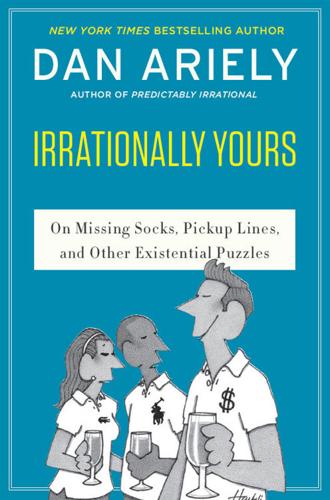
Irrationally Yours: On Missing Socks, Pickup Lines, and Other Existential Puzzles
by
Dan Ariely
and
William Haefeli
Published 18 May 2015
This feeling of progress is very important to our well-being and it provides gratification, self-esteem, and recognition from our peers. Widespread recognition of the need for progress explains why so many companies have invented titles and intermediate positions for management types (officer, executive, chief, vice president, senior vice president, deputy CEO, etc.). In a gamification-like approach companies want their employees to feel that they are making progress and moving ahead even when these steps are not very meaningful. Historically, this trend only affected those who were on the management path. Engineers remained engineers, even when their salaries increased and their responsibilities expanded.
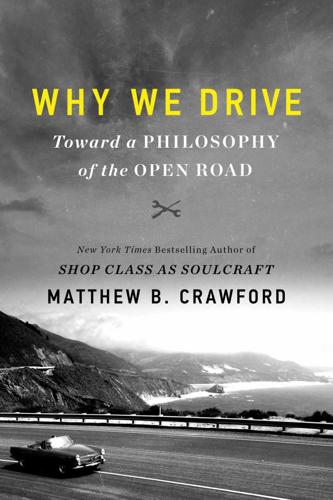
Why We Drive: Toward a Philosophy of the Open Road
by
Matthew B. Crawford
Published 8 Jun 2020
Niantic partners with businesses, allowing them to sponsor a location and generate foot traffic, “which draws players into places like Starbucks or Sprint stores.”10 Those are some supercool places, it cannot be denied. At this point, the imperative mood of the game’s name—“Go!”—begins to seem quite apt. Gamification has been recognized as a highly effective means of engineering behavior by the practitioners of “persuasive design.” We like to compete against others, and get the little rewards of winning. We may also get pulled into a quasi-autistic loop, giving ourselves over to the machine’s own logic of stimulus and response (as in slot machines and video poker terminals).11 Such rewards (in this case, collecting all 151 Pokémon characters) become the leverage points for operant conditioning, that classic means of behavior modification pioneered by B.
…
See also internal combustion engines air-cooled Volkswagens and, 16 blueprinting an engine, 148–149 cam gears, 150–151 crankshaft, 144–145, 149 dowel pins, 157–158 electroless nickel plating, 152 flywheels, 156–157 in off-road world, 205 of the Outback, 158–159 panel beating, 137 pistons, 146–147 rod caps, 147 rust and corrosion, 130–131 sunk costs, 131 timing gears, 149–151, 149 transmissions, 156 Ford Mustangs, 158 Formula D points series, 165 Foucault, Michel, 237 France, 29–30, 232 Francis, Pope, 247–248, 313 Fraser, Nancy, 76 free flow speed, 222–223 free market society, 297–298 freedom of faith, 57 freedom of movement, 10 Freeman, Kenny, 203 Freud, Sigmund, 171–172, 243 friction zone, 237 futurism, 42 Galileo, 153 gamification, 308–309 gas cans, 84–85 Gates, Bill, 293, 294 gearheads, 16, 18, 80–81, 151–152, 159 gender equity in motorcycle racing, 192–193 General Motors, 293–294, 298–299 George Washington Parkway, 222–223 German flywheels, 157 Germany autobahn network, 229–230 Berlin Auto Show, 139 driving laws, 25–26, 30, 260 Hitler, Adolf, 139–140 labor movement, 139 Reich Highway Code, 260 traffic fatalities, 260–261 girl-power affirmation, 194 The Glass Cage (Carr), 103 Glenberg, A.
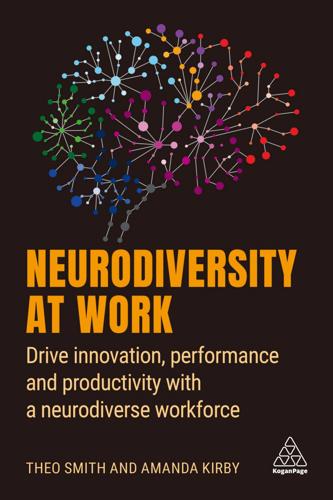
Neurodiversity at Work: Drive Innovation, Performance and Productivity With a Neurodiverse Workforce
by
Amanda Kirby
and
Theo Smith
Published 2 Aug 2021
If someone really does need more time, help or additional support, we can fail them by making it difficult to request and access. Think about if it was your relative or a close friend who was asking for an adjustment and you knew they could do the job so well! The future of assessments The way we assess candidates has the potential to change significantly in the coming years. With advances in digital technology, gamification and use of artificial intelligence and all other kinds of weird, scary and wonderful tools, this really could be the time where we drop the old and bring in the shiny and new. But we do need to be cognizant of the fact that if we keep designing the new, fashioned from the old, we are in danger of just digitizing a system and process that is already problematic and discriminatory for many.
…
We dream of a day when a candidate will be able to select between a multitude of assessments that all provide the information and validation required as part of the process but in a way that suits the candidate rather than the budget or expertise of the company conducting the interviews. Maybe we will see Virtual Reality Scenarios which allow us to test competencies and actually train people in the tasks as well. However, with every new form of assessment we need to consider if it is a fit for everyone and it is unlikely to be so. The trend towards gamification of psychometric tests doesn’t necessarily make things easier either for everyone. Between the need to both read and interpret the questions, and understand the expectations of the task, alongside managing anxiety in completing the ‘game’, and have the digital skills to do so, some candidates can perform poorly in these tests but this doesn’t necessarily translate directly to the workplace.
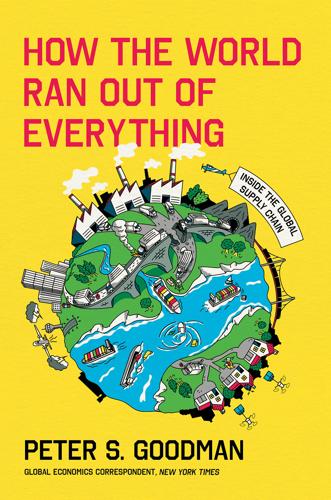
How the World Ran Out of Everything
by
Peter S. Goodman
Published 11 Jun 2024
In 2002, when he was eighteen, the church dispatched him to southern Taiwan. Shupe has since come to view the mission as a colonial enterprise draped in cultural supremacy. But he seized it as an opportunity to achieve Mandarin fluency. The experience engaged his business instincts. The church grasped the motivational powers of gamification, employing metrics of assessment—how many Books of Mormon placed, how many people enticed to the faith. “The objective was to convert,” Shupe said. “I became very competitive.” Two years later, he returned to the United States and enrolled at Brigham Young University. By the time he landed in China for an exchange semester at Nanjing University, he was eager to line up a supplier of neoprene for his business making protective sleeves for laptops.
…
An Israeli start-up, SafeMode Mobility, touted a means of limiting the turnover plaguing the trucking industry: an app that monitored the actions of drivers—their speed, the abruptness of their braking, their fuel efficiency—while rewarding those who performed better than their peers. The company’s founder and chief executive officer, Ido Levy, had conceived of the approach with a professor at the MIT Media Lab. They had tapped research on behavioral psychology and gamification. The SafeMode system was yielding savings of 4 percent on fuel while boosting retention by one-fourth, Levy told me. He displayed data captured the previous day from a driver based in Houston. His steady hand at the wheel had earned him a whopping $8 on top of his usual per mile rate. “We really convey a success feeling every day,” Levy said.
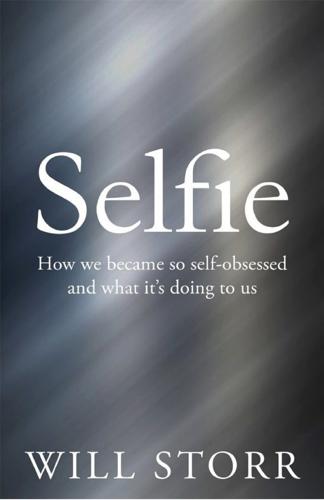
Selfie: How We Became So Self-Obsessed and What It's Doing to Us
by
Will Storr
Published 14 Jun 2017
But the ultimate goal of this neoliberal project was about much more than ending the economic chaos of the 1970s. It was the creation of a new form of human. ‘Economics are the method,’ said Thatcher, ‘but the object is to change the soul.’ And about that she was right. The most reliable way to change masses of selves, of course, is by changing the ways by which they have to get along and get ahead. The gamification of society triggered the ‘Greed is Good’ era, which represented a staggering transformation from the self of the anti-materialistic, communalistic hippies that had grown out of the mid-century’s more collective economy. This new and intensified form of competitive individualism meant less support from employers and the state, which, in turn, meant more and more pressure placed upon the individual.
…
Wired and the network of people from the Whole Earth scene ‘legitimated calls for corporate deregulation, government downsizing and a turn away from government and toward the flexible factory and the global marketplace as the principal sites of social change.’ A new order was coming: closed hierarchies of business and corporations would fall, government would shrivel, and the power of the open network, connected by computers, would free individuals to become wealthier than ever before. The gamification of human life would be dramatically intensified thanks to silicon technology. But, as with all great cultural movements, none of this would’ve taken hold in the first place if it hadn’t already resonated with something deep in the selves of the people. Theirs was a conception of tomorrow that was perfectly designed for the neoliberal self that had been cooking since the 1980s and was now, in the 1990s, greasy with self-regard.
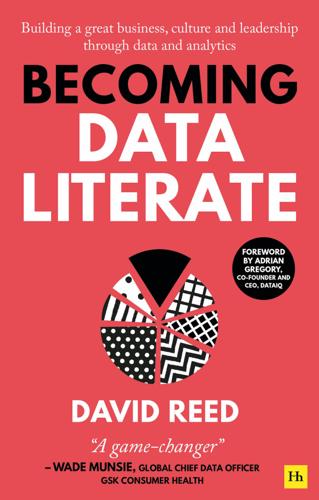
Becoming Data Literate: Building a great business, culture and leadership through data and analytics
by
David Reed
Published 31 Aug 2021
By involving lines of business in this process of prototyping, stress-testing and refining the solution, a group of advocates within the organisation was created. Principle 4 – Ease of use The MIS has been designed to be intuitive and simple to ensure it achieves high levels of adoption. There are over 400 active users globally, meaning it has embedded itself into decision-making. Principle 5 – Fun Gamification has been applied to the training programme for users, such as a quiz in which teams compete to discover features and functionality. To communicate how the MIS is supporting the company’s commercial strategy, a town hall event was run themed around the British TV programme, Blockbusters. One UK manager said of their introduction to the system, “it was one of the best meetings I’ve ever had”, while an analyst described a training session as, “a fab way to ensure everyone knows how to use a great tool!”

Age of Context: Mobile, Sensors, Data and the Future of Privacy
by
Robert Scoble
and
Shel Israel
Published 4 Sep 2013
Social Fitness Networks Wearable devices, sensors and data are weapons in a holistic war that must be fought on multiple fronts, including in the workplace and at home, and involving children, the aging population and the chronically ill. All contextual forces are, of course, involved as well. So is Andreessen’s free ice cream, in the guise of competition, gamification, rewards and plain old-fashioned bribes. Endomondo Sports Tracker uses your phone as a wearable device. It employs social networking and competition to help users get fitter. You strap your phone onto your upper arm during workouts, races, cycling and other strenuous sports. It automatically uploads your personal data to its online community site, which analyzes your results and progress.
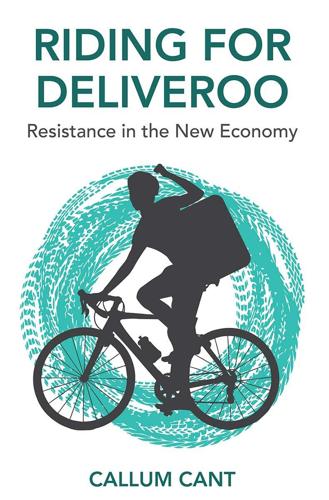
Riding for Deliveroo: Resistance in the New Economy
by
Callum Cant
Published 11 Nov 2019
You got time bonuses and scored points by picking up customers and driving them to destinations at break-neck speed, often crashing into things on the way. You’d take a minister to church, a customer to KFC, a fan to the baseball stadium, going from drop to drop for as long as you could. The intentional gamification that was built into the Deliveroo app aimed to reinforce this impression and blur the boundaries between work and play. The black box might be an authoritarian system which ordered around workers like a miniature dictator, but the user interface was shiny. At Deliveroo, the skilled element of the work was entirely based around riding.

The Musical Human: A History of Life on Earth
by
Michael Spitzer
Published 31 Mar 2021
Music can now be composed by computers using algorithms, and its outputs can pass a ‘Turing Test’ for stylistic authenticity.88 If it sounds like new Vivaldi, who needs a composer? This pessimism can be flipped on its head. Some would say that music’s interaction with technology, through electro-acoustic composition, ubiquitous computing, distributed cognition and the general ‘gamification’ of sound, actually brings back the performative element of music.89 I lamented that the fate of music across the world, and especially in the West, was a decay from participation into passive listening. Perhaps posthuman music has the potential for being more democratic, inclusive and dynamic.90 After all, wasn’t the piano, like all musical instruments that extend a body’s physical capacities, a species of technology?
…
Yi (ed.), Music, Mind, and Science (Seoul: Seoul National University Press, 1999), pp. 27–39. 87Daniel Dennett, Darwin’s Dangerous Idea: Evolution and the Meanings of Life (New York: Simon & Schuster, 1995), p. 272; Stephen Davies, The Artful Species: Aesthetics, Art, and Evolution (New York: Oxford University Press, 2012), p. 141. 88David Cope, Virtual Music: Computer Synthesis of Musical Style (Cambridge, Mass: MIT Press, 2001). 89Austin DeMarco (ed.), Gamification: Concepts, Methodologies, Tools, and Applications (Hershey, PA: Information Science Reference, 2015), p. 1333–41; Michael Austin (ed.), Music Video Games: Performance, Politics, and Play (London: Bloomsbury, 2016). 90Lawrence Kramer, ‘Classical Music for the Posthuman Condition’, in John Richardson, Claudia Gorbman and Carol Vernallis (eds), The Oxford Handbook of New Audiovisual Aesthetics (New York: Oxford University Press, 2013), pp. 39–52.
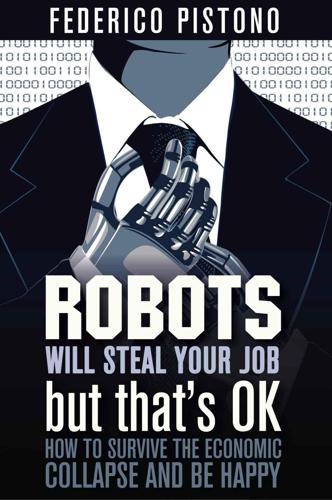
Robots Will Steal Your Job, But That's OK: How to Survive the Economic Collapse and Be Happy
by
Pistono, Federico
Published 14 Oct 2012
Not only our knowledge and expertise, but also our intellectual and creative capabilities, our ideas, and, why not, our intimacy. And always at a higher price. We will be living in virtual worlds, like Second Life, or an evolution of Facebook and Twitter. And we will spend our time selling each other digital goods with digital currencies. We already begun the gamification in many aspects of our lives, why not take it the next level? Everything is going to be a big, big game. What a bright future awaits us. Sounds absurd? Yes, I agree. But it is the only way you can keep this growth business up, without crashing into something that is not just absurd, it is also plain impossible.
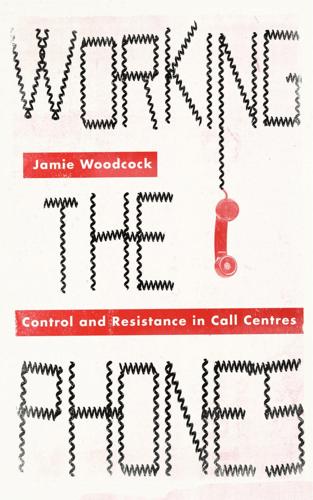
Working the Phones: Control and Resistance in Call Centres
by
Jamie Woodcock
Published 20 Nov 2016
However, one of the most popular games was finding a set of unusual words or a phrase that workers would have to fit into a call with a customer. Often this verged on the ridiculous and some of the phrases would require quite a creative approach to include in a call, for example ‘spaghetti’ or ‘giraffe’. These collective acts of workers were separate from the attempted gamification of work that supervisors pushed during buzz sessions and throughout the shift. on the phones The need to escape the boredom of the phone calls was often exacerbated by the unpleasantness of particular interactions with customers. Although it would be possible to recount a series of these there are three examples that stand out most strongly and illustrate the difficulty of making sales calls.

Silicon City: San Francisco in the Long Shadow of the Valley
by
Cary McClelland
Published 8 Oct 2018
They are shuttled to their corporate campuses—like summer camp, a world of primary colors and playgrounds and cafés and endless amusement to keep them happy at work. For them, all of life’s conveniences can be had at the push of a button; for others, they’ve got to get running every time the bell rings. The sharing economy meets modern sweatshop. The gamification of life in the city doesn’t mean everyone can afford to play. Through its history, San Francisco has stood as something like the nation’s western capital. But it has always been something of a funhouse mirror, reflecting a strange yet sublime potential self back to the rest of the nation. It bore witness to the Gold Rush, the Transcontinental Railroad, Japanese internment, the Beat poets, the free speech movement, the AIDS crisis and modern LGBTQ politics, and the birth of the semiconductor and motherboard.
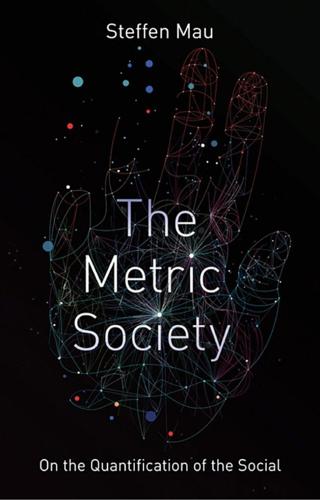
The Metric Society: On the Quantification of the Social
by
Steffen Mau
Published 12 Jun 2017
The differentiation and personalization of health data, in conjunction with ever new measuring applications, is now a triangular transaction between customer, insurer and app provider, and a far cry from the traditional trust- and confidentiality-based doctor–patient relationship. The new quantified health consciousness is stimulated via price incentives, built into daily life via gamification techniques, and continually propagated thanks to universal willing participation. Already, insurance managers are beginning to dream of the day when such status data will serve as a reputational badge of honour: ‘If someone mentions their diamond status at a party, people see them as a cool guy’ (quoted in Wanner & Fromme 2016: 19) Once quantified health status has become socially established, there are likely to be conflicts over who is allowed to use it and on what conditions.

Internet for the People: The Fight for Our Digital Future
by
Ben Tarnoff
Published 13 Jun 2022
Algorithmic management thus enables Uber and its many “gig economy” imitators to coordinate the labor of millions of workers without the need for middle managers, and with more technical sophistication than middle managers could ever achieve. Yet this is only one advantage. The other is that, by having software rather than humans telling workers what to do, and having the software use techniques like nudges and gamification, gig companies can pretend that nobody is telling the workers what to do, and therefore that they are not really workers at all. Uber refers to its drivers as “partners” or “entrepreneurs”; legally speaking, they are “independent contractors,” at least in the United States. This classification is a pillar of the gig-work business model, since it holds down labor costs by preventing firms from having to pay a minimum wage or comply with the other legal protections afforded to direct employees.
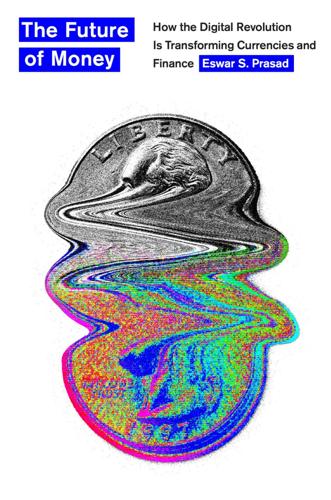
The Future of Money: How the Digital Revolution Is Transforming Currencies and Finance
by
Eswar S. Prasad
Published 27 Sep 2021
In December 2020, Robinhood paid a $65 million fine to the SEC for steering its customers’ “commission-free” trades to brokers who paid the company higher fees and executed the trades at unfavorable prices that caused customers to lose tens of millions of dollars. Around the same time, the Massachusetts securities regulator launched a legal action against Robinhood, accusing it of encouraging inexperienced investors to trade excessively using “gamification” strategies—online rewards for trading activity and other forms of engagement with the platform—and not putting in place safeguards to protect such investors. Sure enough, in early 2021, Robinhood became embroiled in the speculative frenzy around the shares of GameStop, a video game and electronics retailer, that eventually left many inexperienced investors on the platform nursing losses.
…
Not All Glitter See US Securities and Exchange Commission, “SEC Charges Robinhood Financial with Misleading Customers about Revenue Sources and Failing to Satisfy Duty of Best Execution,” news release, December 17, 2020, https://www.sec.gov/news/press-release/2020-321. The text of the Massachusetts Securities Division’s administrative complaint against Robinhood is available at Secretary of the Commonwealth of Massachusetts, Secretary Galvin Charges Robinhood over Gamification and Options Trading, December 16, 2020, https://www.sec.state.ma.us/sct/current/sctrobinhood/robinhoodidx.htm. For a report on retail investors being hurt by the GameStop saga, see Madison Darbyshire, Robin Wigglesworth, Alice Kantor, and Aziza Kasumov, “ ‘Moment of Weakness’: Amateur Investors Left Counting GameStop Losses,” Financial Times, February 5, 2021, https://www.ft.com/content/04e6c524-389b-47fc-afaa-eb52c1e76048.
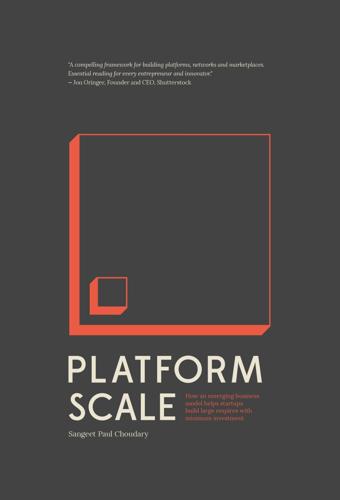
Platform Scale: How an Emerging Business Model Helps Startups Build Large Empires With Minimum Investment
by
Sangeet Paul Choudary
Published 14 Sep 2015
Some platforms may even have centralized moderators. Many rules of usage may be baked into the platform in the form of algorithms that prevent users from taking certain actions. In recent times, the importance of encouraging users towards specific actions has gained a lot of traction in the guise of gamification – an approach to make systems behave like games that encourage users to take certain actions and provide some form of reward in return. MATCH: MATCHING THE TWO SIDES WITH EACH OTHER The platform’s role as a matchmaker is central to its ability to continue creating value as it scales. Traditional agents also connect producers to consumers.
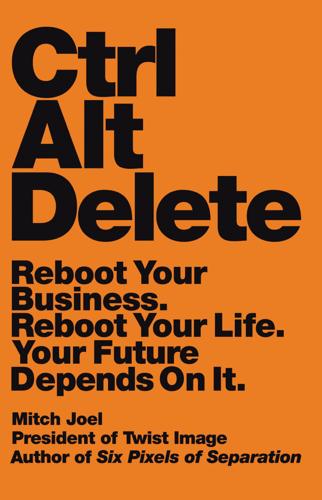
Ctrl Alt Delete: Reboot Your Business. Reboot Your Life. Your Future Depends on It.
by
Mitch Joel
Published 20 May 2013
It turns out that the breakthrough technology at last year’s SXSW was Nike’s launch and promotion of FuelBand. FuelBand is a very cool-looking lighted bracelet that measures your physical activity and awards you with Fuel (aka points). The more you move, the more fuel you are awarded (yes, Nike has figured out a way to add gamification to your daily routine). You set the amount of Fuel per day that you would ideally like to achieve, and the bracelet will notify you as to how you’re doing. It ties in with a mobile app that lets you compare and contrast your goals with others’ performances. What Nike+ did for runners, FuelBand can do for the rest of us.
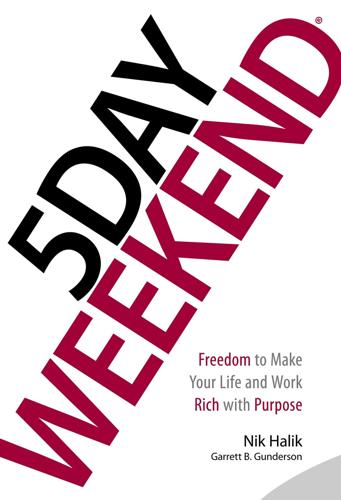
5 Day Weekend: Freedom to Make Your Life and Work Rich With Purpose
by
Nik Halik
and
Garrett B. Gunderson
Published 5 Mar 2018
Watch how this can work: Year 1 Month 1: $3,000 × 3% = $90 Month 2: $3,090 × 3% = $92.70 Month 3: $3,182.70 × 3% = $95.48 Month 4: $3,278.18 × 3% = $98.35 Month 5: $3,376.53 × 3% = $101.30 Month 6: $3,477.83 × 3% = $104.33 At six months: $3,477.83 (16% increase) At twelve months: $4,152.70 (38.4% increase) At twenty-four months: $5,920.77 (97.4% increase) This approach essentially “gamifies” your experience and gives you an incentive to keep improving over time. Each month’s returns compete with the previous month’s, thus perpetuating the gamification process. Feel free to experiment and increase by more than 3 percent per month, but do everything you can to hit that minimum. At the very least, set a specific goal for how much you want to increase your income each month. Have a specified target to shoot for versus just hoping you’ll improve.

Do Nothing: How to Break Away From Overworking, Overdoing, and Underliving
by
Celeste Headlee
Published 10 Mar 2020
“When we swipe down our finger to scroll the Instagram feed, we’re playing a slot machine to see what photo comes next.” Experts have shown that people become addicted to slot machines three to four times faster than to other types of gambling, partly because of the uncertainty involved. It’s no wonder software designers would emulate that model. Gabe Zichermann, a gamification expert, told Time magazine that many companies were trying to create a “diaper product.” Zichermann explained that the underlying concept is to “make something so addictive, [the users] don’t even want to get up to pee.” Or sleep, apparently, since the CEO of Netflix, Reed Hastings, told investors that the company’s real competition is sleep.

The Buddha and the Badass: The Secret Spiritual Art of Succeeding at Work
by
Vishen Lakhiani
Published 14 Sep 2020
Or to spot the berries on the tree. And in an age where we get our meat and berries from the corner grocery store, we get bored if we aren’t using this goal-driven component of our brains. Some turn to videogames or other hobbies to fulfill this drive, many of which use goal-attainment tactics called gamification to keep you hooked. But most people turn to their work. They are drawn to companies that allow them to work on projects so bold and inspiring, they give their life meaning. In 2013, Gallup published a poll on men who refused to retire at sixty-five and continued to work until age eighty. Its findings show that 86 percent of these men kept working because they found their work fun, while 93 percent said they kept working because they found their work meaningful.

Artificial Unintelligence: How Computers Misunderstand the World
by
Meredith Broussard
Published 19 Apr 2018
I chose the latter, which is how I found myself glued to a laptop screen on a ramshackle bus in West Virginia with twenty-seven strangers as part of a wacky computer programming competition called the Startup Bus. Because many things in Silicon Valley have been gamified, it’s no surprise that innovation has also undergone gamification. The best example of this is the innovation contest. Usually, people are motivated to innovate because of conventional financial rewards. If you write a script for a new TV show, the studio pays you to write more scripts and be involved in the show development. There’s also open innovation, in which people from outside a company develop new tools or products for a variety of altruistic or self-interested reasons.2 Then there’s the innovation competition, in which a company announces a challenge and offers a bounty for the best product or solution.
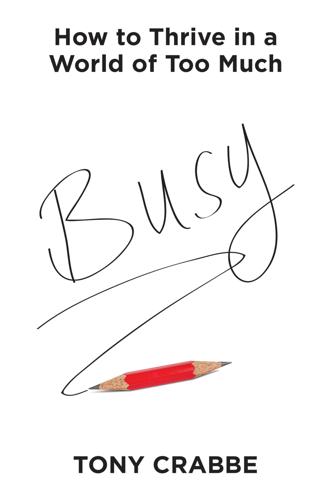
Busy
by
Tony Crabbe
Published 7 Jul 2015
: visits to sites not related to his chief work. There are some brilliant apps out there for monitoring your behavior. Or, you could simply time yourself. If you’re about to start a big piece of work, start the stopwatch! See how long you last before being distracted. Keep your time, and practice trying to beat it! Add a bit of fun and gamification to your focusing efforts. Get measuring, get focusing, get differentiating. Stop Procrastinating! Procrastination goes hand in hand with busyness. In fact, I would argue that an awful lot of busyness is procrastination. We tell ourselves that we don’t get around to doing all the things that will make a real impact because we are so busy, instead of recognizing that we are busy because we are avoiding and procrastinating.

Live Work Work Work Die: A Journey Into the Savage Heart of Silicon Valley
by
Corey Pein
Published 23 Apr 2018
The games by their very design had lessons to teach about risk and reward, about life and work as a series of progressive stages, about acquisitiveness and accomplishment and competition. Therefore it was no surprise that Silicon Valley was intent upon “gamifying” all aspects of human behavior. Corporations were spending hundreds of millions of dollars on “funsultants” who provided advice on “enterprise gamification”—filling the most menial wage labor with “fun” Pavlovian rewards and punishments. According to the futurist Ray Kurzweil, there soon “won’t be a clear distinction between work and play.” If that seems far-fetched, consider how successfully Facebook gamified friendship. Sex, too, became a game, as well as a profit opportunity, on sites like Chaturbate.
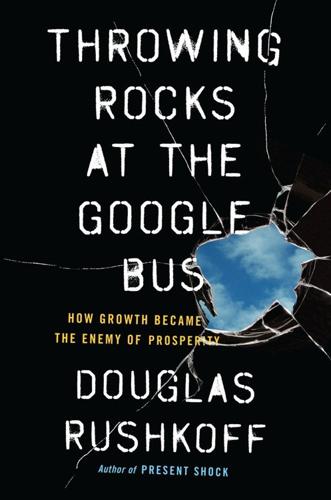
Throwing Rocks at the Google Bus: How Growth Became the Enemy of Prosperity
by
Douglas Rushkoff
Published 1 Mar 2016
I’ve sat in on more than one board meeting, watching as investors teach their young company founders about the realities of the startup landscape and why they have to shoot for the stars. Every company must become the universal solution in its vertical—or more. You are not just a personal health app; you are the platform through which all health apps will be executed! You are not just a game; you are a gamification operating system and social network! A company is not allowed to reach total dominance incrementally. Venture capital is not patient money. If a company doesn’t hit in two or three years, it’s considered cold and may as well not exist at all. So instead of developing a long-term strategy, companies make quarterly and semiannual plans—each with its own fantasy megaexit.

Nothing but Net: 10 Timeless Stock-Picking Lessons From One of Wall Street’s Top Tech Analysts
by
Mark Mahaney
Published 9 Nov 2021
At the beginning of the company’s history, consumers were offered one promotional deal a day—for example, 25% off a pizza and pasta lunch for four or 30% off flowers at the local florist—if enough consumers signed up for the deal that day. So there were a lot of great moving parts—savings for consumers, customer acquisition for local merchants (the “coupons” could be treated as marketing or advertising spend to bring in new customers), and social gamification (the deal only worked if enough people participated, which incentivized individuals to tell their friends and so on). Over time, Groupon dramatically expanded its offerings, its product lines, and its markets. It eventually overstretched and mis-executed, which caused its market cap and share price to grind down over the years.
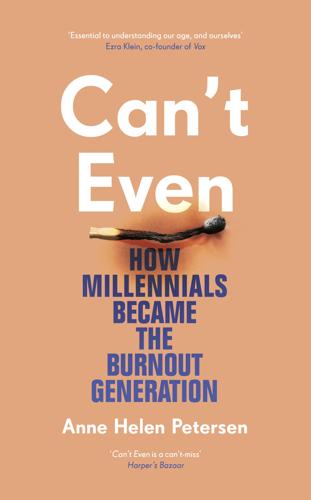
Can't Even: How Millennials Became the Burnout Generation
by
Anne Helen Petersen
Published 14 Jan 2021
Sephora didn’t alert you when you were close to a store, and Google didn’t ask you to rate your subway trip after you finished it. But without your attention—your repeated, compulsive attention—these apps would become worthless. Or, at the very least, far less valuable. So they softly urge, manipulate, and command it: through notifications, but also through gamification, which use game-like elements to draw you into otherwise very un-fun activities, like following my Delta Frequent Flyer progress. These days, the phone is where most millennials do our bank account checking, Amazon ordering, ride hailing, route finding, music playing, TikTok watching, photo taking, secondhand clothes selling, recipe finding, sleeping baby monitoring, and ticket (plane, movie, bus, concert) storing.
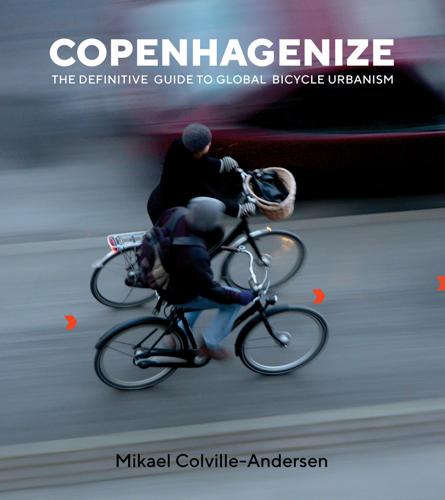
Copenhagenize: The Definitive Guide to Global Bicycle Urbanism
by
Mikael Colville-Andersen
Published 28 Mar 2018
We suggested that they make it a bit more fun, since every cyclist who stops there inadvertently uses the post for support. Why not add a joystick button that doubles as a handle to hold onto? We also thought that it might be more interesting to have these buttons located on the stretch leading to the intersection. Add a little bit of gamification and understanding of transport psychology, and have the cyclists activate the button with a smack so that they can avoid having to stop up ahead. Pre-green bike traffic light gives cyclists a headstart and keeps them safe. © Lorenz Siegel Bike boxes in Copenhagen are for maximizing the number of cyclists through a light cycle, not for turning left.

Good to Go: What the Athlete in All of Us Can Learn From the Strange Science of Recovery
by
Christie Aschwanden
Published 5 Feb 2019
Oz Show, The (television series), 100 Drew, Mick, 218–19 Drinkwater, Eric J., 272n.8 DSHEA (Dietary Supplement Health and Education Act), 181 DSR, See Denver Sports Recovery Dubai Marathon, 43 Duncan, Raleigh, 107–8 Dupont-Versteegden, Esther, 111 Durant, Kevin, 119 EEG (electroencephalography), 132–35 eGFR (estimated glomerular filtration rate), 211–13 Eichner, Amy, 178, 277n.2, 279n.16 Ekstrand, Jan, 220–21 electrical stimulation, 4–5 electroencephalography (EEG), 132–35 electrolytes, 35–36, 37, 52 electronic devices, sleep and, 143–44 elite athletes, 212, 225–26; See also specific types and events Embiid, Joel, 234 endorphins, 99, 124, 235 endurance athletes, 51–52, 75–76; See also specific types and events Endurox R4 beverage, 58–62 energy bars, 67–68 energy phase, of exercise, 60 ephedra, 181 Epsom salt baths, 254 Erdinger Alkoholfrei, 14–15 ESPN, 7, 82, 122, 166, 261n.2, 261n.3, 268n.16, 277n.4, 285n.15 E-Stim, 2 estimated glomerular filtration rate (eGFR), 211–13 European College of Sport Science, 189 Evans, Cadel, 234 exercise fatigue, 265n.19 exertion, perceived, 19, 20, 221 exertional heatstroke, 47–48 exertional hemolysis, 206 expectation effect, 243 external load, 219 Fadogia agrestis, 182 faith-based training, 192 false positives, 27–28, 173–74 Fanelli, Mike, 253–54, 256 Farb, Norman, 134, 135 far infrared radiation (FIR), 107, 109, 139–41 fascia, 3–4, 113–14 Faster than Lightning (Bolt), 68 fast food, 66–70 fatigue, 265n.19 metrics for, 217–18 overtraining syndrome and, 186–89, 197 postviral fatigue syndrome, 202 sleepiness and, 157 and stress response, 203 Fat Tire beer, 17, 19 FDA, See Food and Drug Administration fear of missing out (FOMO), 159, 162–64, 184, 210 Federal Trade Commission, 277n.3 feedback loops, 48–49, 149–51 Feynman, Richard, 26, 262n.3 fight-or-flight response, 99, 136 FIR, See far infrared radiation First in Thirst (Rovell), 35 FitBit, 133, 149 fitness trackers, 147–49 FixtMovement, 247, 248 Flanagan, Shalane, 74–76, 269n.20 Fleshman, Lauren, 249–50 float tanks, 122–26, 136–38 F.lux, 144 foam rolling, 3–4, 113–14, 244, 272n.8 FOMO, See fear of missing out food improving blood biomarkers with, 209 low-fat, 71–72 nutritional supplements vs., 172–73 quality of, 66–70 quantity of, 55–56 Food and Drug Administration (FDA), 99–100, 109, 160, 168, 179–83, 280n.23, 281n.27 Foot Locker Cross Country Championships, 186 Foster, Carl, 189, 190, 195, 197 Foster-Hylton, Brigitte, 69 Foxhoven, Bunny, 211, 213 Framingham Heart Study, 208 Free, H. James, 263n.2 functional overreaching, 190 Funny or Die, 143, 275n.2 Gabbett, Tim, 283n.9 gamification, 133 Garden of Life, 165 Garfield Grumble race, 11–13, 86 Garmin, 216–17 Gatlin, Justin, 96 Gatorade, 64, 76, 263n.2 “Be Like Mike” ad campaign for, 32–33 Amby Burfoot study for, 41–44 development of, 33–37 Endurox R4 vs., 59 hydration guidelines from, 66 postexercise refueling with, 62, 67 and sports drinks market, 38, 47, 53 Gatorade Sports Science Institute (GSSI), 36 Gebrselassie, Haile, 43 gender differences, in beer study, 20–21, 30 Georgia Tech, 34 “Get Me Off Your Fucking Mailing List” (Mazières), 174 GlaxoSmithKline, 37 glycogen, 16, 59, 64–65, 77 GNC Pro Performance® Amp Amplitude Wheybolic Extreme 60TM Original, 160–61 Goethe University, 113 Golden State Warriors, 71, 119, 122 Graves, Ray, 34 Griffith University, 263n.5 group training, 196 GSSI (Gatorade Sports Science Institute), 36 Gumbel, Bryant, 279n.20 gymnasts, training metrics for, 203–4 Hagen, Joshua, 136–37 half-Ironman triathlon (2016), 176 Hall, Ryan, 185–89, 191–95, 224, 274n.6, 281n.1 Halson, Shona, 89–91, 110, 117, 157–59, 190–91, 234, 270n.15 Hamblin, James, 245 Hamilton, Tyler, 176, 278n.11 hamstrings, 4–5 Hardy, Jessica, 176–77 Harris, Manny, 96 Harvard Medical School, 46–47 Hatch, Orrin, 281n.28 Hatfield, Disa L., 272–73n.8 Hawaii Ironman, 192, 193 Headspace, 131, 135 Healey, Kellie C., 272–73n.8 healing, icing/inflammation and, 83–87 Health Professions Council of South Africa, 265n.19 heart rate, 120, 193, 215–16 heart rate variability (HRV), 216, 223–24 heat, 104–8 heatstroke, 45, 47–48 hemolysis, exertional, 206 Henderson, Neal, 196–97, 249 Heneghan, Carl, 38–41, 264n.13 Henry Ford Sleep Disorders and Research Center, 145, 146, 149, 158 hepatitis, 280n.25 Herbalife Ltd., 165, 277n.3 Herron, Camille, 229–32, 255–56 Hew-Butler, Tamara, 49, 265n.30 Hicks, Thomas, 15 Hoffman, Bob, 171–72 Hoffman, Martin, 51–52, 242, 277–78n.7 Hoffman’s High-Proteen, 172 Holmes, Baxter, 70–71 homeostasis, 67, 78 Houston, Texas, airport in, 240–41, 256 Houston Rockets, 70–71 Houston Texans, 144 HRV (heart rate variability), 216, 223–24 HRV Fit Ltd., 216 hunger signals, 74–76 Hunt, Jeff, 223–24 Hurricane Sandy, 281n.3 hyaluronic acid, 114 hydration, 32–54 “Be Like Mike” ad campaign, 32–33 blood tests and, 213 body weight and dehydration, 44–52 Amby Burfoot study for Gatorade, 41–44 Gatorade’s development, 33–37 sports drink effectiveness studies, 37–41 thirst as indicator of, 52–54 Hyndman, Kelly Anne, 48 hyperbaric chamber, 2, 105 hyponatremia (water intoxication), 45–47, 49, 54 IAAF (International Association of Athletics Federations), 281n.2 IBM, 205 ibuprofen, 236, 237, 253–54 Iced!

On the Edge: The Art of Risking Everything
by
Nate Silver
Published 12 Aug 2024
GO TO NOTE REFERENCE IN TEXT directly from Robinhood: “What’s Margin Investing?,” Robinhood, robinhood.com/us/en/support/articles/margin-overview. GO TO NOTE REFERENCE IN TEXT some of these animations: Maggie Fitzgerald, “Robinhood Gets Rid of Confetti Feature amid Scrutiny over Gamification of Investing,” CNBC, March 31, 2021, cnbc.com/2021/03/31/robinhood-gets-rid-of-confetti-feature-amid-scrutiny-over-gamification.html. GO TO NOTE REFERENCE IN TEXT much higher volumes: Nathaniel Popper, “Robinhood Has Lured Young Traders, Sometimes with Devastating Results,” The New York Times, July 8, 2020, sec. Technology, nytimes.com/2020/07/08/technology/robinhood-risky-trading.html.
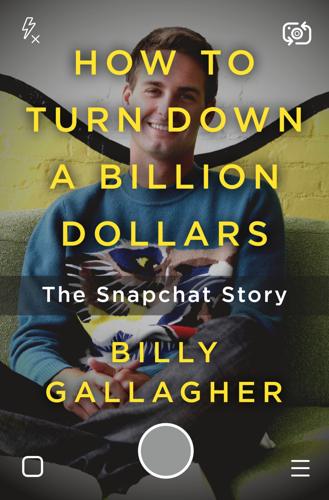
How to Turn Down a Billion Dollars: The Snapchat Story
by
Billy Gallagher
Published 13 Feb 2018
The biggest and fastest growing team was monetization, a very broad team that handled anything Snapchat could use to make money. The messaging team worked on the actual process behind sending Snapchat photos, videos, and the chat product to make it the best possible way to communicate with friends. The broadcast team handled Snapchat Stories. The identity team focused on users’ little profiles and created gamification features like emojis next to a friend’s name that denoted if they were your “best friend” on Snapchat (based on who you snapped the most) or how many consecutive days you two had a “streak” (sending Snapchats back and forth). The camera team focused on making Snapchat “the world’s camera” by adding enhancements like zooming on video and fun creative tools.

Radical Markets: Uprooting Capitalism and Democracy for a Just Society
by
Eric Posner
and
E. Weyl
Published 14 May 2018
Recent research suggests that the rise of video gaming is an important cause of the decline in labor force participation among young men.50 Given current attitudes toward such activities, it seems plausible that such young men, some of them Internet trolls or bullies, may have a less than healthy relationship to the broader society. Most people derive a sense of self-worth from making a contribution to society. In a world where individual digital contributions were appropriately valued by society, many video gaming young men could convert their enjoyment of gaming into a productive skill. Given the trend toward the “gamification” of many productive tasks, it is not hard to imagine that the skills these young men have acquired in their life as gamers might help them earn a living if data were treated as labor. The untapped capacity of expert gamers deserves more respect, and more attempts at harnessing it for the social good, than it receives today.
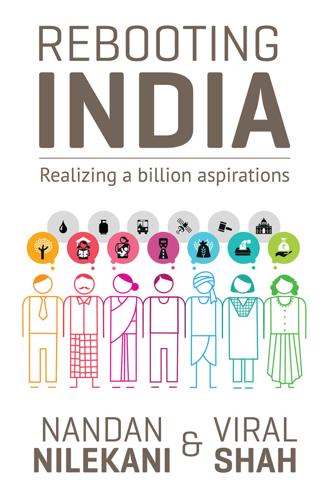
Rebooting India: Realizing a Billion Aspirations
by
Nandan Nilekani
Published 4 Feb 2016
To this end, Nandan and his wife Rohini have funded a not-for-profit initiative called EkStep, whose goal is ‘to create a learner-centric technology-based platform to improve applied literacy and numeracy for 200 million-plus children in five years’. Children learn better when their lessons are engaging, interactive and fun; to this end, EkStep plans to gamify the basic concepts of literacy and numeracy, turning them into engaging content that can be offered on smart devices like tablets or smartphones. ‘Self-learning through gamification’ is the mantra here—children can assimilate knowledge at their own pace, in a format which is simple and entertaining. This kind of learning can take place both in schools and outside them, allowing students to consume ‘bytes’ of individualized learning, much like the Khan Academy model. The child-friendly EkStep user interface will be supported by collaborative content and a scalable technology platform, which can be distributed through multiple channels.

The Road to Conscious Machines
by
Michael Wooldridge
Published 2 Nov 2018
At the most basic level, our AI-based healthcare systems can provide impartial advice on managing our health. This is, in some sense, what devices like Fitbit already do – they monitor our activity, and can also set us targets (the ‘10,000 steps a day challenge’ is one obvious, very successful example). Experience suggests that we can improve people’s compliance with such targets through gamification – turning the targets into competitions or games, perhaps involving social media. Mass-market wearables are in their infancy, but there are plenty of indications of what is to come. In September 2018, Apple introduced the fourth generation of its Apple Watch, which included a heart monitor for the first time.
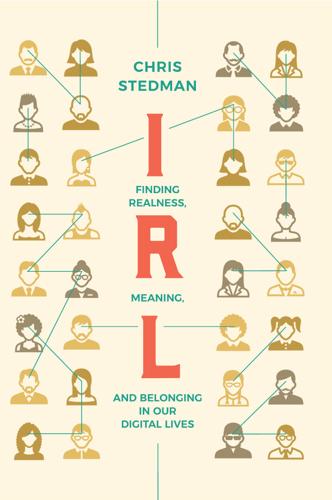
IRL: Finding Realness, Meaning, and Belonging in Our Digital Lives
by
Chris Stedman
Published 19 Oct 2020
The randomness and evasiveness of digital social approval—the fact that some tweets go viral but others don’t, that the moment you think you figure out the rules they change—can keep you hooked, chasing the initial feeling it gave you. But there are also real digital communities engaging in deep play, like Merisa’s online games or the deep bonds I’ve forged by cracking jokes and creating memes in that group Twitter DM—the kind of play that leaves you feeling satisfied, as opposed to the passive play of digital gamification that keeps you mindlessly feeding in quarters and wasting your time. In The Ethics of Authenticity, Charles Taylor suggests that “views that portray us as totally locked in and unable to change our behavior short of smashing the whole ‘system’ . . . [are] wildly exaggerated.” We may not need to smash it, but the system does need transforming.

Augmented: Life in the Smart Lane
by
Brett King
Published 5 May 2016
Look at the calories burned on that particular day—4,065…from just walking. That’s more than a pound’s worth of calories (3,500) torched while I walked on my treadmill desk, and everywhere else I could.” Figure 5.2: Apps like Vivofit use peer-based rankings to gamify your physical activity. Gamification through peer-group competition or comparison can be a very powerful motivator, as can competing against yourself to improve. This is a core element of the quantified self that we now recognise as a powerful behavioural imperative. Quantifying the Role of Sleep Most people are shocked to discover how often their sleep is interrupted during a typical night’s slumber.
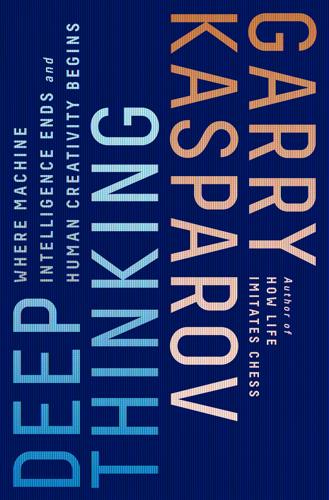
Deep Thinking: Where Machine Intelligence Ends and Human Creativity Begins
by
Garry Kasparov
Published 1 May 2017
The talent is out there; people only need the tools to express it. Chess sneaks through the cracks of cultural, geographic, technological, and economic barriers, disguised as an innocuous pastime. Again and again, it serves as a model for everything from artificial intelligence to online gaming to problem solving and gamification in education. The boom in young Grandmasters and how they think should serve as an example for traditional education as well, with similar cautions. Kids are capable of learning far more, far faster, than traditional education methods allow for. They are already doing it mostly on their own, living and playing in a far more complex environment than the one their parents grew up in.
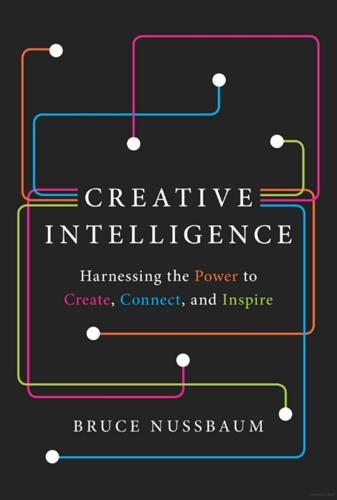
Creative Intelligence: Harnessing the Power to Create, Connect, and Inspire
by
Bruce Nussbaum
Published 5 Mar 2013
SuperBetter is designed to help players build up the resilience necessary to meet personal goals through the completion of a series of quests. You can customize your own quest or choose from a number of goals such as losing weight, learning to meditate, or recovering from an injury. Though a passionate believer in games’ ability to help us better weather life’s challenges, McGonigal warns against forced “gamification.” “I don’t think anybody should make games to try to motivate somebody to do something they don’t want to do,” she said in a New York Times article written by Bruce Feiler. “If the game is not about a goal you’re intrinsically motivated by, it won’t work.” And so SuperBetter’s brightly designed site offers players a number of choices at every level of the game about which goals to set, which quests to embark upon, what activities or friends to turn to when they need a boost.
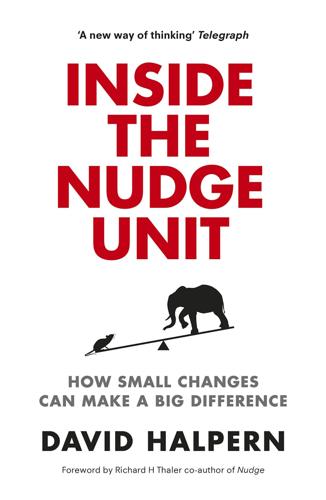
Inside the Nudge Unit: How Small Changes Can Make a Big Difference
by
David Halpern
Published 26 Aug 2015
For example, there is interesting ongoing work on whether curiosity could be an effective motivator to get people going to the gym more often, or to turn up for medical appointments. Would you be more likely to keep an appointment if it came with a couple of interesting questions to which the answers would be given at the surgery, or if you were told that a previous patient had left a message for you to collect (and that you might leave one for someone else)? Gamification is another area of ongoing interest, with games and video content aimed at: encouraging people to exercise more; teaching kids maths; addressing prejudice and extremism; helping with career choices; and reducing drug and alcohol abuse in the army. Conclusion – attract! In the previous chapter we saw how reducing friction is a potent way of clearing the path to ‘make it easy’ for people to do something that they probably already intended to do, but hadn’t got around to.
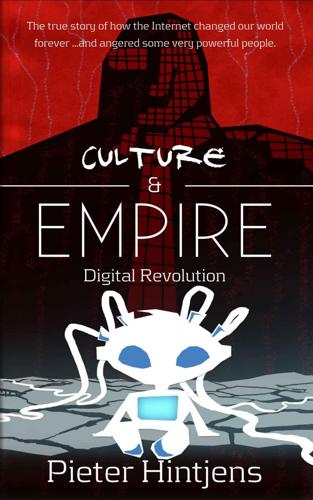
Culture & Empire: Digital Revolution
by
Pieter Hintjens
Published 11 Mar 2013
Contributing to ZeroMQ can land you a good job. Reddit, like many sites, uses "karma" that shows how many votes a profile got for its posts and submissions. It works pretty well. Some sites don't show all karma in order to stop people playing the system to just get a higher score. Some sites, like StackOverflow, have taken "gamification" to an extreme level, with badges, high scores, achievements, and so on. I think this is manipulative and distorts the mission of the community. People should be contributing because they need the project to succeed, not to earn toy points. Having said that, social credit -- making groups of strangers happy -- is enormously satisfying and does not pollute the planet.

Deep Medicine: How Artificial Intelligence Can Make Healthcare Human Again
by
Eric Topol
Published 1 Jan 2019
One of the leaders in this field is Theresa Marteau at Cambridge University, who points out that we stop swimming when we see a sign warning of shark-infested waters, but we don’t respond to warnings for lifestyle improvement.51 She and many other leaders contend that changing behavior requires targeting unconscious mental processes, the subtle, physical cues that shape our behavior—the nudges. We have yet to find the effective nudges that will durably change one’s health habits, despite such tactics as financial or other incentives, gamification, or managed competitions. But we’re getting better at using models to predict both online and offline behaviors, which may prove useful for identifying which people will likely be responsive or refractory.52 To think that the pinnacle of the machine era for promoting health could be undone by human nature is sobering.

New Laws of Robotics: Defending Human Expertise in the Age of AI
by
Frank Pasquale
Published 14 May 2020
Skinner Foundation, 2003), PDF. 19. Audrey Watters, “Teaching Machines,” Hack Education (blog), April 26, 2018, http://hackeducation.com/2018/04/26/cuny-gc. 20. Natasha Dow Schüll, Addiction by Design (Princeton: Princeton University Press, 2012). 21. Rowan Tulloch and Holly Eva Katherine Randell-Moon, "The Politics of Gamification: Education, Neoliberalism and the Knowledge Economy," Review of Education, Pedagogy, and Cultural Studies 40, no. 3 (2018): 204–226. 22. Tristan Harris, “How Technology Is Hijacking Your Mind—From a Magician and Google Design Ethicist,” Medium, May 18, 2016, https://medium.com/swlh/how-technology-hijacks-peoples-minds-from-a-magician-and-google-s-design-ethicist-56d62ef5edf3#.ryse2c3rl. 23.

The Job: The Future of Work in the Modern Era
by
Ellen Ruppel Shell
Published 22 Oct 2018
some employers are turning to a new approach, “recrutainment” Subhadra Mitra Channa, “Conclusion: Redefining the Feminine,” in Gender in South Asia: Social Imagination and Constructed Realities (Cambridge: Cambridge University Press, 2013), 184–209, http://dx.doi.org/doi:10.1017/cbo9781107338807.008. such attributes as emotional intelligence Dr. Halfteck is not alone in this observation. See Oliver Korn et al., “Defining Recrutainment: A Model and a Survey on the Gamification of Recruiting and Human Resources,” in Advances in the Human Side of Service Engineering, ed. Louis E. Freund and Wojciech Cellary, Advances in Intelligent Systems and Computing 601 (Cham, Switzerland: Springer, 2018), 37–49, http://dx.doi.org/doi:10.1007/978-3-319-60486-2. there’s scant evidence that games Rachel Martin, “Could Video Games Be the Next Job Interview?
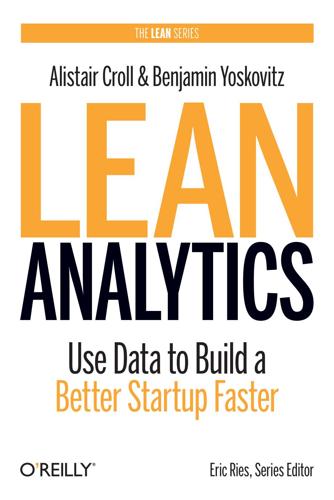
Lean Analytics: Use Data to Build a Better Startup Faster
by
Alistair Croll
and
Benjamin Yoskovitz
Published 1 Mar 2013
Why Will It Make Things Better? You can’t build a feature without having a reason for building it. In the Stickiness stage, your focus is retention. Look at your potential feature list and ask yourself, “Why do I think this will improve retention?” You’ll be tempted to copy what others are doing—say, using gamification to drive engagement (and in turn retention)—just because it looks like it’s working for the competition. Don’t. Qidiq ignored common wisdom around the sign-up process and the creation of a mobile app and quadrupled engagement. It’s OK to copy existing patterns, but know why you’re doing so. Asking “Why will it make it better?”

The Patient Will See You Now: The Future of Medicine Is in Your Hands
by
Eric Topol
Published 6 Jan 2015
A cocoon above the patient’s head, called the patient ribbon, is meant to block out unwanted noise. A halo light box can be programmed for mood or light therapy. A footwall with a large screen provides both entertainment and video consultation with doctors. Rubber floors and Corian solid room surfaces serve to reduce the risk of infection. Also included is gamification and managed competition—the stats of the doctors and nurses are tracked to determine who helped the most patients in a given day. Then the critics weighed in. Wired magazine described it as “the nicest hospital you will never visit” with design features that “make it feel like an iPhone.”23 The architect Benjie Nycum ripped the design apart for not including any input from patients.24 He stressed the importance of building a “patient environment that supports and promotes the individual’s physical, emotional and psychological healing” and that “being efficient, cost-effective and minimizing the incidence of hospital-acquired infections should be the framework for patient-centered design.

Nothing Personal: My Secret Life in the Dating App Inferno
by
Nancy Jo Sales
Published 17 May 2021
“Nobody joins Tinder because they’re looking for something”—meaning a relationship. “They join because they want to have fun. It doesn’t even matter if you match because swiping is so fun.” The goal of behavioral design theory is to make people change their attitudes to match their behaviors. And so the gamification of dating meant that dating was no longer an activity to be taken seriously—no responsibilities, no expectations, just the fun of instant gratification. It was after enough users became sufficiently addicted to this type of fun that Tinder started charging for its services. In 2015, the company began limiting the number of free daily right swipes to around a hundred for users who didn’t buy into the new premium service, Tinder Plus, at $9.99 a month for users under thirty years old and $19.99 for those thirty and above.
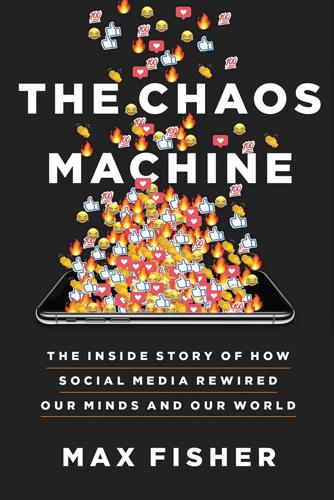
The Chaos Machine: The Inside Story of How Social Media Rewired Our Minds and Our World
by
Max Fisher
Published 5 Sep 2022
“We’re making a blue-ocean bet that social is just beginning,” Gordon said at the unveiling, flanked, in a show of Kleiner’s power, by Mark Zuckerberg and Jeff Bezos. Gordon’s presence reflected a then-widespread belief: the social media industry would operate like the video game business. Gordon told an industry conference a few months later that there were “three themes that you CEOs need to master,” listing mobile, social, and, with a fist pump, “gamification.” From the beginning, social media platforms borrowed heavily from video games. Notifications are delivered in stylized “badges,” which Gordon told the audience could double a user’s time on site, while likes mimic a running score. This was more than aesthetic. Many platforms initially considered gamers—tech obsessives who would surely pump hours into this digital interface, too—to be a core market.
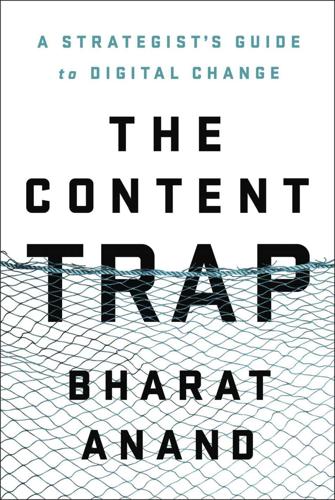
The Content Trap: A Strategist's Guide to Digital Change
by
Bharat Anand
Published 17 Oct 2016
To address these challenges, we started with a simple design: Course materials were broken down into discrete lesson pages, and discussion boards were “local” to every page on the platform. Questions on a page could be triggered only by that page’s content. It was a small feature, but it encouraged peer interaction by making search easier. Then, we added explicit incentives. “Gamification” had increasingly populated the online world. The idea there was to reward participants for particular behaviors. Sometimes incentives worked well; other times they seemed gimmicky. But online education had one advantage over gaming and media companies: Participants received grades. So we decided to tie grades to participation.
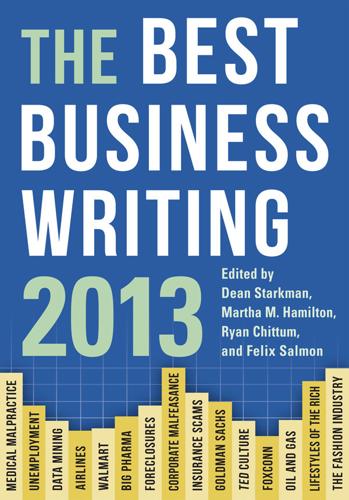
The Best Business Writing 2013
by
Dean Starkman
Published 1 Jan 2013
Along with a running pageview count, these plaudits are visually represented on a writer’s profile page. Medals are delineated into seven “gem levels” based upon an article’s popularity: bronze, silver, gold, platinum, sapphire, ruby, and diamond. In the world of social media, steering contributors toward desired behaviors via virtual bling is called “gamification.” It’s not unlike visitors to an animal-centric website being allowed to spiff up their profiles with cute avatars—but only after they leave a requisite number of comments. “Within the Bleacher Report community, [medals and badges] are a point of pride,” says one writer. “It’s hard not to feel like you’re getting somewhere if you have a bunch of badges.

Nexus: A Brief History of Information Networks From the Stone Age to AI
by
Yuval Noah Harari
Published 9 Sep 2024
Christopher Parsons et al., “The Predator in Your Pocket: A Multidisciplinary Assessment of the Stalkerware Application Industry,” Citizen Lab, Research report 119, June 2019, citizenlab.ca/docs/stalkerware-holistic.pdf; Lorenzo Franceschi-Bicchierai and Joseph Cox, “Inside the ‘Stalkerware’ Surveillance Market, Where Ordinary People Tap Each Other’s Phones,” Vice, April 18, 2017, www.vice.com/en/article/53vm7n/inside-stalkerware-surveillance-market-flexispy-retina-x. 42. Mejias and Couldry, Data Grab, 90–94. 43. Ibid., 156–58. 44. Zuboff, Age of Surveillance Capitalism. 45. Rafael Bravo, Sara Catalán, and José M. Pina, “Gamification in Tourism and Hospitality Review Platforms: How to R.A.M.P. Up Users’ Motivation to Create Content,” International Journal of Hospitality Management 99 (2021), article 103064, doi.org/10.1016/j.ijhm.2021.103064; Davide Proserpio and Giorgos Zervas, “Study: Replying to Customer Reviews Results in Better Ratings,” Harvard Business Review, Feb. 14, 2018, hbr.org/2018/02/study-replying-to-customer-reviews-results-in-better-ratings. 46.

Fall; Or, Dodge in Hell
by
Neal Stephenson
Published 3 Jun 2019
She was referring to one of the local tech philanthropists, an entrepreneur who had been involved in an early cryptocurrency venture that had somehow managed to grow into a serious financial institution. “The same.” “Forgive me for asking a dumb question, but why would a brain institute hire video game programmers?” “Gamification,” Zula said. “Yes,” Corvallis said, “it’s kind of a long story and I would be happy to fill you in. But the bottom line is that scientists have identified certain problems that are very difficult for computers to solve but easy for humans. If you can turn those problems into a fun game, then you can get lots of people on the Internet solving them for free.